Paul Finch's Blog, page 12
June 24, 2018
Heck's timeline so far, career and love life
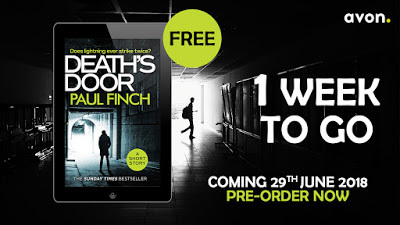
I’m going to be talking almost solely about my main cop character, Heck, this week. His background, the timeline of his life and career to date, and some of his forthcoming adventures, such as in the novel, KISS OF DEATH (out in August), and in the novella, DEATH’S DOOR (out next Friday, FREE, hence the unashamed advert just above).
But I say almost solely, because as usual, I will also be reviewing and discussing, in some considerable detail, another piece of dark fiction that I’ve recently read and enjoyed, and today, sticking with the murder detective theme, that’s going to be Tony Parsons’ very intriguing, London-set crime thriller, THE HANGING CLUB.
If you’re only here for the Parsons review, that’s fine. As is normally the way, you’ll find it at the lower end of today’s blogpost. Just skip on down there straight away. But if you can give me a minute or two, perhaps you’ll be interested in letting me take you through the Heck timeline.
Who he is
Mark ‘Heck’ Heckenburg is the star of six of my crime novels to date, with a seventh, KISS OF DEATH , due for publication on August 9 this year. He has also appeared in two novellas thus far, with a third, DEATH’S DOOR , due out, as already mentioned, next weekend.
 I’ve already written a lot about the character, what kind of personality he is, where he gets his traits from, who in real life – if anyone – influenced his creation. But it’s recently occurred to me – and I only realised this when someone asked me the other day – that I’ve never sat down and tabulated his chronological timeline. I’ve never listed the order of events in his home-life and career that have led up to the place where we are now.
I’ve already written a lot about the character, what kind of personality he is, where he gets his traits from, who in real life – if anyone – influenced his creation. But it’s recently occurred to me – and I only realised this when someone asked me the other day – that I’ve never sat down and tabulated his chronological timeline. I’ve never listed the order of events in his home-life and career that have led up to the place where we are now.On reflection, it quickly became apparent that, were I to do this, it would serve as an ideal reference point for me as well as for my readers. I too get lost in the woods sometimes, when I’m trying who remember Heck was with at such and such a time, what he was doing, where he was based, and so forth.
So here we are.
It’s only a thumbnail sketch, of course. I’ve not got the time or space to give you a chapter and verse biography. But here is the main order of developments in the life of Mark Heckenburg, from the moment of his birth to the commencement of KISS OF DEATH .
(But first, a quick warning: take some my dates and the like with a slight pinch of salt. That’s not because I’m unsure about them, it’s because when you’re writing a character who is part of a franchise, their natural ageing process can sometimes become inconvenient. Take James Bond, for instance. To us he’s Daniel Craig, aged somewhere in his mid 40s and still lean and fit, but if Bond was a real person who was born when Ian Fleming originally said he was, he’d now be in his late 80s and without doubt the oldest and most decrepit MI6 agent still in service. Now, obviously we don’t want that, so to us these paragons of fictional heroism must, at some point become, inexplicably but pleasingly ageless. We’re not at that stage with Heck yet, I’m glad to say, but just bear in mind – if he goes on and on into the distant future, there will come a time when we have to start playing fast and loose with ages, dates and so forth – but as I say, and I reiterate, that’s NOT the case at present).
Heck – the timeline
WARNING – if you’ve not read any of the Heck books yet but plan to, and you’d prefer an unfolding story, with information gradually emerging as you progress from volume to volume, then this timeline will definitely contain some SPOILERS …
Mark Heckenburg was born on January 9 1977 in Bradburn, a Lancashire coal-mining town on the northwest edge of the Greater Manchester conurbation. The third child of a factory worker, George Heckenburg and his wife, Mary, he had an older brother by three years, Tom, and an older sister by six, Dana.
 Mark had a traditional working-class upbringing, the family never moving from their terraced house on Cranby Street, in the St Nathaniel’s quarter of Bradburn, a district known as the Old Town and centred around St Nathaniel’s Roman Catholic Church, which they attended every Sunday and where Mary Heckenburg’s younger brother, Pat McPhearson, was the parish priest.
Mark had a traditional working-class upbringing, the family never moving from their terraced house on Cranby Street, in the St Nathaniel’s quarter of Bradburn, a district known as the Old Town and centred around St Nathaniel’s Roman Catholic Church, which they attended every Sunday and where Mary Heckenburg’s younger brother, Pat McPhearson, was the parish priest.Another fixture in the Old Town was St Nathaniel’s Amateur Rugby League Club, where Mark excelled as a junior player, becoming a schoolboy superstar who was soon deemed good enough to turn professional. His teenage lifestyle came to reflect this, the swaggering youngster hanging out with a bunch of roughneck mates, who loved sport, drank lots of beer and chased the girls.
For all these reasons, George Heckenburg was deeply proud of his youngest son (even though Mark’s education was being neglected), regarding him as a true chip off the old block. George was less enamoured of the older boy, however. Tom, a hippyish metal-head, was studious initially, but threw it all away when he entered 6th form college, got into drugs, dropped out and turned to petty crime in order to feed his habit. All through this difficult time, George Heckenburg punished his eldest son in repeated, heavy-handed fashion, but failed to get him the professional help he needed.
The difficult situation deteriorated rapidly, until it finally turned into a disaster that would change all their lives permanently. It was 1992 and Mark was still only 15, when Tom, by now 18, was arrested on suspicion of being the Bradburn Granny Basher.
 In short, a violent burglar had been attacking old people in their homes, stealing what few valuables they possessed, and beating them half to death in the process. Tom Heckenburg, a regular burglar of business premises – but NOT the Granny Basher – was framed for these crimes by a bent police team desperate to get a result, subsequently convicted and sentenced to life imprisonment. A drug-addled weakling, he was simply unable to endure what followed, getting raped and assaulted repeatedly by fellow inmates, and eventually, later that year, taking his own life in the prison showers by slashing his wrists and groin.
In short, a violent burglar had been attacking old people in their homes, stealing what few valuables they possessed, and beating them half to death in the process. Tom Heckenburg, a regular burglar of business premises – but NOT the Granny Basher – was framed for these crimes by a bent police team desperate to get a result, subsequently convicted and sentenced to life imprisonment. A drug-addled weakling, he was simply unable to endure what followed, getting raped and assaulted repeatedly by fellow inmates, and eventually, later that year, taking his own life in the prison showers by slashing his wrists and groin.The Heckenburg family were devastated, especially as a short time afterwards, the real Granny Basher was apprehended in the act of launching another vicious attack. It had a particularly damaging effect on George Heckenburg, who, riddled with guilt about his own inability to fix Tom’s problem, began to take it out on Mark. Once the apple of his father’s eye, Mark now became the victim of a rewritten history in which he had been the bad boy waster and Tom the family’s best hope, a terrible travesty which Dana resisted but Mark’s mother, the mousy Mary, simply went along with.
Eager to win his father round, Heck gave up playing rugby league, even though he was still only 16, and went to college to study for his A-levels. He got good grades, but it wasn’t enough. As far as his father was concerned, he was now the villain, and his brother had been a saint. In one terrible moment, George even went as far as to tell Mark that the wrong one of his two sons had died.
So, in 1995, on his 18th birthday, determined to have revenge against his father, Mark Heckenburg joined the Greater Manchester Police.
His family were obviously appalled. It was GMP who had framed Tom. It was GMP who later defended their actions so vigorously that, though the wronged family received compensation, none of the corrupt coppers involved in the case were brought to book. And now Heck had joined them. Even Dana, his older sister, who had sided with him against their father, considered this an unforgivable betrayal.
Mark was thrown out of the family home, and for a brief time, lived as a lodger with his uncle in the presbytery at St Nathaniel’s, but that couldn’t last long. His entire home town became a hostile zone for him, the word spreading widely among the local community what a traitor he was. Even though Mark, now a uniformed constable nicknamed Heck, worked 17 miles away in Salford, his life was becoming increasingly difficult.
It was around this time – it was 1997 and Heck was still only 20 – that he began catching the attention of his supervisors.
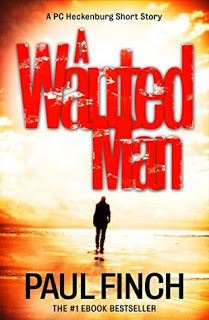 Check out the events of the novella,
A WANTED MAN
, in which Heck, during a night-shift from Hell, picks up the trail of a predatory rapist called ‘the Spider’ because he scales walls and climbs in through bedroom windows ...
Check out the events of the novella,
A WANTED MAN
, in which Heck, during a night-shift from Hell, picks up the trail of a predatory rapist called ‘the Spider’ because he scales walls and climbs in through bedroom windows ...Later that same year, even though he’d got himself a flat in Manchester, Heck decided that the proximity to his family was becoming intolerable. None of them would ever return his phone-calls, much less involve him in family events. But the original plan, which had been to resign once he’d punished his parents a little, was now put on hold, because ... rather unexpectedly, Heck had started to enjoy being a policeman, plus he was proving to be very good at it. He didn’t want to resign, and so, to get away from his family once and for all, he voluntarily transferred to the Metropolitan Police in London.
In the capital, Heck worked initially as a uniformed beat-officer in Kentish Town, but in 1998 joined CID, moving to Bethnal Green, where he came under the tutelage of the excellent and very maternal DI Gwen Straker. At the same time, he met this other incredible girl – Detective Constable Gemma Piper – who was his own age and who had also just moved out of the uniform branch. Gemma was standoffish at first, but gradually, as they worked together through a number of cases, Heck won her over – and by the year 2000 they’d become an item.
The events of Heck and Gemma’s first Christmas as boyfriend and girlfriend can be followed in the novella, BRIGHTLY SHONE THE MOON THAT NIGHT, which I posted in three installments on this blog on consecutive Fridays during December 2017. It all takes place one very snowy Christmas Eve, when the duo become concerned about a weird and rather murderous bunch of carol singers ...
Heck and Gemma continued working together and seeing each other, a relationship that in 2001 led them to set up home together in a rented flat in Finsbury Park. However, things were not entirely hunky dory. Gemma, a very efficient officer and a renowned straight bat was marked for promotion from an early age, whereas Heck’s more undisciplined approach to procedure and protocol often threatened to sink his career (and hers, she came to fear, if they stayed together). Heck was still a good cop, who got great results, but he was increasingly seen as a risk-taker and adventurer.
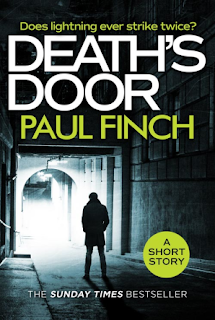 The strain this put on their relationship, even though they were now living together, can be seen next Friday, when the novella, DEATH’S DOOR, is published. In short, Heck becomes concerned when he learns that the new female occupant of a house that has long stood empty reports a prowler. This is because another woman was murdered in that same house only six years ago, and that very disturbing case was never solved ...
The strain this put on their relationship, even though they were now living together, can be seen next Friday, when the novella, DEATH’S DOOR, is published. In short, Heck becomes concerned when he learns that the new female occupant of a house that has long stood empty reports a prowler. This is because another woman was murdered in that same house only six years ago, and that very disturbing case was never solved ...While Heck and Gemma’s relationship continued to slowly unravel, any relationship remaining with his family at home completely evaporated when he learned that both his parents had died within a relatively short time-frame and that, at their request, he wasn’t informed until after they had been buried, thus preventing him from attending either of the funerals.
Hurt by this, and now at odds with almost the entirety of his home town, Heck pressed on with his career as a London cop, playing ever faster and looser with the rules, and taking ever greater risks. He and Gemma finally parted company in 2005, Gemma rocketing off into the upper echelons of London law enforcement through a series of impressive promotions, Heck continuing to slog it as a detective constable, though, as he would often say, he preferred being an investigator to being an administrator.
In this capacity, he did stints with the Burglary Squad and Robbery Squad in Tower Hamlets, before finally being promoted to sergeant and returning briefly to uniform in Rotherhithe, though he rejoined CID at the first opportunity, less than a year later in fact, taking up the post of detective sergeant at Brick Lane. Six months later, after yet more impressive results, he was joined the Murder Investigation Team in Lewisham, and two years later, in 2006, he transferred to the National Crime Group at New Scotland Yard to work in the Serial Crimes Unit.
The National Crime Group was an elite and specialist police force, entirely separate from the Met, which was FBI-like in its remit, and covered all the police force areas of England and Wales. But it was with some consternation that Heck found Gemma had got to NCG ahead of him, and now, as a detective superintendent, was actual commander of the Serial Crimes Unit.
The twosome were thus reunited, but things were very different between them. In a ‘fire and water’ relationship, they commenced working their way through a series of complex and often very distressing murder cases.
This, of course, is where we pick up with the Heck novels.
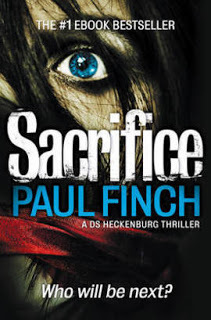 In
STALKERS
, Heck and Gemma, both now 36, find themselves on the trail of the Nice Guys Club, a secretive crime syndicate who abduct female victims to order and provide secure places where their clients can rape and abuse them, the club then disposing of all the evidence afterwards, including the victims ...
In
STALKERS
, Heck and Gemma, both now 36, find themselves on the trail of the Nice Guys Club, a secretive crime syndicate who abduct female victims to order and provide secure places where their clients can rape and abuse them, the club then disposing of all the evidence afterwards, including the victims ...In SACRIFICE , a series of brutal and elaborate murders appear to coincide with special feast days in the calendar, which it soon becomes apparent are human sacrifices based on ancient and obscure beliefs ...
In THE KILLING CLUB , what remains of the Nice Guys return to the UK, determined to kill off their former client-list, men who might conceivably give evidence against them in court. A spate of horrific torture-murders thus ensues ...
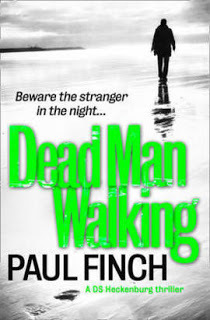 In
DEAD MAN WALKING
, Heck, after one massive fall-out too many with Gemma, transfers to the Cumbrian Police, and finds himself in charge of an isolated rural police station during a foggy winter, just at the time when a vicious, unprovoked attack on some hill-walkers proves eerily similar to the crimes of the Stranger, a serial killer who terrorised Devon 10 years earlier, and was never caught ...
In
DEAD MAN WALKING
, Heck, after one massive fall-out too many with Gemma, transfers to the Cumbrian Police, and finds himself in charge of an isolated rural police station during a foggy winter, just at the time when a vicious, unprovoked attack on some hill-walkers proves eerily similar to the crimes of the Stranger, a serial killer who terrorised Devon 10 years earlier, and was never caught ... In HUNTED , Heck and Gemma are still partly estranged, but Heck is back in the SCU fold, and heads down to Surrey, where he begins to suspect than a spate of unlikely but fatal accidents might actually have been engineered by someone playing elaborate but deadly pranks ...
In ASHES TO ASHES , Heck almost snags John Sagan, a professional torturer, who rents himself out to the highest bidder. The trail warms up again when new intel suggests that Sagan has headed north, to participate in a violent gangland war (one very gruesome aspect of which is an unknown hitman who incinerates his victims with a flame-thrower!). Gemma authorises Heck to head up there and get involved. There’s only one problem: the epicentre of the violence is Bradburn, the home town that Heck has so utterly disowned ...
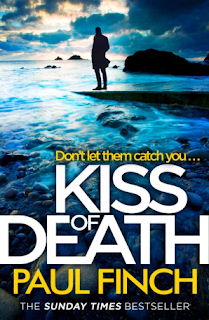 Which brings at last us to
KISS OF DEATH
, due out in August, but available to pre-order right now, if you so wish.
Which brings at last us to
KISS OF DEATH
, due out in August, but available to pre-order right now, if you so wish.In this one, savage police cuts have finally reached the National Crime Group, and to prove that her unit still has a role to play, Gemma joins forces with Scotland Yard’s Cold Case Team. Together, they put together a list of the 20 worst British criminals still evading justice, in order to hunt and catch them all. Heck pursues a vicious bank robber/kidnapper, but then uncovers a ghastly video, which suggests that many of the UK’s top criminals have not disappeared because they are on the run, but for very different reasons, reasons almost to sickening to comprehend …
So, there you go. That’s where we are at present.
To recap, Heck is now 39 years old, and still in the thick of it, walking a tightrope through a world of ultra-violent crime. Check out DEATH’S DOOR (next Friday), for a 20,000-word novella that will take you back to the very important early days of his relationship with Gemma Piper, and KISS OF DEATH (August 9) for the latest installment in the ongoing series of novels.
THRILLERS, CHILLERS, SHOCKERS AND KILLERS …
An ongoing series of reviews of dark fiction (crime, thriller, horror and sci-fi) – both old and new – that I have recently read and enjoyed. I’ll endeavour to keep the SPOILERS to a minimum; there will certainly be no given-away denouements or exposed twists-in-the-tail, but by the definition of the word ‘review’, I’m going to be talking about these books in more than just thumbnail detail, extolling the aspects that I particularly enjoyed … so I guess if you’d rather not know anything at all about these pieces of work in advance of reading them yourself, then these particular posts will not be your thing.
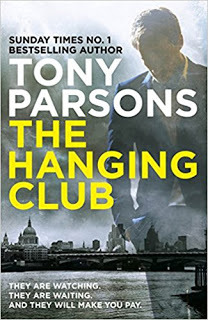 THE HANGING CLUB
THE HANGING CLUB
by Tony Parsons (2016)
Detective Constable Max Wolfe is a single-parent cop attached to the Major Incident Team at West End Central.
Under the steady leadership of his quietly-spoken but firmly authoritative boss, Detective Chief Inspector Pat Whitestone, he divides his time between caring for his beloved young daughter, Scout, and investigating bizarre and disturbing murder cases. The Hanging Club will be the third such case that we readers have joined him on, and it will see him tested to his absolute limits.
The horror begins when a London taxi-driver only recently released from jail after serving time for his role in a grooming gang, is video-taped being hanged by the neck in a dingy cellar and the images fed online. Other similar acts of ‘frontier justice’ now follow.
In rapid succession, a cashed-up boy-racer from the City gets off lightly after mowing down the grandson of ex-gangster, Paul Warboys, and so he too is strung up at an unknown location and the film of it played to the nation. Ditto a junk-head idiot who beat an octogenarian war-veteran into paralysis in order to get drugs money; he too walked away untouched and so also gets the rope.
By this time, Whitestone and Wolfe realise that they are dealing with an organised vigilante group who are apparently determined that they aren’t going to stop until justified violence has been served fully on the endless train of scumbags who seem to pass through the British judicial system with no more than a slapped wrist.
But there is a little bit more to it than this.
Some of the bodies are dumped at Marble Arch, near the site of the old Tyburn gallows, while on each of the hanging videos, a sonorous voice speaks beforehand, asking the victim if he knows why he has been ‘brought to this place of execution’. These guys take themselves very seriously; in their eyes, they aren’t just a gang, they are the new face of law-enforcement in 21st century Britain, an alternative to the official but jaded legal system which even Wolfe thinks has been hijacked by clever lawyers and judges dwelling in ivory towers. (Right at the beginning of the narrative, Wolfe himself is infuriated when one of his own cases fails, the Central Criminal Court going easy on three hooligans who kicked a householder to death and filmed it on their iPhones).
Conventional investigative techniques pay no initial dividends. Warboys, who, during his violent past, shared top billing with the Krays and Richardsons, seems a likely candidate, but he’s old now and past it. He sympathises with the Hanging Club (as the press gleefully proclaim them), but he doesn’t appear to be connected to them. Extensive surveillance of the deposition sites in the West End bears no fruit, and the forensics draw a blank. So, Whitestone calls in various experts.
Professor Hitchens is a historian who knows London inside-out. He’s initially hostile to the police, thinking himself above such mundane activities as crime-fighting, but Wolfe soon brings him down to Earth, though even then Hitchens is only really able to colour in the background (which, in several very enjoyable scenes, drives Wolfe to consult with old sweat, Sergeant Caine, the retiree who curates the infamous Black Museum).
Then there is Tara Jones, a beautiful but profoundly deaf woman who, ironically, is an expert at voice biometrics. By conducting computer analysis of the audio tracks on the video feeds, she is more useful to the team, who need to crack the location of the kill-site, by focussing on the sound of heavy building work nearby – though all this really tells them is that the subterranean location is somewhere in central London.
As if all this isn’t problematic enough, Wolfe finds himself in temporary charge when Whitestone’s son is blinded in an unprovoked nightclub attack, and at the same time, he must babysit Scout, who has now finished school for the summer holidays, and look out for Jackson Rose, a former school-friend turned army deserter and societal dropout, who, considering that he was only a cook when he was in the forces, seems to be remarkably adept at combat (both with and without weapons). Rose is currently lodging with Wolfe, but his oft-voiced support for the Hanging Club sees the copper getting increasingly worried and suspicious.
Of course, the ex-squaddie isn’t the only one to think this way. And here lies the real problem. Even while the enquiry stumbles around in the dark, the murderers’ popularity is growing among the general public, cheap newspaper headlines hailing the killers heroes and creating a mob atmosphere in a city soon sweltering in unusually high temperatures. This incendiary mood only amplifies when the vigilantes next target a Muslim hate preacher, an incident that adds race and religion to the mix.
And just when it seems that things can’t get any worse, Wolfe himself is grabbed. The Hanging Club aren’t just hunting the guilty, it seems, they are also looking to punish those who they see as protecting them …
Tony Parsons, renowned journalist and ‘men-lit’ author, came onto the crime fiction scene several years ago in a blaze of publicity, which left people with very high expectations. When the Max Wolfe series first got going, my expectations were largely fulfilled. The two novels before this one – The Murder Bag and The Slaughter Man – were slick, taut thrillers, which left me wanting much more. However, I’m slightly less sold on The Hanging Club . Not that it doesn’t contain some great stuff. It does, but I might as well get the brickbats out of the way first.
It is filled with procedural exposition, policing-by-numbers if you like, something which, whenever I see it in a book, makes me think that the author is taking up a lot of page-space trying to show how much research he/she has done. In this novel, it’s repetitive and distracting. I also took issue with the way the major investigations team is portrayed (which is ironic, because, as I say, otherwise Parsons has clearly done his homework). Basically, it’s undermanned. Whitestone’s absence leaves DC Max Wolfe in charge, apparently with only the assistance of DC Edie Wren, and trainee detective, Billy Greene. In my own police experience, it wouldn’t be completely unknown for an officer of constable rank to take point on an enquiry if he/she was deemed to have a certain expertise, but tackling the Hanging Club would surely be a massive operation and allocated huge resources, including a deputy SIO, duty DIs, etc?
But ultimately, these are the only problems I had with it.
The Hanging Club is a rattling good read, intriguing and exciting all the way through, and filled with colourful London characters. London itself is one of these, because in this novel we stay firmly in the centre of town, going both above it and below it, but never straying further west than Hyde Park or further east than the Old Bailey. I have a personal interest in the mythology of our capital city, and much of that is examined here, both interestingly and intelligently. I don’t want to say too much more about that, because I’ll risk giving away vital plot-points, but Tony Parsons is clearly in his element in this part of the book, effectively evoking the mysteries and brutalities of the old world, which, in London at least, are only buried under our feet by a few inches of concrete, if that.
He also – and this is a slightly more serious point – gives us a polemic about British justice.
Okay, in some ways, the idea may seem a bit hackneyed: honest cop falls out with system because hoodlums go unpunished, but eventually stands by it because it’s all he’s got. But in The Hanging Club it is elaborated on from various angles and with serious thought. Yes, we do see vile creatures enjoying the torment of their victims’ families in court, mee-mawing to their pals in the public gallery and celebrating when they beat the rap. Yes, we do hear the coppers’ frustration, and listen agog to judges summing cases up purely on the basis of legalese and without a hint of actual humanity. But we also learn about the savagery of the older methods, which so many empty-headed people hark back to; we hear what a verminous pit Newgate Prison was, and how folk could be incarcerated there and even dragged out along Dead Man’s Walk to be lynched in front of a raucous crowd for offences that would seem totally petty even in the 20th century let alone the 21st.
It’s a real conundrum that Parsons hits us with, but it comes with a warning too; namely that when a tide flows inexorably against public opinion, there may be a backlash which could easily get out of control. You don’t let the mob rule, but you must at least pay heed to their wishes.
Don’t let that put you off, by the way. The Hanging Club may be written with a clever subtext, but overall, it’s nowhere near as heavy as that may make it sound. It’s a fast, accessible read, and fans of London crime thrillers in particular will have no trouble enjoying it.
I’d have thought that any novel with Tony Parsons’ name on it would have a better-than-average chance of film or TV adaptation at some point. I’m not sure where the Max Wolfe series stands in that regard, but on the off-chance they need me to give them a little nudge, as usual I’m going to pitch in with my own recommendations for a cast should The Hanging Club ever get the green light. Just a bit of fun of course. Feel free to agree or disagree, as it suits you.
DC Max Wolfe - Richard ArmitageJackson Rose - Noel ClarkeTara Jones - Hayley AtwellDCI Pat Whitestone - Anna HopeDC Edie Wren - Rachel Hurd-WoodProfessor Hitchens - Russell ToveyPaul Warboys - Donald SumpterSergeant John Caine - Kevin Lloyd
Published on June 24, 2018 11:00
June 8, 2018
Crossing the country to punish the guilty
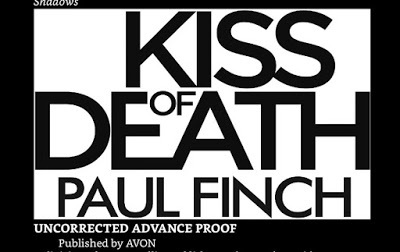
I’m going to be talking a bit more about KISS OF DEATHthis week. That’s my next novel, which is due out in August. In particular today, I’ll be focussing on some of the sexy locations we visit during the course of it, one of which is an idyllic place on a rural stretch of the English coastline.
On that same seaside theme, though it’s a bit more exotic in this other case, I’ll also be reviewing and discussing, in my usual forensic detail, Michael Marshall’s never less than totally compelling thriller, KILLER MOVE.
 Those of you who are only here for the Mike Marshall review, you’ll find it at the lower end of today’s blogpost. Feel free to scroll straight down there. But if you’ve got a bit more time to kill, you might be interested first in the stuff I’ve got to say about
KISS OF DEATH
.
Those of you who are only here for the Mike Marshall review, you’ll find it at the lower end of today’s blogpost. Feel free to scroll straight down there. But if you’ve got a bit more time to kill, you might be interested first in the stuff I’ve got to say about
KISS OF DEATH
.Coming soon
The marketing drive behind KISS OF DEATH is really picking up now. I’m seeing the book’s cover everywhere. I also note, as pictured above, that the Kindle reviewers are already receiving their e-copies. For those who are really, really excited about this, and just can’t wait until August 9, you may already be aware that DEATH’S DOOR , a brand new 20,000-word Heck e-novella, will come out first on June 29.
You can get that one entirely FREE, though I ought to add that it’s not essential for you to read DEATH’S DOOR in order to enjoy KISS OF DEATH . The former is set at a very early stage of Mark Heckenburg’s police career, when he and girlfriend, Gemma Piper, who is now his ex-girlfriend – and his boss of course! – were setting up home together in North London. But it does a bit of groundwork on the relationship, which newcomers to the series might not know about.
One of the things I like most about writing the Heck books, though, and one thing that is commented on most often by fans and reviewers, is the range of locations we travel through in each story.
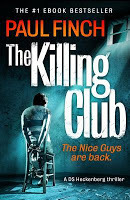 Heck and Gemma – he now a detective sergeant, she now a detective superintendent – both work for the Serial Crimes Unit (part of the National Crime Group, based at Scotland Yard – and I had the idea for that before the real UK police service did, so they pinched the idea off me). This operates as a kind of British FBI, its officers consulting and assisting widely across all the police force areas of England and Wales, wherever crimes fitting their particular expertise are being investigated.
Heck and Gemma – he now a detective sergeant, she now a detective superintendent – both work for the Serial Crimes Unit (part of the National Crime Group, based at Scotland Yard – and I had the idea for that before the real UK police service did, so they pinched the idea off me). This operates as a kind of British FBI, its officers consulting and assisting widely across all the police force areas of England and Wales, wherever crimes fitting their particular expertise are being investigated.Before anyone asks, this was a deliberate ploy on my part. It seems to me that there are lots of fictional detectives out there at present, all of whom have their own patch, which they (and their authors) know inside out. I’d venture to suggest that Lucy Clayburn, my other police character, who is permanently based in Crowley in inner Manchester, is one of these. But with Heck, I wanted to do something very different. I wanted a change of scene as often as possible, and in the six Heck novels prior to this one, we’ve done that a lot.
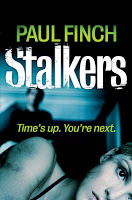 So, for example, the very first one,
STALKERS
, took him from London to Manchester to the Thames estuary in Kent. In
THE KILLING CLUB
, we went from the Cotswolds to Holy Island off the Northeast coast. In
DEAD MAN WALKING
, it was the Lake District in the depths of a foggy winter, in
HUNTED
the Surrey Weald at the height of a glorious summer, and so on.
So, for example, the very first one,
STALKERS
, took him from London to Manchester to the Thames estuary in Kent. In
THE KILLING CLUB
, we went from the Cotswolds to Holy Island off the Northeast coast. In
DEAD MAN WALKING
, it was the Lake District in the depths of a foggy winter, in
HUNTED
the Surrey Weald at the height of a glorious summer, and so on.In KISS OF DEATH we are really pushing the boat out (quite literally at one point), Heck visiting places that are poles apart from each other, both in tone and spirit, as well as geography. And here are just some of them:

London (west), as photographed by David Henderson ...

Humberside, as photographed by Bernard Sharp ...

London (east), as photographed by MJ Richardson ...

And Cornwall, as photographed by Richard Law ...
It amused me once when a reviewer referred to this device as “a poor man’s James Bond tactic”. Well, I must admit, Britain’s abandoned buildings and desolate backstreets, and even her splendid countryside can’t compete easily with Miami or Hong Kong or Moscow or Istanbul, or wherever Bond happens to be next. But one thing I do share with Ian Fleming when writing my novels is motivation.
I’ve wanted always Heck to be more than just a local investigator and have tried to draw his stories on a grand canvas, where heinous villains and phenomenal action sequences can all comfortably be found without raising too many eyebrows. But he’s not an SAS man or a rogue MI6 agent, so he can’t continent hop, and must deal solely with those issues falling inside his own jurisdiction.
As I once said to a writers’ group I addressed in Liverpool, you can’t take Heck seriously when he’s riding the roofs of trains, or jumping off motorway bridges onto the backs of lorries, or tackling gangs of Russian drug-traffickers, if every case is set, for example, in my hometown of Wigan. He has to get out there a little bit.
Anyway, that’s all I’m going to reveal about KISS OF DEATH for now … and no, the bit about Russian drug-traffickers is not a hint, though rest assured: in this new one, Heck still goes one-to-one with some of the worst of the very worst.
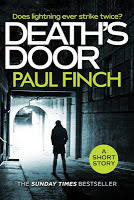 Just a quick reminder that, while it’s already available for pre-order, it can actually be acquired on August 9, and that the e-novella
DEATH’S DOOR
, which is completely FREE, will be available on June 29.
Just a quick reminder that, while it’s already available for pre-order, it can actually be acquired on August 9, and that the e-novella
DEATH’S DOOR
, which is completely FREE, will be available on June 29.In the time remaining between then and now, I’ll be dropping further morsels your way. Just keep checking back here.
THRILLERS, CHILLERS, SHOCKERS AND KILLERS …
An ongoing series of reviews of dark fiction (crime, thriller, horror and sci-fi) – both old and new – that I have recently read and enjoyed. I’ll endeavour to keep the SPOILERS to a minimum; there will certainly be no given-away denouements or exposed twists-in-the-tail, but by the definition of the word ‘review’, I’m going to be talking about these books in more than just thumbnail detail, extolling the aspects that I particularly enjoyed … so I guess if you’d rather not know anything at all about these pieces of work in advance of reading them yourself, then these particular posts will not be your thing.
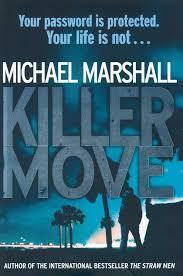 KILLER MOVE
KILLER MOVE by Michael Marshall (2011)
When the enigmatic John Hunter is released from prison after serving 16 years for murder, we immediately get the feeling that his crime and its repercussions aren’t over. Hunter isn’t a threatening man; quite the opposite – he’s placid and respectful, to the point where the warden of the US jail in which he’s been incarcerated is almost sorry to see him leave. Apparently, Hunter has been an exemplary prisoner, which explains why he’s had so many years trimmed off his original sentence.
But Hunter’s iron-core strength, not to mention his inner darkness, are more than evident to us readers – thanks mainly to the subtle skill with which he is depicted. And when, as soon as he hits the outside world, he goes looking for a gun, we realise that all our unspoken fears about this man are about to come true.
Meanwhile, in the somewhat less ominous environment of ‘the Breakers’, a luxury condo complex in the Florida Keys, ambitious young realtor, Bill Moore, is doing his best to live the American dream. He has a lovely and successful wife, Steph, he makes good money selling top-quality seafront properties, owns one himself, drives a swish car, and enjoys a promising relationship with his boss, Tony Thompson (despite Thompson’s rather disdainful other-half, Marie).
The Moores aren’t even close to being the wealthiest folk on the block. That status, if it doesn’t lie with the Thompsons, may lie with neighbouring widow, Hazel Wilkins, or one of the upscale neighbourhood’s real movers-and-shakers, business mogul David Warner. But Bill and Steph strongly aspire to be part of this racy set, and feel they are well on the way to getting there. Even if they don’t manage it straight away, life here is good; Bill is friendly with local lawman, Sheriff Frank Barclay, though there is minimal crime for the elderly cop to deal with in this idyllic spot.
And then, one day, quite out of the blue, Bill receives a card printed with a single word: MODIFIED. His first reaction is to assume that it’s a joke, but from this moment on his and Steph’s lives slowly start falling apart.
Initially, it’s almost innocuous. A semi-pornographic book arriving from Amazon, which Bill has no memory of ordering. Then a vaguely racist joke circled from his email account, which, fortunately, most of the recipients are amused by – though Bill would never have sent such a message. He and Steph really stop seeing the funny side of things when voyeuristic images of Bill’s gorgeous co-worker, Karren White, are found on his laptop.
Bill investigates but is hampered by further chilling developments. Steph vanishes – whether that’s because she’s still irritated with him about Karren or because of something more sinister, he doesn’t know. And it isn’t easy asking questions around town when the police are on your case – because, quite bewilderingly, he now finds himself implicated in another disappearance, that of David Warner. Despite this, and with the assistance of a spirited young waitress, Cassie, whom he befriends almost by default, he gradually figures out that he’s the become the object of a cruel and relentless game controlled by powerful but faceless individuals.
Even then it might just be tolerable, a bit of harmless fun which while it is undoubtedly inconveniencing Bill Moore, could all be put right by some financial restitution at the end. But then people start dying. If this is a game, Moore realises – still minus his wife, still with the law on his case – it’s a game that may well result in the end of his life … For years, Michael Marshall has written sci-fi, horror and fantasy under the not-dissimilar pen-name, Michael Marshall Smith, and he’s done so effectively and successfully. So, no-one should be surprised to pick up a thriller like this and find that it's filled with ultra-dark concepts. That isn’t to say that it’s particularly violent. It’s certainly no more violent than the average crime thriller, but there is a dehumanising brutality of purpose to some of the characters in Killer Move , which, when you sit back and think about it, is quite disturbing.
For example, John Hunter is a man whose life has genuinely been ruined. Even though he’s not especially evil, he enters our awareness as a cold, frightening individual, a guy for whom vengeance is the only reason to live – literally. And you know almost from the outset that it’s going to be extreme vengeance, delivered without qualm or hesitation. Even though Hunter is a man grievously wronged, it’s difficult to root for such a person in a novel as well-written as this, because it’s so easy to picture him in real life as someone you’d run a mile to avoid.
But Hunter isn’t the worst of it, because while a powerful presence, he’s not one of the main characters, and if nothing else at least he isn’t a direct threat to the hapless hero of the piece, Bill Moore. But while the overarching concept – that a bunch of bored richies might seek to fill their empty days by playing cruel games with other people’s lives – may seem vaguely fanciful (would you really get off on this kind of thing so much that you’d actually go to the expense of hiring ex-spec ops people to make it happen?), there is a much deeper darkness here.
The utter soullessness required to turn other people into your playthings undoubtedly rings true. And this for me is the real success of Killer Move .
With the exception of Hunter, who’s clearly deranged, and Bill Moore, who’s introduced to us at first as an annoying go-getter of the sort you can easily imagine packing US realty, but who learns through bitter experience how much he loves his wife, Steph, no-one else cares about anyone, even in an affluent community in southern Florida. The wealthy gamers are so absorbed in their own fun – even though it patently isn’t that much fun, as they are still jaded and bored – that feelings for their fellow men don’t even figure on their radar. But this self-interest extends to others too. Moore’s colleague, Karren White, is only superficially his friend; in reality she’s a rival, whose chief interest are the bonuses she can get at his expense. Even lowly office secretary, Janine, harbours secret resentments, which finally emerge in a scene that I found quite stomach-turning, because even though there is no violence used, a rotten human soul is unexpectedly but very plausibly laid bare to us.
And if that’s the whole of Breakers society written off, then I suspect that’s exactly what Michael Marshall intended. Though more likely he’s actually going further than that, and being cynical about the whole of society, because let’s face it, the truly malevolent force in Killer Move , which lies hidden until the very end of the book, can be hugely confident that this whole disaster, even when played out so full-bloodedly, will soon become yesterday’s news because of our modern-day mindset in which nobody else really matters.
For all these reasons, Killer Move makes increasingly uncomfortable reading, but you’ve got to stick with it and you’ve got to pay attention. Because what gradually unfolds here is a compelling but complex saga. Wheels turn within wheels; there is villainy within villainy, and no shortage of suspects. Bill Moore finally reaches a point where he doesn’t know whether to trust anyone else at all, wondering if he’s the only person on stage who’s not an actor – and we, the readers, ask ourselves the same question. More than once.
On top of that, we spend a not insubstantial portion of time philosophising. And because this is Michael Marshall and this is another thing he does so well, this is always interesting and amusing, especially as in this book it’s done through the mind’s eye of Bill Moore, who we soon realise is a much deeper and less confident character than we first thought, which means that it’s all wonderfully acerbic. The trade-off to this is that Killer Move is no quickfire actioner, but it’s still totally engrossing. As the mysteries pile up, and the obstacles cluttering Moore’s life become ever more insurmountable, you’re literally flying through the pages. You must know how it’s all going to resolve itself, even though it’s soon pretty obvious that that isn’t going to happen easily or without casualties.
One quick warning. Killer Move is a kind of unofficial add-on to Marshall’s remarkable ‘Straw Men’ trilogy. Now, if you haven’t read any of the Straw Men books, never fear. That won’t interfere with your enjoyment of Killer Move , as the author explains in more than adequate fashion just who the Straw Men are and how their existence impinges on this completely separate little drama. It all works perfectly well for me, but if you’re someone who really needs every single i dotted and every t crossed before you reach the last page, it might be an idea to check out those other titles first (it’s not like you won’t enjoy them thoroughly). They are, in this order: The Straw Men , The Lonely Dead and Blood of Angels .
The pre-existence of those other three novels also serves to make my habitual casting session even more meaningless than it usually is. But I’m still going to have a go. I’d like nothing better than to assemble the actors that could bring this taut tale to the screen, and how cool would that be, given that I always have a limitless budget (LOL). But for this one to work, you’ll just have to assume that The Straw Men etc have already hit the cinemas, because I can’t imagine that Killer Move would get this treatment first. Anyway, here we go:
Bill Moore – James MarsdenStephanie Moore - Renee ZellwegerJohn Hunter - John CusackCassandra - Erin MoriartyKarren White – Alison BrieSheriff Frank Barclay - JK SimmonsTony Thompson - Sam ElliottMarie Thompson - Susan SarandonHazel Wilkins - Charlotte RamplingDavid Warner – Don Johnson
Published on June 08, 2018 02:00
May 29, 2018
Brand new Heck novella, absolutely FREE
 Anyone waiting for the next Heck novel, KISS OF DEATH, which will hit the shelves in August, and who can’t wait that long, may be interested to learn that a brand new Heck e-novella, DEATH’S DOOR, set when he was still a young detective constable in the East End of London, will be available much sooner than that … entirely free of charge.
Anyone waiting for the next Heck novel, KISS OF DEATH, which will hit the shelves in August, and who can’t wait that long, may be interested to learn that a brand new Heck e-novella, DEATH’S DOOR, set when he was still a young detective constable in the East End of London, will be available much sooner than that … entirely free of charge.In addition today, while we’re talking about shorter-than-usual forays into dark fiction, I’ll be offering a detailed review and discussion of Stephen King’s excellent chiller, JOYLAND.
If you’re only here for the King review, no problem. You’ll find that, as usual, down at the lower end of today’s blog. Feel free to shoot on down there straight away. However, if you’ve got a bit more time on your hands, perhaps you’ll be interested to learn a little more about DEATH’S DOOR .
Early days
When KISS OF DEATH comes out this August, it will be the seventh book in the DS Mark Heckenburg series, and as part of that, it occurs in the present-day UK, its events unfolding as you read about them. Set against a backdrop of savage police cuts, it concerns a ho-holds-barred hunt by the Serial Crimes Unit for a hit-list of Britain’s 20 most dangerous and violent criminals who are still on the run from justice, during the course of which Heck and DSU Gemma Piper (his former girlfriend-turned-boss) get their hands on some grainy, black-and-white video footage with truly hideous content, which subsequently leads them to uncover a terrifying conspiracy.
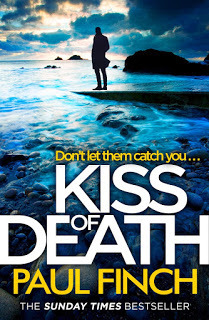 No more about that at present. But much more about
DEATH’S DOOR
(out on June 29, for the princely price of nothing at all) which while it isn’t exactly a prelude to
KISS OF DEATH
, (though, as a bonus, it does contain a sneak peek at the novel!) tells an earlier but very relevant tale from Heck and Gemma’s relationship.
No more about that at present. But much more about
DEATH’S DOOR
(out on June 29, for the princely price of nothing at all) which while it isn’t exactly a prelude to
KISS OF DEATH
, (though, as a bonus, it does contain a sneak peek at the novel!) tells an earlier but very relevant tale from Heck and Gemma’s relationship.I’m hopeful that most regular readers by now will be equally as interested in the overarching ‘Heck and Gemma’ story thread as they are the horrible crimes that Heck regularly finds himself investigating (I’d be inhuman if I hadn’t noticed that the ‘will they or won’t they?’ thing is now a big issue for certain followers of the series), and DEATH’S DOOR will only add to that, taking us back to a time when our two heroes weren’t just boyfriend and girlfriend, but were actually living together in a small flat in Finsbury Park.
However, stresses in the relationship are now finally showing. You may recall that, last Christmas, I ran the novella, BRIGHTLY SHONE THE MOON THAT NIGHT on this blog, which was set even earlier in their relationship, when all was hunky dory and the twosome, as well as being very much in love, were working well together as fellow detective constables in Bethnal Green CID. When DEATH’S DOOR is set, they are still working as DCs in Bethnal Green (and as I say, by this time living together), but Gemma is increasingly frustrated with Heck’s rule-bending and risk-taking, especially as she is about to embark on the series of promotions that will eventually propel her to the uppermost tier of the job.
That said, if there’s one thing Gemma unfailingly trusts about Heck, it’s his intuition. And when he comes to suspect that a mysterious peeping tom who has occasionally been spotted on a local housing estate might pose a much, much greater threat than it initially seems, she knows that it won’t pay to ignore him …
As I say, you can acquire DEATH’S DOOR , all 20,000 words of it, from your favourite online retailers from June 29, and it won’t cost you anything. If you’re planning to buy KISS OF DEATH later in the year, I strongly suggest you dip into this one first, as it gives yet more of the crucial back-story between the series’ two central characters (and as a quick reminder, it also gives you a glimpse at some early chapters of the forthcoming novel).
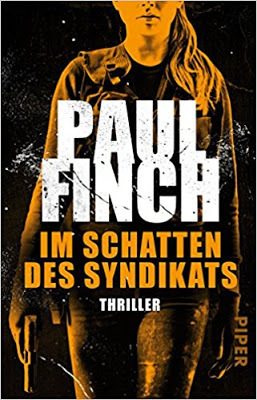 Still on the subject of my fictional police heroes, I have to say that I love this fantabulous cover from Piper Verlag, my publishers over in Germany.
Still on the subject of my fictional police heroes, I have to say that I love this fantabulous cover from Piper Verlag, my publishers over in Germany.This is IM SCHATTEN DES SYNDIKATS , the German translation of SHADOWS , my second Lucy Clayburn novel (published over here last October, but due out from Piper next January).
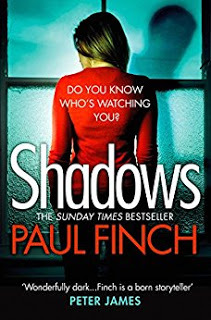 Again, as with the first Lucy novel to appear in Germany, the marketing strategy is noticeably different.
Again, as with the first Lucy novel to appear in Germany, the marketing strategy is noticeably different.As you can see here, the original English novel hit the shops in the style of a domestic noir – which wasn’t strictly accurate, in my view, given that the Lucy Clayburn novels are dark-toned police procedurals, but which was understandable given how popular domestic thrillers were in the UK up to and including last year.
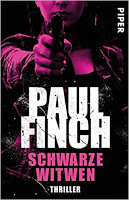 Over in Germany, there is clearly a greater interest among sales strategists in Lucy’s biker credentials and her ‘action girl’ approach to policing (the inheritance, no doubt, of her estranged father, who is now a high-ranking figure in the Manchester underworld).
Over in Germany, there is clearly a greater interest among sales strategists in Lucy’s biker credentials and her ‘action girl’ approach to policing (the inheritance, no doubt, of her estranged father, who is now a high-ranking figure in the Manchester underworld).Either way, I love this latest cover from Piper just as much as any of the others. As with SCHWARZE WITWEN , the first German edition of a Lucy Clayburn novel, it completely captures the image of the heroine that I had in my mind’s eye when I first wrote about her.
THRILLERS, CHILLERS, SHOCKERS AND KILLERS …
An ongoing series of reviews of dark fiction (crime, thriller, horror and sci-fi novels) – both old and new – that I have recently read and enjoyed. I’ll endeavour to keep the SPOILERS to a minimum; there will certainly be no given-away denouements or exposed twists-in-the-tail, but by the definition of the word ‘review’, I’m going to be talking about these books in more than just thumbnail detail, extolling the aspects that I particularly enjoyed … so I guess if you’d rather not know anything at all about these pieces of work in advance of reading them yourself, then these particular posts will not be your thing.
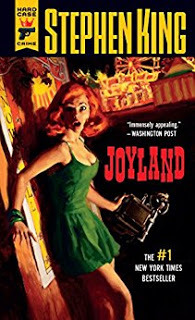 JOYLAND
JOYLAND
by Stephen King (2013)
It is 1973, and New England-born college guy, Devin Jones, is screwing things up educationally. Head over heels in love with classmate, Wendy Keegan, he just can’t focus on his studies – a problem that worsens when reality starts dawning that her increasing coolness is basically because she doesn’t share his ardour.
As the girl is at no stage kind enough to turn around and tell him he’s dumped, Devin continues to delude himself that Wendy is his, even when he flees into a summer job at Joyland, a second-rate amusement part on the North Carolina beachfront.
Deep down, of course, he’s well aware that the relationship has fractured, probably fatally, but instead of facing the fact, he throws himself into the new alliances he makes at the park, specifically with fellow ‘greenies’ (summer-staff), Tom Kennedy and Erin Cook, but also with hardbitten carney regulars, Fred Dean, Lane Hardy, and even grouchy old Eddie Parks, the latter group of whom, though they are civil enough with Devin on his first arrival, only become his firm pals when they discover that he excels at ‘wearing the fur’, i.e. putting on the costume of Howie the Happy Hound, the park’s mascot, and entertaining the kiddies.
It’s a long, hot, hardworking summer, during which the tireless Devin wins the approval of nonagenarian park-owner, Bradley Easterbrook, ends up being mothered by firm but fair landlady, Emmalina Shoplaw, and even attracts the attention of fortune-teller, Rozzy Gold, who is disturbed to see something bad in the kid’s future.
And this is the thing about Joyland. Though it does exactly what it says on the tin, providing a great afternoon for young families, it has a dark history. There was a murder here in the 1960s, when a girl had her throat cut on the Horror House ride. If that isn’t enough, the case was never solved, and rumour-mongers hold that the victim, Linda Gray, was only one of several attributable to the same maniac.
This macabre story is of growing interest to Devin, especially when he learns that the Horror House is now supposed to be haunted for real, Linda Gray’s sad ghost lingering in its shadows, looking to make contact with anyone she can, so that she can name her killer.
Devin never sees the ghost, himself, or even senses its presence, and is envious when he learns that Tom Kennedy has done, even though Tom doesn’t think this cool at all, and in fact was so frightened by the experience that, once the summer is over, he plans to get as far from Joyland as he can – and intends to take Erin with him, as the twosome are now an item (despite Erin and Devin’s mutual attraction).
Meanwhile, Devin, who’s grown to accept that he’ll never see Wendy again, is cultivating a relationship with another young woman, though this one is far more complex.
Single mother, Annie Ross, is spending the summer in her wealthy evangelical preacher father’s coastal mansion, and is sole guardian to her crippled, dying and yet permanently cheerful son, Michael. It is Michael who initially makes friends with Devin, a relationship Annie tries to discourage because she thinks it will end in tears – though when she actually gets to know Devin, she realises that he’s an okay guy.
But even this arrangement starts to prove difficult. Young Michael is another who possesses second-sight – and in his case it’s genuine. He doesn’t just get vague impressions like Rozzy Gold, so when he too warns Devin that something bad is looming, it needs to be taken seriously.
From a reader’s perspective, of course, it’s impossible not to form a suspicion that this approaching danger must be connected to story of the Funhouse Killer, with which Devin is increasingly fascinated. In fact, at the end of summer, when Tom and Erin go back to college, but Devin stays on – having decided to take a year out – the girl, at Devin’s behest, starts to research the case, and comes up with some compelling clues, which she duly sends back.
The question is will Devin be able to make use of these, and if he can, will that in itself be a problem? Because, if you’re a soulless, many-times murderer, and you learn that someone’s investigating you, aren’t you going to take action to prevent it? And if you’re really and truly wicked, isn’t it also possible that you won’t just draw the line at dealing with him, but maybe with all those he knows and loves as well? …
My first impression on reading Joyland was that it may have started life as a novella, or even a short story. It’s a fairly slight concept, and a very linear narrative, uncluttered by the usual side-tracks and detours that Stephen King’s larger novels are renowned for. Was it originally a shortie, I wonder, and in that inimitable Steve King style, did it simply grow with the telling? That said, it isn’t padded; there’s no issue there, and it’s a very fast read – so no-one must be concerned that Joyland is a bit of nothing.
The second impression I got is that it’s another classic piece of King’s folksy Americana. Once again, we’re in the US of the author’s younger days, his college years perhaps, which are evoked in completely authentic and loving detail. This is a classic Stephen King retrospective on earlier periods of his life. Not content just to tell you how it looked and sounded and smelled, he gets you right into the mindset, helps you capture the zeitgeist. To start with, this is a politer age; everyone, you feel, has less than they do now, yet they are more genteel. People are adults when they hit their mid-20s, and automatically are treated with respect by juveniles. Students work their way through the vacation, and they work damn hard, because they need the money. Rules at rooming houses are there to be obeyed. Children are less streetwise, and yet intangibly tougher than their counterparts today. The simple pleasures of an amusement park are deemed a worthwhile experience for working class families who take nothing for granted.
As for King’s descriptive powers … well, it’s the usual case of every other writer who reads it going green with envy. Everything about Joyland, the park, is vivid. You can hear the whistles and bells of the rides, you can smell the candy-floss and ketchup, can hear the roar of the nearby surf, and feel the tremors of excitement on first sight of the simp-hoister(Ferris wheel), Zamp rides (children’s attractions) and bang-shies (rifle ranges).
Is it as terrifying as so many of his other works?
No, not a bit of it.
It’s a thriller. Be under no illusion about that, but it’s a low-key thriller. More important to the author on this occasion is the development of some wonderfully believable characters and relationships, and a deep contemplation of the afterlife.
Devin, for example, is only a young man – he rarely thinks about death; but there’s a killer at large, who preys on women younger even than he is. At the same time, little Michael is terminally ill, a fact he’s accepted with numbing bravery and stoicism. Because Joyland isn’t set now, this isn’t a world of atheists to whom death is oblivion. But this isn’t the long past either, so there’s uncertainty, there’s doubt, there’s fear. Annie Ross cannot disassociate the Jesus she learned about and loved as a little girl from the money-grabbing millionaire phoney that is her father. Even though there’s supposedly a ghost at Joyland, physical proof that we’re all spirits, Devin has never seen it, even though he yearns to (he misses his deceased mom terribly, and would love to hook up with her again).
This is all immensely affecting and moving – but there’s no schmaltz or sugar here; this is not a Disney story. And it makes for a hugely satisfying if very different kind of read.
I didn’t know much about Joyland when I picked it up. I tuned in expecting a typical blood-churning Stephen King chiller. I didn’t get that, but what I did get was yet another remarkable (if slightly shorter than usual) reading experience from one of the 20th and 21st centuries’ great masters of the written word.
Amazingly, given that almost everything Stephen King ever writes ends up on film or TV at some point, Joyland hasn’t – as far as I know – been adapted just yet. So (as usual) I’ll take a chance to nominate my own cast straight away. No-one’s going to listen to me, but hell, these guys would be great:
Devin Jones – Zac EfronAnnie Ross – Sienna MillerErin Cook – Saoirse RonanTom Kennedy – Kevin McHaleEmmalina Shoplaw – Kathy BatesEddie Parks – Billy DragoLane Hardy – Clancy BrownBradley Easterbrook – M. Emmet Walsh
As usual, the only one I can’t cast is young Michael Ross; I know so little about child actors of those tender years that it would be a wasted exercise.
Published on May 29, 2018 05:43
May 16, 2018
Demons, demons ... everywhere demons!

We’re firmly back on the horror trail this week. Primarily, that’s because there are big developments with the TERROR TALES series that I want to tell you about, but also because I’ll be reviewing and discussing A HEAD FULL OF GHOSTS, Paul Tremblay’s masterly study of a suburban family’s catastrophic decline during the course of what may or may not be a demonic possession.
As always, you’ll find that review towards the lower end of today’s blog. Skip straight on down if you’ve a mind to, but if you’ve got a bit more time, perhaps you’ll be interested to hang around and see what’s happening with TERROR TALES.
First of all, if readers of the series can forgive me, I’ll just need to give those who are new to it a quick thumbnail sketch.
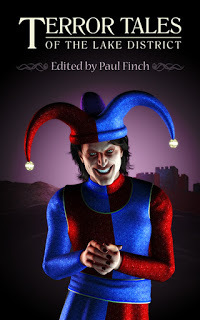 TERROR TALES
was born from my love of regional folklore, not just in the UK but all over the world.
TERROR TALES
was born from my love of regional folklore, not just in the UK but all over the world.It was long my dream to commence editing a series of anthologies dedicated to this uniquely homespun brand of horror, but in order to create as broad an overview as possible, I knew that I’d need to focus each particular volume on a specific geographic region. So, for example, the first book in the series was TERROR TALES OF THE LAKE DISTRICT . Since then, we’ve covered, in no order of preference, the COTSWOLDS , EAST ANGLIA , WALES , LONDON , CORNWALL , the SCOTTISH HIGHLANDS , YORKSHIRE , the SEASIDE and the OCEAN .
My plan was not just to publish new fiction based on local terrifying mythology, but also to reprint a few classics here and there, and to intersperse the stories with short, factual anecdotes on the same theme.
So, again using TERROR TALES OF THE LAKE DISTRICT as an example, the marvellous stories Little Mag’s Barrow and The Coniston Star Mystery, as written by Adam Nevill and Simon Clark respectively, found themselves sitting either side of a vignette concerning the life and crimes of Tom Fool, the Mad Jester of Muncaster Castle (also depicted on the book’s cover). This has been the style of the series ever since, and from the responses I’ve had from readers, one of its most popular aspects.
When I first started with TERROR TALES back in 2011, the plan was to publish two books a year. But events have gradually conspired against that. My own novel-writing career has, to a degree, sky-rocketed, which has left me much less time to focus on the anthologies, and by the same token, Gary Fry, the owner of Gray Friar Press, the original publisher, has seen his own career develop and been left with no option but to move on.
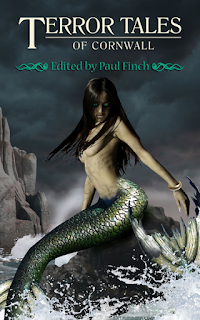 This caused a brief interlude in the series, though last year we returned with a new publisher, Telos Books, and our first new title in a year and a half,
TERROR TALES OF CORNWALL
.
This caused a brief interlude in the series, though last year we returned with a new publisher, Telos Books, and our first new title in a year and a half,
TERROR TALES OF CORNWALL
.I’m glad to say that our audience hadn’t deserted us, but even now, with a new publisher behind us, doing two books a year is a bit on the difficult side. So, the revised ambition is just to do one. That will be a much more manageable time-frame and will give all those involved opportunities to do other things as well.
As such, this year’s offering, which I’m hoping will be available for pre-order in the early autumn, will be TERROR TALES OF NORTHWEST ENGLAND. I’m not able to show you the cover yet, though I’ve already viewed Neil Williams’s sensation artwork, and I’m totally blown away by it. Hopefully it will be available for you all to take a good look at in the very near future. Keep watching this space.
Making movies
Still on the subject of horror anthologies, here’s a fun thing.
I loved the recent, very scary movie, Ghost Stories (below, right), not least because it went where other recent British horror movies have feared to tread.
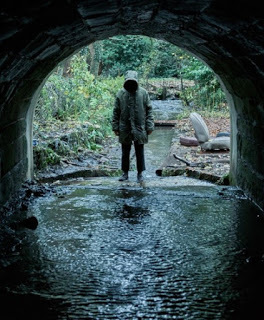 Some of you will already know that it was adapted by Andy Nyman and Jeremy Dyson from their stage play of the same name. It tells a nightmarish supernatural tale in which three chilling shorts cleverly interweave with a central narrative, creating a very satisfying whole. It got a mainstream cinema release, which is a rarity for this kind of movie in the 21st century, and has been widely viewed and applauded.
Some of you will already know that it was adapted by Andy Nyman and Jeremy Dyson from their stage play of the same name. It tells a nightmarish supernatural tale in which three chilling shorts cleverly interweave with a central narrative, creating a very satisfying whole. It got a mainstream cinema release, which is a rarity for this kind of movie in the 21st century, and has been widely viewed and applauded.At one time, British cinema was no stranger to this kind of thing. I’m sure you’ll all remember the halcyon days of the Amicus portmanteaux: Dr Terror’s House of Horrors, Tales from the Crypt, Torture Garden, Vault of Horror, Asylum, etc … which were very successful in the 1960s and 1970s (having taken their cue, of course from the classic Ealing chiller of 1945, Dead of Night).
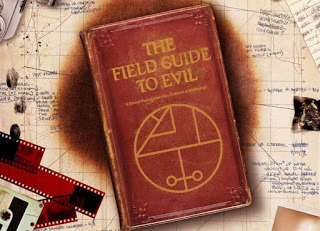 I’d like nothing better than to see horror film-makers get back to this format in some shape of other, and it seems I’m not the only one. After the success of Ghost Stories, I understand that The Field Guide to Evil, another big-money portmanteau horror, is currently in production, while Channel 4 is presently running its True Horror TV series, in which real-life ghostly events from around the UK are each week dramatised and presented to us in short ‘horror fiction’ fashion.
I’d like nothing better than to see horror film-makers get back to this format in some shape of other, and it seems I’m not the only one. After the success of Ghost Stories, I understand that The Field Guide to Evil, another big-money portmanteau horror, is currently in production, while Channel 4 is presently running its True Horror TV series, in which real-life ghostly events from around the UK are each week dramatised and presented to us in short ‘horror fiction’ fashion.In respect of this apparent new interest in the short scary form, I thought I’d slightly alter my regular Thrillers, Chillers, Shockers and Killers section, by occasionally reviewing and discussing anthologies and single-author collections as well as novels – and each time I cover one, selecting four particular stories from it, which I’d love to see incorporated into a single movie, complete with my usual fantasy casting, etc.
While I’m not in a position to review any new anthologies at this moment, though I’m already inserting several into my to-be-read pile, I thought I might as well start with the Terror Tales books. I won’t review these as such – that would bit rich, me reviewing my own anthologies (five stars all round, lads!) – but I can at least turn each one into a portmanteau horror movie, pick the four stories necessary and cast them. In which case, assuming you’ve bought into the conceit of that, we might as well start at the beginning, with TERROR TALES OF THE LAKE DISTRICT (I’ll work my way through the others during the course of this year).
So, here is …
TERROR TALES OF THE LAKE DISTRICT – the movie.
Just a bit of fun, remember. No film-maker has optioned this book yet, or any of the stories inside it (as far as I’m aware), but here are my thoughts on how they should proceed. Note: these four stories are NOT the ones I necessarily consider to be the best in the book – I love all the stories in these anthos equally – but these are the four I perceive as most filmic and most right for a compendium horror. Of course, no such horror film can happen without a central thread, and this is where you guys, the audience, and your vivid imaginations, come in. Just accept that four strangers have been thrown together in unusual circumstances which require them to relate spooky stories to each other. It could be that they’re all trapped in a cellar by a broken lift, and are awaiting rescue (a la Vault of Horror), or are marooned on a fogbound train and forced to listen to each other’s fortunes as read by a mysterious man with a pack of cards (al la Dr Terror) – but basically it’s up to you.
Yes, I know, I’m copping out on that bit. But, tough. You’ve got the idea. So, without further messing about, here are the stories and the casts I envisage performing in them:
ABOVE THE WORLD by Ramsey Campbell
Lonely soul, Knox, is convinced that he hasn’t returned to the idyllic country hotel on the shores of Lake Bassenthwaite because he’s nostalgic about the holiday he once spent there with his lovely wife, Wendy. He’s moved on from those happy days, he tells himself, as he sets out on a solo hike through the surrounding fells, despite the impending stormy weather. He doesn’t regret their separation several years later, and he feels no grief that his ex-wife and the new man in her life suddenly and recently died while exploring these self-same wooded hills. What matter that he keeps hearing the drifting voices of an elusive couple? What matter the increasing sense that he isn’t alone in this bleak, desolate place …?
Knox - Steve PembertonWendy - Anna Friel
THE CONISTON STAR MYSTERY by Simon Clark
Amateur frogmen, Blake Keller and Andrew Harper plan to scour the depths of Coniston Water, searching for the remains of famous escape artist, Iskander Carvesh, who drowned in 1910, when the boat he was chained upon, the Coniston Star, sank without trace. It’ll be a dangerous dive, but Keller and Harper know what they are doing. The only potential fly in the ointment, is Enid, a handsome blonde they’ve only known a day but who wants to accompany them. Loudmouthed Keller delights in trying to frighten her with his tales of underwater peril, but Enid is no novice, and she has dark reasons of her own for making this very dangerous dive …
Keller - Steve OramHarper - Michael SochaEnid - Florence Pugh
THE CLAIFE CRYER – by Carole Johnstone
The tale of the Claife Cryer, a horrible, disembodied voice said to have cried out from the shadows on the wooded west shore of Windermere, luring a young ferryman to his death, is one of the scariest Lake District ghost stories Kerry has ever heard. But of course, she doesn’t believe it, or she tries not to on the day she and her unpleasant father attempt a bonding exercise by exploring that thickly-treed region. Local gossips say the voice belonged to a deranged monk from a monastery now long abandoned. Spooky as that is, Kerry doesn’t feel it’s half as bad as spending time with her scornful and argumentative parent, but then, as twilight descends, she hears an awful cry. And then she hears it again. And again. Undeniably, it’s getting closer …
Kerry - Ella Purnell Dad - David Morrissey
THE MORAINE by Simon Bestwick
College lecturers Steve and Diane’s relationship is in trouble. Hopes were high that a Lake District hiking trip would be just the thing. But they’re still not getting on, and that’s not helped by the terrible October weather, everything wet and gloomy, and now – typically – just when they’re lost among the high, rock-strewn peaks, a thick mist coming down, which ensures that they lose the path as well. Even then, in danger, they don’t form easy allies – though in truth, they don’t know the meaning of danger yet. That will only come when they realise they’re being stalked by something unseen, something that can mimic animal sounds and human voices, and which appears to be stalking them underneath the endless heaps of moraine …
Steve - Iwan RheonDiane - Jessica Brown Findlay
THRILLERS, CHILLERS, SHOCKERS AND KILLERS …
An ongoing series of reviews of dark fiction (crime, thriller, horror and sci-fi novels) – both old and new – that I have recently read and enjoyed. I’ll endeavour to keep the SPOILERS to a minimum; there will certainly be no given-away denouements or exposed twists-in-the-tail, but by the definition of the word ‘review’, I’m going to be talking about these books in more than just thumbnail detail, extolling the aspects that I particularly enjoyed … so I guess if you’d rather not know anything at all about these pieces of work in advance of reading them yourself, then these particular posts will not be your thing.
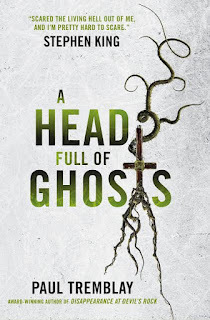 A HEAD FULL OF GHOSTS
A HEAD FULL OF GHOSTS by Paul Tremblay (2016)
Meredith Barrett is an intelligent, sophisticated and seemingly stable young woman, leading a relatively quiet life in a South Boston apartment. However, it’s fairly well known that when she was a child, something appalling happened to her family, something she hasn’t been able to speak fully about for years, in consequence of which the true facts in the case are much-mythologised. When best-selling author, Rachel Neville, arrives to interview Meredith, a loose agreement has been reached that the younger woman will finally, for the first time, tell all.
Rachel is unsure what she is going to get, or whether it will be adequately enthralling for a new book, but the story, when it starts to unfold, astounds her. It concerns a young suburban family entrapped by an intangible but malevolent something, which may have an entirely mundane (i.e. psychological) explanation, or alternatively could be the work of the Devil.
Central to the story are the then-eight-year-old Meredith, known back then as Merry, and her 15-year-old sister, Marjorie. They enjoy a typical sisterly relationship, adoring each other but at the same time adversarial, delighting in catching each other out with naughty, sometimes nasty tricks. Marjorie is the cannier and more dominant of the two, but Merry, while not necessarily adept at this game, is so willing to meet every challenge that Marjorie treats her with a degree of grudging respect, and affectionately calls her ‘Monkey’.
From a reader’s POV, it’s a charming scenario, and something that’s instantly recognisable in happy families everywhere.
The rest of the Barrett clan consists of father, John, a Catholic by upbringing who, since he lost his middle-management job a year and a half ago, is trying to re-energise his religious beliefs, and mother, Sarah, also a Catholic, but one who has grown away from the Church of her childhood and is now skeptical of its teachings.
Worried about their dwindling finances, the parents are going through a difficult patch, but their real problems commence when Marjorie starts displaying erratic behavior. On some occasions, it’s odd but harmless, Marjorie telling her sister some unusually scary and macabre stories, or rearranging her bedroom posters into weird patterns, but on others it’s more sinister, such as when she sneaks into Merry’s room while she’s asleep, and clamps her nose and mouth shut.
Merry, as our main observer, is never quite sure whether Marjorie, a natural mischief-maker, is faking all this bizarre stuff or not. But parents, John and Sarah, have been concerned about Marjorie’s fractious, moody behavior for some time.
Initially, at Sarah’s behest, a psycho-analytical approach is taken, but medical personnel, though they talk to her and prescribe meds (for which they charge handsomely), are unable to fix the older girl’s apparent personality-change, which continues to worsen. One minute she is mocking her father’s belief in Heaven in a cruel, smug way, and the next she is screaming at her parents to get the voices out of her head.
Increasingly fearful that she might be possessed, a worry encouraged in no small fashion by Marjorie herself when she climbs the bare wall of her bedroom with spider-like strength and agility, John finally calls on a Catholic priest, Father Wanderly, who talks to Marjorie, seemingly calming her during a foul-mouthed tirade, but afterward admits suspicion that something evil has taken hold of her. Eager for publicity, the priest then makes an incredible suggestion: that the Barretts put themselves into a weekly television show, in which Marjorie’s deteriorating behavior will be filmed and discussed by various ‘experts’ in the field, from psychiatrists to theologians, with the grand finale the exorcism itself, at which point the heroic priest will cleanse the child of the entity possessing her.
Unsurprisingly, Sarah is not keen on this idea, but when a television company gets involved and substantial cash is offered, everything changes.
Thus, The Possession is born.
In the early stages, the experience isn’t too painful. Merry is intrigued to have TV people living with them. She doesn’t much like producer/director, Barry Cotton, but she gets on well with writer, Ken Fletcher. Marjorie’s antics remain unpredictable, but this is something that Merry, in that traditional way of easy-going eight-year-olds, has got used to. So, everything is cool.
Until Merry sees her sister strapped down on her bed for hardline interrogation. Until she sees her parents’ relationship completely break down, Sarah blaming John for this invasion of their lives, and John, who’s been desperate to find answers in his faith and has failed, losing track of reality and engaging in violent altercations with the crowds of curious onlookers who now attend their house day and night (many openly vilifying the family for this exploitation of their daughter’s illness).
And still there are questions in Merry’s mind about whether Marjorie is faking it. The older sister is a crafty child, even sly. In that tiresome way of all teen rebels without a cause, is it possible that she could be doing this to punish her quarreling mum and dad? Is it that she’s just a silly, naïve child, who, as a form of attention-seeking, is unconsciously allowing a callous media to manipulate her? Or could it be that she’s simply mentally ill? … because from the frightening things we are seeing now – and yes, by this stage of the narrative, it is way past a joke! – we could easily be witnessing a psychological breakdown.
Or alternatively, is it something genuinely evil?
There is no overt indication that a supernatural force is at work, but then … would a demon that wants to do extensive damage reveal its hand so quickly? And despite at one point assuring Merry that she has pretended to be possessed from the beginning in order to win her family the TV deal, Marjorie continues to give the impression that she is under some kind of malign influence, speaking in different, unrecognisable voices, moving around on all fours, and displaying arcane knowledge.
Despite the covert admission made to her, Merry is still unsure what to believe. And so are we, the readers. But one thing is certain. The ghastly turmoil besetting the Barrett family is not going to be resolved easily, or without serious and maybe multiple casualties …
Possession is an old premise for horror stories, these days. But Paul Tremblay’s A Head Full of Ghosts is a very original take on it. Whereas in early classics like William Peter Blatty’s The Exorcist and Henry James’s The Turn of the Screw (not to mention recent movies like The Rite and The Conjuring ), the investigators, usually after some doubt, settle on a firm conviction that evil spirits are real, A Head Full of Ghosts takes more of a Shirley Jackson approach, keeping us guessing right to the end of the book. And rather than doing this by locking everyone in a supposed haunted house for the weekend, he throws us into very unfamiliar territory by locating it in a suburban family home, now massively disrupted not just by the elder daughter’s apparent illness, but by the economic stresses that are driving the parents apart, and the unfeeling presence of a TV crew who are mainly interested in securing a ratings hit.
And this is a point where A Head Full of Ghosts becomes a genuine horror show, with every key character tormented in his or her own way, and on various levels.
Non-believing Sarah only goes through with the whole farrago because she knows they need the money (if there’s any demon here, it could be argued that it’s Mammon). But even this leaves her racked with guilt, not just because she fears that she’s giving credence to something she reviles, the paternalistic power of the Church, but also because she can clearly see that Marjorie’s condition is worsening, not improving. This is such a terrible burden that she can’t bear it alone, but of course she can’t put it onto her daughter because she is convinced the teenager is ill, and so she directs it at her husband, treating his religious desperation as a kind of pathetic hysteria.
For John, it’s even more torturous. As head of the family, and former main bread-winner, he would normally be the guy who sorts things out, but on this occasion he can’t – in fact it’s quite the opposite, the burly, bearded Bostonian constantly belittled by his wife and his smart-mouthed daughter (or whatever’s lurking inside her). He’s vulnerable in other ways too: his certainty that they’re facing an infernal foe is terrifying him given that God and his angels seem incapable of intervening; at the same time, he is bewildered and mortified that his Christian beliefs are attracting scorn rather than respect, which in the end leaves him a puppet of a man, easy to manipulate and easier still to blame (and maybe, just maybe, the absolute perfect target for a genuinely malevolent intellect).
And then there is Merry, who, all the way through the book views these events in a mild state of disbelief, internalising the shock because she’s a child, naïvely assuming that one day she’ll simply wake up and find everything back to normal because her mum and dad have resolved it. Overall, Merry is a marvelous creation, Tremblay completely and convincingly getting into the lively and genuinely funny day-to-day world of a bright little eight-year-old.
Not that this reduces the awfulness of the predicament, an effect the author achieves without throwing buckets of gore and vomit over us or hitting us with horrendous blasphemy (though these disturbing elements are not completely absent). He primarily relies on the interplay of these tormented individuals, a once close-knit family brutally broken, and who though they’re now in a virtual goldfish bowl of public attention, are more isolated than they could ever have imagined.
There is such devastation here that I’m not sure it even matters whether a devious intelligence is directing the chaos, or whether it’s just rotten luck; the terror of this tale doesn’t need any such revelation. But even so, the book ends with a savage jolt, which because it again makes you reconsider everything you’ve just read, caps the whole thing off perfectly.
But it’s not all doom and gloom. Tremblay enjoys himself immensely in this book, filling it with a host of classic horror references, which has attracted much praise from the genre. We’ve already mentioned The Exorcist , The Turn of the Screw , and Shirley Jackson’s The Haunting of Hill House , but Charlotte Perkins Gilman’s The Yellow Wallpaper (a study of young woman going slowly mad) is clearly lurking in the background, along with The Amityville Horror (wherein a middle-class family struggling to pay their bills turn to the supernatural as a solution), Paranormal Activity , which also features a pair of quirky children at the root of the disturbance, and even Scream , another postmodern horror outing which trades on sneaky allusions to other works of fiction. If these references aren’t oblique enough in the text itself, you get several of them through an amusingly hyper-critical ‘horror fan blog’ provided by a lively young lady called Karen Brissette, which interrupts the narrative at regular intervals, analyzing the TV show from an uber-cynical ‘keyboard warrior’ perspective – though be warned, even this slice of 21st century normality is deceptive.
Overall, A Head Full of Ghosts is one clever, insightful and darkly entertaining horror novel. Just don’t expect your spirits to be uplifted by it.
It’s usually the case when I complete one of these reviews, that I also try to cast it. But I don’t think I’m going to bother with A Head Full of Ghosts simply because the two main characters are the youngsters, Merry and Marjorie, and as I have no real clue about exciting new child actors, it would utterly self-defeating to cast everyone except the two main protagonists. Either way, A Head Full of Ghosts deserves to be on the screen in some shape or form, and as soon as possible, because it is horror stories like this that will keep the genre alive and kicking at adult and intellectual level.
Published on May 16, 2018 00:55
May 10, 2018
New Brit-grit, new journeys into darkness
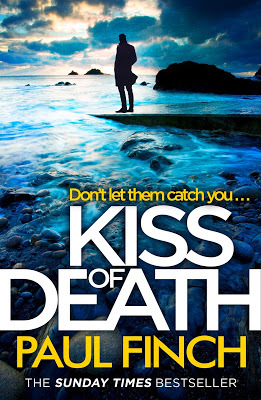 I’m happy today to be able to reveal in all its glory the cover for the next Heck novel, KISS OF DEATH.
I’m happy today to be able to reveal in all its glory the cover for the next Heck novel, KISS OF DEATH. Those who follow the investigations of DS Mark Heckenburg of the Serial Crimes Unit at Scotland Yard will likely be aware that this seventh novel in the series will be published on August 9 this year, and though its cover, which I hope you’ll agree is rather eye-catching, has been knocking around for a few weeks on one or two online retail sites, today is the official cover launch, so it’s possible that most of you will now be seeing it for the first time.
I’ll be talking a bit more about it, and the book, shortly. But in addition this week, on the same subject of gritty new cop thrillers, I’ll also be reviewing and discussing BLOODY JANUARY by Alan Parks, a smack-in-the-face slice of tartan noir (and at the same time a period piece), which takes the Brit-grit genre even further into the realms of hardboiled crime fiction.
If you’re only really here for the Alan Parks review, that’s fine. Skip down to the end of today’s post. As usual, you’ll find it there. But if you’ve got a couple of minutes first, I’m sure you won’t mind if I elaborate a little on the subject of KISS OF DEATH .
I will admit to being quite taken by the above cover. I don’t just consider it striking, it’s also relevant to the narrative, and regular readers of modern crime fiction will probably agree that that’s unusual.
So often these days, our thriller novels are jacketed with what are almost standardised images.
 Quite often, for example, if it’s a police procedural, we’ll get a diminutive figure silhouetted against either a generic urban backdrop, or, if it’s a police procedural set in the sticks, against a bleak rural backdrop. If there’s a particularly dark tone to the book, we might simply see a run-down cottage set against emptiness, or if we’re in the world of domestic noir, there’ll be a suburban variation on that theme. Then again, if we’re dealing with gangsters rather than cops, we might focus on a figure in an overcoat, maybe wearing shades and hefting a firearm, or perhaps a roulette wheel scattered with jewellery and spent bullet casings.
Quite often, for example, if it’s a police procedural, we’ll get a diminutive figure silhouetted against either a generic urban backdrop, or, if it’s a police procedural set in the sticks, against a bleak rural backdrop. If there’s a particularly dark tone to the book, we might simply see a run-down cottage set against emptiness, or if we’re in the world of domestic noir, there’ll be a suburban variation on that theme. Then again, if we’re dealing with gangsters rather than cops, we might focus on a figure in an overcoat, maybe wearing shades and hefting a firearm, or perhaps a roulette wheel scattered with jewellery and spent bullet casings.I’m not being derisory when I make these observations. These are the memes the current marketing crowd go for in order to hit maximum sales, and it works, so who can complain? And yes, the KISS OF DEATH cover, to an extent, fulfils that tradition. It’s a cop thriller, so again we have a small figure silhouetted against an awesome backdrop. But in this case it’s the sea, and that’s the clever part of it.
Because in KISS OF DEATH , one of the many locations Heck visits during the course of his investigation, is Cornwall.
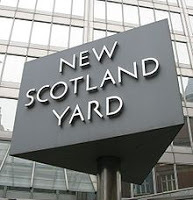 Regular readers of the series will know that Heck is a detective sergeant in the Serial Crimes Unit, which is part of the National Crime Group (before anyone accuses me of pinching ideas from reality, the real-life National Crime Agency, also based at Scotland Yard, was only formed after the first Heck book was published, and so I always say that they pinched the idea from me). And because this gives him a remit to cover all the police force areas of England and Wales, he tends to follow clues all around the country, taking in a host of different venues.
Regular readers of the series will know that Heck is a detective sergeant in the Serial Crimes Unit, which is part of the National Crime Group (before anyone accuses me of pinching ideas from reality, the real-life National Crime Agency, also based at Scotland Yard, was only formed after the first Heck book was published, and so I always say that they pinched the idea from me). And because this gives him a remit to cover all the police force areas of England and Wales, he tends to follow clues all around the country, taking in a host of different venues.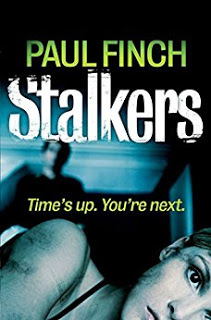 STALKERS
, the very first Heck novel, took him from Kent to Manchester to the Midlands. In
SACRIFICE
, he travelled from London to West Yorkshire, in
THE KILLING CLUB
he ended up on Holy Island off the Northumbrian coast.
DEAD MAN WALKING
took him to the Lake District,
HUNTED
to the Surrey Weald.
STALKERS
, the very first Heck novel, took him from Kent to Manchester to the Midlands. In
SACRIFICE
, he travelled from London to West Yorkshire, in
THE KILLING CLUB
he ended up on Holy Island off the Northumbrian coast.
DEAD MAN WALKING
took him to the Lake District,
HUNTED
to the Surrey Weald.It’s the same in KISS OF DEATH , Heck following all leads doggedly, which ultimately will lead him, among other places, to the East End of London, Humberside and yes, as I’ve already promised, the idyllic Cornish coast at the height of a lovely summer.
I obviously can’t give too much of the synopsis away at this stage, but suffice to say that in KISS OF DEATH , the National Crime Group is finally feeling the economic pinch. Police forces all over the UK are having to rationalise their resources and manpower because, in the age of austerity, the funding is simply not there. Even NCG’s most specialist departments, of which the Serial Crimes Unit is only one, are having to take a long, hard look at themselves.
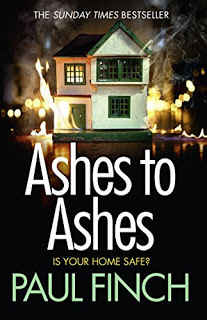 In the Heck book prior to
KISS OF DEATH
, which was
ASHES TO ASHES
, you may recall that Heck was on the trail of a professional torturer who rented himself out to the highest bidder. Inevitably, he worked mostly for crime syndicates, and on that occasion, it took him to Greater Manchester, to Heck’s industrialised hometown of Bradburn in fact, where a splinter-group had broken away from the local drugs cartel, resulting in a bloody underworld feud. At the same time, while the torturer happily toured the Northwest with his so-called Pain Box (a caravan filled with torture devices), in the pay of one side, the other brought in their own fearful enforcer, the Incinerator, a crazy killer who used a flamethrower to reduce his targets to ashes. Heck, of course, was caught smack-bang in the middle.
In the Heck book prior to
KISS OF DEATH
, which was
ASHES TO ASHES
, you may recall that Heck was on the trail of a professional torturer who rented himself out to the highest bidder. Inevitably, he worked mostly for crime syndicates, and on that occasion, it took him to Greater Manchester, to Heck’s industrialised hometown of Bradburn in fact, where a splinter-group had broken away from the local drugs cartel, resulting in a bloody underworld feud. At the same time, while the torturer happily toured the Northwest with his so-called Pain Box (a caravan filled with torture devices), in the pay of one side, the other brought in their own fearful enforcer, the Incinerator, a crazy killer who used a flamethrower to reduce his targets to ashes. Heck, of course, was caught smack-bang in the middle.Eventually, as you’d expect, it was resolved (but not without casualities), and the Serial Crimes Unit closed a major case. But when KISS OF DEATH commences, even this hasn’t been enough to ensure their survival. Money is simply too tight, and full-time murder investigation teams are deemed a luxury the British police can no longer afford. As such, Heck’s boss and one-time girlfriend, Detective Superintendent Gemma Piper, is handed a list of the UK’s most wanted felons who are still at large and still believed to be in the country.
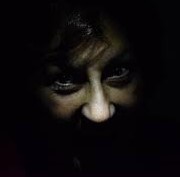 Their crimes range across the board of horror; from Terry Godley, who hijacked a car in Nottingham, making the two teenagers inside it kneel before shooting them both in the back of the head, to Christopher Brenner, who chained three sex-workers in his Luton cellar, beat and raped them, and then left them to starve, to Leonard Spate, who strangled a Carlisle prostitute and then burned down the house in which her two children were sleeping – and these heinous specimens are only a few of them. Heck is instructed to focus on Eddie Creeley, a Humberside-born bank robber and kidnapper, who during the course of his ultra-violent career has killed at least two people after taking them hostage and injecting them with drain cleaner and battery acid.
Their crimes range across the board of horror; from Terry Godley, who hijacked a car in Nottingham, making the two teenagers inside it kneel before shooting them both in the back of the head, to Christopher Brenner, who chained three sex-workers in his Luton cellar, beat and raped them, and then left them to starve, to Leonard Spate, who strangled a Carlisle prostitute and then burned down the house in which her two children were sleeping – and these heinous specimens are only a few of them. Heck is instructed to focus on Eddie Creeley, a Humberside-born bank robber and kidnapper, who during the course of his ultra-violent career has killed at least two people after taking them hostage and injecting them with drain cleaner and battery acid.Oh yes, only the worst of the worst figure on this list.
Of course, Heck undertakes the pursuit with his usual gusto, but very quickly uncovers a clue that leaves him bamboozled: a video tape portraying the fugitive in a desperate fight for his life.
The police, it seems, are not the only party in pursuit of Eddie Creeley. In fact, they’re not the only party in pursuit of all the other villains on the list. And, what’s more important, this mysterious other party could already be several steps ahead of the Serial Crimes Unit … so much so that a literal harvest of blood is already being sown.
The big question here, though, is just how far are the British police, and Heck in particular, prepared to go to protect some of the country’s very worst killers?
I actually only finished my final proof-read of KISS OF DEATH yesterday, but I am more than happy with the way it’s turned out, and am very hopeful that readers will enjoy it. Particularly because there are some explosive developments in Heck’s overall storyline here, which could pitch the entire series into a completely new direction …
With luck, you’ll all approve and enjoy.
THRILLERS, CHILLERS, SHOCKERS AND KILLERS …
An ongoing series of reviews of dark fiction (crime, thriller, horror and sci-fi novels) – both old and new – that I have recently read and enjoyed. I’ll endeavour to keep the SPOILERS to a minimum; there will certainly be no given-away denouements or exposed twists-in-the-tail, but by the definition of the word ‘review’, I’m going to be talking about these books in more than just thumbnail detail, extolling the aspects that I particularly enjoyed … so I guess if you’d rather not know anything at all about these pieces of work in advance of reading them yourself, then these particular posts will not be your thing.
 BLOODY JANUARY
BLOODY JANUARY by Alan Parks (2017)
The time is January, 1973. The place is Glasgow.
Change is in the air. Huge slum-clearance programmes are in progress (and grotty high-rise flats being thrown up in their place). Motorway extensions are being built that will bring traffic into the heart of town (and carve up the neighbourhoods). And heroin is set to arrive.
Okay, illegal drugs have always been here, but this is something else. A smack epidemic is about to engulf Glasgow, which will ruin countless lives and at the same time empower the city’s numerous ‘disorganised crime’ elements, turning street-gangs into full-time syndicates who will wage bloody war, not just against each other, but against the forces of law and order.
In this book, those forces are represented by Detective Constable Harry McCoy, a copper who, even though he’s relatively young, has been round the track a few times already. He drinks, takes drugs, sleeps with whores and breaks police protocol without conscience. Now, please don’t immediately switch off, thinking this a total cliché. Because though, yes, we’ve met many cop characters like this in recent fiction, in McCoy’s case there’s something a little more appealing about it.
Primarily, that’s because he’s ordinary.
Yes, he’s damaged. Yes, he mistrusts colleagues and hates criminals. All ‘noir hero’ boxes ticked so far. But McCoy is no man of steel who can knock out six hoodlums with a single punch. He’s no master of the one-liner. He doesn’t draw lustful glances from every femme fatale he meets. He’s basically a normal guy, who works hard but is okay at his job rather than brilliant, and a regular mickey-taker where his fellow detectives are concerned, especially trainee investigator, ‘Wattie’ Watson, and if his morality sometimes seems blurred on the surface, there’s no question that he (usually) will do the right thing; he’s even sympathetic to the underclass, or ‘jakies’ as they are called, which would certainly have marked him out as unusual copper in that time and place.
Harry McCoy is a likeable, lower-class everyman, who ended up being a Glasgow cop rather than set out to be one. But either way, he’s about to undertake one of the most challenging cases of his career.
When old lag, Howie Nairn summons him to the famous ‘special unit’ in the hellhole that is Barlinnie Prison of the early ’70s, he is told that a certain waitress in the city, a girl known only as Lorna, will be subject to a gangland hit the following day. Little additional info is available regarding this. McCoy doesn’t know why this particular waitress will supposedly be killed, when it will happen, or how, and as such he only looks for her half-heartedly. But no sooner has he found her than she is indeed killed, shot dead right in front of him, in the middle of the street, by a seemingly crazed gunman, who also shoots at the police and then turns the weapon on himself.
It’s a perplexing mystery, because despite the warning McCoy was given, it doesn’t feel like an underworld assassination, more like a domestic gone badly wrong. He and Wattie get stuck into it anyway, at the same time as investigating other routine crimes, even additional murders (this is a tough city). Departmental boss, DCI Murray is an ally of sorts, and though he isn’t here solely to cover McCoy’s back and demands results in the most aggressive way, he does give his detectives a considerable amount of leeway; far more than they would enjoy today (laid-back Detective Alaisdair Cowie for example, seems to glide effortlessly through every shift).
Not that this helps in the long run. The puzzle deepens when Nairn is himself murdered, his body left in a prison shower with throat slashed and tongue cut out. After this, McCoy leans back towards the syndicate angle, at which point Murray’s enthusiasm starts to wane. When McCoy discovers that the deceased waitress doubled as a good-time girl once the sun went down, and had connections to the aristocratic Dunlop family, the boss decides that enough is enough. Lord Gray Dunlop and his wild-living son, Teddy, are two of the wealthiest, most influential men in the city. They also have a posse of important friends, one of whom, the psychotic former cop, Jimmy Gibbs (who also happens to be dating McCoy’s ex), behaves as their unofficial fixer. Murray, totally unnerved by this, finally clamps down on the enquiry, leaving McCoy and (somewhat more reluctantly), Wattie, to investigate it off the books.
McCoy eventually turns to Stevie Cooper, a close friend from when they were in care together as children. Cooper, who is bigger and stronger than McCoy, used to defend him back during those terrible days, but he’s now a villain in his own right. What makes this relationship particularly difficult is that, though Cooper has no apparent links to the Dunlops and their secret cadre of highclass weirdoes, his own criminal ambitions are soaring, mainly due to the new-fangled heroin trade. He’s also sampling his own product more than is good for him, which is turning him paranoid, reckless and steadily more violent.
McCoy thus finds himself investigating a complex murder case while having to rely on the most unreliable sort of assistance, in the full knowledge that when he finally gets an answer – assuming he ever does, and isn’t himself killed en route – he isn’t even sure that he’ll dare pass it on to the city’s higher powers …
Long before I got to the end of Bloody January , which from the outset is a vivid recreation of Glasgow in the grimiest days of the early 1970s, lots of comparisons were rattling around inside my head. I thought about stark TV plays of that era, like Peter McDougall’s Just Another Saturday , which focussed on sectarian tensions in the city. I thought about John McKenzie’s seminal A Sense of Freedom , adapted from the biography of East Glasgow gangster Jimmy Boyle. I even thought about Ted Lewis’s remarkable evocation of the post-60s gangland culture in Northern England that was Jack’s Return Home (i.e. Get Carter ).
Alan Parks’s Bloody January bears comparison to all these tasty slices of period Brit-grit, not least because it near-perfectly evokes a time when the hopes and fears of the 1960s had leaked away, leaving a residue of drugs and despondency, and a pile of worn-out cityscapes where poverty and unemployment were rife. But also because it depicts a fledgling organised crime scene, wherein yesterday’s nobodies have suddenly become today’s kingpins and yet still only have a few men to call their own, whose product is sparse and poor quality, who rarely even handle firearms let alone possess the stockpile that you’d expect today, and yet who, through the forbidden fruit they can offer, still court the interest of the metropolitan elite, not just corrupt politicians, but entertainers, TV personalities and journalists as well (opinion-leaders who, in their turn, can ensure that understaffed, underpaid and generally under-motivated police forces will largely be ineffective against them).
In all these things, Alan Parks is right on the money with Bloody January .
Be under no illusion, you are there … in that exact place, in that warts-and-all timezone. Those who experienced the era for real won’t be entirely thankful. The 1970s seemed great to me, but then I was only a teenager and didn’t appreciate just how much a rough-and-ready British society was unprotected from itself. Those who weren’t there meanwhile, will be jolted – because it really was another planet.
Okay, it’s Glasgow. And in fact, it’s not just Glasgow, it’s the worst parts of town – the Gorbals et al – districts which back then were near enough no-go zones for everyone but the razor gangs who controlled them (perhaps not surprisingly, this is one of the first crime novels I’ve read in a long time when I felt genuine relief that it was Harry McCoy doing the investigating and not me). These are neighbourhoods where you have to watch your back at all times, where the underworld – though it aspires to be Al Capone – is still largely cooped up in soulless pubs and austere tenements, and makes up for its lack of wealth and jazz with extreme violence. (And yes, that’s all here too, in graphic, bloodcurdling fashion – you have been warned).
But what did I think of the actual book?
Well, I’d be lying if I said I didn’t have one or two minor reservations.
As an ex-copper – and I worked a rough part of inner Manchester – I knew plenty men who would struggle to cope with the job these days, who drank hard and were less than gentle in their dealings with both suspects and the general public. But I knew none who were junkies.
I could be wrong here, but it seems to be the curse of many modern authors that they attach 21st century civilian notions of drugs and drug-taking to police characters, and this especially jars for me when we are talking about coppers of former eras. Because as recently as the 1980s, when I served, while you might have had many poisons of your own, to take the poison of those scumbags laying waste to the same working-class communities you yourself grew up in would have been well nigh unthinkable. I know few other criminal trades so reviled by police officers as drug-dealing; at least, that used to be the case. So, I have my doubts about that aspect of Harry McCoy’s character (though as I say, I can’t boast an all-encompassing knowledge on this).
I’m equally unsure about McCoy’s relationship with hard-man Stevie Cooper. Though, as fellow Catholics, it’s entirely plausible that they came up through the same school of sectarian hard knocks together, it deflated me a little to see McCoy, a hard-nosed detective, so weak in comparison to his hoodlum ‘brother from another mother’. But that doesn’t spoil things too much, if I’m honest. And I can’t deny that it adds an intriguing twist to the plot, which, as I say, interweaves with all the most satisfying tabloid type shenanigans of that era, pop stars and landed gentry hobnobbing with mobsters and hookers (even David Bowie makes an appearance at one point, a great moment in the book, even if the star doesn’t really seem to know where he is – which, given that this was 1973, is probably fairly accurate).
And yet, while we dip in and out of this pseudo glitz and glamour, we see the downside too. Alan Parks is no apologist for inner city villainy. While, in the time-honoured fashion of tartan noir, he looks beyond the evil facades of his criminals (Jean ‘Madame Polo’ Baird, for example, is a whorehouse madame but also a highly complex character), examining the origins of such behaviour and giving us a hero in McCoy who, on occasion, seems to have more in common with the underclass than the ‘polis’, he doesn’t stint in showing us the full fall-out of organised crime – and this makes for some distinctly uncomfortable reading. You don’t join heroin whores in their freezing, bombed-out flats without feeling the hopelessness of their lives and a deep fury at those who have caused it. You don’t experience the utter brutality doled out to everyone and anyone who doesn’t get with the programme without hating and fearing those responsible.
Apparently, Bloody January is Alan Parks’ first published novel. Well, if that’s truly the case, he’s already found his voice, hitting us with a slick, stripped-down narrative, which doesn’t waste a word on extraneous detail and yet still manage to capture the essence of every person and place it introduces us to, and invokes a wonderfully brooding atmosphere. It also hits the mark in its portrayal of the cops. Okay, there might be a degree of exaggeration here, with so many of Glasgow’s class of ’73 depicted as bent, inept or simply uninterested – they may have been a rough lot back, but folk should remember that they were doing a dangerous, thankless job at a very difficult time – but Parks nicely captures the interplay between them, which is endlessly profane, irreverent and amusing and fits right in with the tone of the book.
I can only hope that as Parks presses on with his career, he sticks somewhere close to this fast, gritty style. Take that and the enthralling narrative, and I whipped through Bloody January ’s 300 pages as if they weren’t even there. I’m pretty confident that other crime fans will too. If you’re a student of the genre, and you haven’t had a piece of Alan Parks yet, time to rectify that.
And now, as always, I’m going to stick my neck out and to cast Bloody January’s key roles in the hope that it’ll some day soon hit our TV or cinema screens. Just for laughs, of course; as if anyone who matters would listen to my views. But anyway, here we go:
Harry McCoy – Richard MaddenWattie – Kevin GuthrieMurray – Robert CarlyleJean Baird – Julie GrahamStevie Cooper – Sam HeughenJimmy Gibbs – Kevin McKiddLord Dunlop – Mark StrongCowie – Craig Ferguson
Published on May 10, 2018 04:06
April 23, 2018
Scouring Manchester’s darkest underbelly
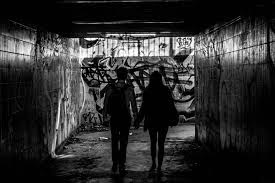
It’s all about Manchester, this week. Ah yes, football, chip butties and Boddington’s bitter, right?
Well ... sometimes maybe. But not today. Today, we’re looking at the darker side of the Northern English capital, its murder, its mayhem, its lurid criminal underbelly … or at least, we’ll be pondering it.
Because not only will I today review and discuss SIRENS, Joseph Knox’s enjoyable slice of Manchester Noir, I’ll be talking about my next Heck novel, KISS OF DEATH (Heck being a Manchester man displaced to London, of course), I’ll be previewing NOIR AT THE BAR, MANCHESTER, a literary event I’m honoured to be participating in, which is scheduled for this Thursday (April 26), and focussing a little bit on four lady crime-writers of my acquaintance, who, while they don’t necessarily live in Manchester any more, or even always write about it, were all born and/or raised there, and, as you’d realise within moments of chatting to them, are still Manchester lasses through and through.
They’ve all got new books out too, or will have in the next month or so – so a little showcase here ought to be timely.
Before we get into all that, if you’re only here for the SIRENS review, that’s fine. You’ll find it, as always, at the lower end of today’s blog. Feel free to scoot on down there right now. Otherwise, let’s get on with the rest of the business.
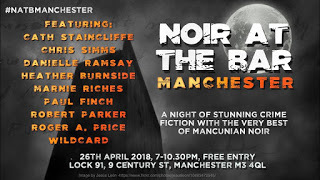 Firstly, a little bit about
NOIR AT THE BAR, MANCHESTER
.
Firstly, a little bit about
NOIR AT THE BAR, MANCHESTER
.For the uninitiated, Noir at the Bar is a literary tradition that first began in the States – in the four great cities of Philadelphia, St Louis, Los Angeles and New York, to be specific – and it involves crime fiction readers and fans gathering in specified public bars, where, needless to say, a damn good drink will be had by all, and where several noted crime writers (along with one wildcard entry, i.e. an amateur who wins a draw) will read out five-minute extracts from their next or latest novels.
Hugely popular in North America, the phenomenon spread to the UK a couple of years ago, and Noir in the Bar events are now springing up all over the country. I’ve been honoured to be invited to participate in three so far – Noir at the Bar, Carlisle a couple of years ago, Noir at the Bar, Wigan last year, and now Noir at the Bar, Manchester (which you can attend as a punter completely free of charge this Thursday, 7pm at Lock 91, 9 Century Street, Manchester (M3 4QL).
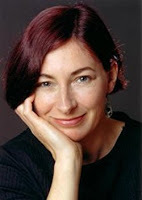 The full line-up consists of: Paul Finch, Cath Staincliffe (right), Chris Simms, Danielle Ramsay, Heather Burnside, Marnie Riches, Robert Parker, Roger A Price and, of course, the Wildcard. For my own part, I’ll be reading an extract from the new Heck novel,
KISS OF DEATH
(due for publication on August 9).
The full line-up consists of: Paul Finch, Cath Staincliffe (right), Chris Simms, Danielle Ramsay, Heather Burnside, Marnie Riches, Robert Parker, Roger A Price and, of course, the Wildcard. For my own part, I’ll be reading an extract from the new Heck novel,
KISS OF DEATH
(due for publication on August 9).On that subject, I was hoping to have a cover to show you today, but apparently it isn’t quite ready yet. I’m reliably informed that it will be available for your perusal on or around May 10, so keep watching this space for that. The official blurb is now up, however, and I’ll run it in a second.
Ironically, given that we’re talking so much about Manchester today, KISS OF DEATH is probably the first Heck novel in ages wherein he doesn’t visit the city. In fact, he seems to go everywhere but, from Humberside to the East End of London to Cornwall. But I venture to suggest that it’s still relevant to today’s chit-chat, because Heck, or DS Mark Heckenburg, as regular readers will know him, is a Manchester native who originally joined the Greater Manchester Police and only later on, in order to escape a family trauma, transferred south to the Metropolitan Police, where he was assigned to the National Crime Group and became a mainstay of the Serial Crimes Unit.
 As an ex-GMP cop myself, who ended up relocating to London, it was reasonably easy to get into the mindset of the guy, though even if I hadn’t been, there are precedents I could have followed. You may remember the character Jack Regan (right), from the pacy TV series of the 1970s, The Sweeney (one of my all-time favourite cop shows). Regan was also a Manchester man who found himself displaced to London, joined the Met and became a typical two-fisted DI of the old school.
As an ex-GMP cop myself, who ended up relocating to London, it was reasonably easy to get into the mindset of the guy, though even if I hadn’t been, there are precedents I could have followed. You may remember the character Jack Regan (right), from the pacy TV series of the 1970s, The Sweeney (one of my all-time favourite cop shows). Regan was also a Manchester man who found himself displaced to London, joined the Met and became a typical two-fisted DI of the old school.In an affectionate nod to all that, Heck himself is courted by the Flying Squad in KISS OF DEATH , which sequence includes this passage:
And it wasn’t as if the Flying Squad itself wasn’t appealing. Heck had worked Tower Hamlets Robbery once, though that had been a smaller role – mainly he’d found himself going after muggers and other street bandits. The Sweeney pursued the big boys. For that reason, there’d always been a certain glamour about it – they were regularly in the press and on TV. Their reputation for being wideboys, just a bit too close in spirit to the East End villains they often investigated, had always put him off in the past.
But again, things changed.
‘Not that Squad DIs don’t do a bit of soldiering themselves from time to time,’ Hunter added. ‘Just think, Heck, you can make your ultimate fantasy real … you’ll be Regan Mark II, a displaced Manchester lad working over the blaggers of London ...’
Anyway, I won’t go on about it too much because it’s still a couple of months off. As I said, I wanted to reveal the cover this week, but it’s not there yet. In the meantime, here is the official blurb:
A Deadly Hunt - DS ‘Heck’ Heckenberg has been tasked with retrieving one of the UK’s most wanted men. But the trail runs cold when Heck discovers a video tape showing the fugitive in a fight for his life. A fight he has no chance of winning.
A Dangerous Game - Heck realises that there’s another player in this game of cat and mouse, and this time, they’ve not just caught the prize: they’ve made sure no one else ever does.
A Man Who Plays With Fire - How far will Heck and his team go to protect some of the UK’s most brutal killers? And what price is he willing to pay?
I’m also, as promised, intending to chat at least a little bit today about four Manchester-born female crime writers, whose work I’ve become enamoured with. And all four, as I said, have got new books out, either now or very soon, so it seems timely to give them a bit of a plug.
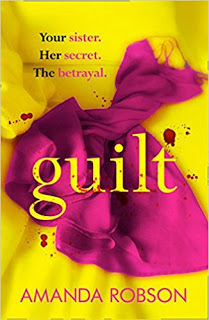 First up, Amanda Robson may have been born in Manchester, but graduated towards crime-writing after working in medical research at The London School of Hygiene and Tropical Medicine, and in the Poisons Unit at Guy’s Hospital, where she co-authored a book on cyanide poisoning. Her new novel,
GUILT
, was published one week ago, and concerns Zara and Miranda, twin sisters who always support each other … until Zara meets Seb. Handsome, charismatic and dangerous, Seb threatens to tear the sisters’ lives apart – but is he really the one to blame? Or are deeper resentments simmering beneath the surface? As the sisters’ relationship stretches to the brink, a traumatic incident in Seb’s own past then rears its head and all three find themselves locked in a psychological battle that will leave someone dead. The question is, who?
First up, Amanda Robson may have been born in Manchester, but graduated towards crime-writing after working in medical research at The London School of Hygiene and Tropical Medicine, and in the Poisons Unit at Guy’s Hospital, where she co-authored a book on cyanide poisoning. Her new novel,
GUILT
, was published one week ago, and concerns Zara and Miranda, twin sisters who always support each other … until Zara meets Seb. Handsome, charismatic and dangerous, Seb threatens to tear the sisters’ lives apart – but is he really the one to blame? Or are deeper resentments simmering beneath the surface? As the sisters’ relationship stretches to the brink, a traumatic incident in Seb’s own past then rears its head and all three find themselves locked in a psychological battle that will leave someone dead. The question is, who?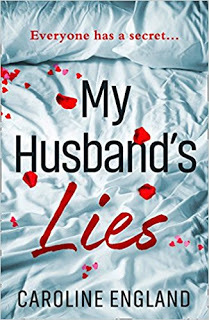 Next up, we have Caroline England, a Mancunian by adoption as she attended university there (having been born - and whisper this bit - in Yorkshire!!!) and never moved away again after. A lawyer by origin, Caroline’s new book,
MY HUSBAND’S LIES
, hits the shelves next month, and tells the tale of a wedding gone sour when a close friend of both the bride and groom winds up on on a hotel window ledge, ready to jump. The happy couple, Nick and Lisa, are stunned by this development, soon realising that neither they nor their closest friends have been as honest with each other as they perhaps should. But is that the whole of it? Could it be there are secrets lurking here that might destroy everything and everyone.
Next up, we have Caroline England, a Mancunian by adoption as she attended university there (having been born - and whisper this bit - in Yorkshire!!!) and never moved away again after. A lawyer by origin, Caroline’s new book,
MY HUSBAND’S LIES
, hits the shelves next month, and tells the tale of a wedding gone sour when a close friend of both the bride and groom winds up on on a hotel window ledge, ready to jump. The happy couple, Nick and Lisa, are stunned by this development, soon realising that neither they nor their closest friends have been as honest with each other as they perhaps should. But is that the whole of it? Could it be there are secrets lurking here that might destroy everything and everyone.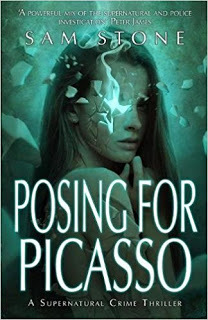 Third on the list, Sam Stone has worn a number of different hats during her writing career, dabbling successfully in vampire erotica, the supernatural and steampunk, but moving increasingly now into the world of noir. She’s a Prestwich girl by origin though currently living in Lincolnshire, and a former teacher. Her latest novel,
POSING FOR PICASSO
, recently published, strongly hints at her horror/fantasy roots, telling the tale of a Russian artist in New York, who becomes unjustly implicated in the mutilation/murders of his various models.
Third on the list, Sam Stone has worn a number of different hats during her writing career, dabbling successfully in vampire erotica, the supernatural and steampunk, but moving increasingly now into the world of noir. She’s a Prestwich girl by origin though currently living in Lincolnshire, and a former teacher. Her latest novel,
POSING FOR PICASSO
, recently published, strongly hints at her horror/fantasy roots, telling the tale of a Russian artist in New York, who becomes unjustly implicated in the mutilation/murders of his various models.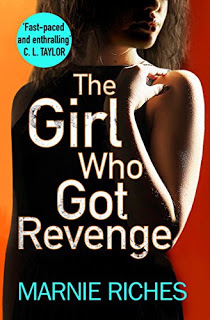 Last but by no means least – because this one is a force of nature - Marnie Riches, by her own admission grew up in a rough part of Manchester but ‘learned her way out of the ghetto’, earning a place at Cambridge University, where she gained a Masters degree in German & Dutch. Previously a children's author, she now writes very hard-hitting crime – the Guardian described her as ‘a leading light in Mancunian Noir’. Her latest novel,
THE GIRL WHO GOT REVENGE
(published one week ago), throws her regular character, criminologist Georgina McKenzie, into a complex double-murder case in Amsterdam.
Last but by no means least – because this one is a force of nature - Marnie Riches, by her own admission grew up in a rough part of Manchester but ‘learned her way out of the ghetto’, earning a place at Cambridge University, where she gained a Masters degree in German & Dutch. Previously a children's author, she now writes very hard-hitting crime – the Guardian described her as ‘a leading light in Mancunian Noir’. Her latest novel,
THE GIRL WHO GOT REVENGE
(published one week ago), throws her regular character, criminologist Georgina McKenzie, into a complex double-murder case in Amsterdam.As I say, not all these ladies write about Manchester these days, or even live there, but they are Manchester girls to the core, and if you’re a native yourself and/or of a mind to actively support some of the city’s finest daughter, well … you now what you’ve gotta do.
THRILLERS, CHILLERS, SHOCKERS AND KILLERS …
An ongoing series of reviews of dark fiction (crime, thriller and horror novels) – both old and new – that I have recently read and enjoyed. I’ll endeavour to keep the SPOILERS to a minimum; there will certainly be no given-away denouements or exposed twists-in-the-tail, but by the definition of the word ‘review’, I’m going to be talking about these books in more than just thumbnail detail, extolling the aspects that I particularly enjoyed … so I guess if you’d rather not know anything at all about these pieces of work in advance of reading them, then these particular posts will not be your thing.
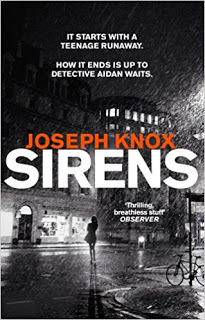 SIRENS
by Joseph Knox (2017)
SIRENS
by Joseph Knox (2017)
Detective Constable Aidan Waits is facing dismissal from the Greater Manchester Police. The product of a horrendous upbringing in care, he was probably unsuited for policework from the start, not least because it has brought him into contact with all kinds of irresistible temptations. You see, Waits may be a cop, but he is also an alcoholic and an amphetamines freak, who has increasingly let down his colleagues and got into more and more trouble with his supervisors.
However, a chance to redeem himself comes along unexpectedly when the hard-bitten Detective Superintendent Parrs of the Drug Squad decides that he’s the ideal person – a permanently semi-inebriated wreck! – to infiltrate the Franchise, the Manchester crime syndicate headed by London-born drugs kingpin, Zain Carver.
The purpose of this is twofold: firstly, to gather vital intelligence on a cartel who, now that their main rivals, the ultra-violent Burnside gang, have fallen apart, are completely dominating the city’s narcotics trade (and in the process flush out whichever corrupt copper is supplying the intel that’s keeping Carver ahead of the game), and secondly, to locate Isabelle Rossiter, the wayward 17-year-old daughter of bigwig politician, David Rossiter, who has run away from home and has been seen hanging around Fairview, the palatial residence where Carver hosts most of his drugs and prostitute parties.
This would be a dangerous mission by any standards, but Waits manages to ingratiate himself with the Manchester mob – mainly by letting Carver know that he’s an out-of-favour copper who may be useful! – only to be tempted again by the drink and the drugs, and this time by the women too. Carver’s world is only a pseudo-glamorous one, superficially glitzy on the outside while on the inside it’s rotten and abusive, but he has in his employ a bunch of beautiful young women, his so-called Sirens – Catherine and Sarah Jane, for example – who dress as party girls in order to traverse Manchester’s pubs and clubs, collecting his illicit earnings, and where necessary, supplying yet more illegal substances to the various dealers. In truth, these are sad, forlorn creatures – who knows what kinds of lives they were escaping to come and work here? – who Waits, in his few lucid moments, feels pity for as well as lust.
All these girls think they’re in love with Carver, though his attitude to them is more ambiguous; he cares about them to a degree, and is apparently keen to know what happened to Joanna Greenlaw – a former siren who vanished a decade earlier – but ultimately, though they affect the air of femmes fatales, they are nothing more to the callous gang-boss than mules.
Less attractive fixtures in Carver’s domain are Danny ‘Grip’ Gripe, his deformed enforcer, and brutal, bullying barman/dealer, Glen Smithson. In addition, as Waits is on the lookout for bent coppers, several shady lawmen also catch his attention: Special Branch’s Alan Kernick hangs around a lot, ostensibly to look after David Rossiter’s interests, but Waits soon starts to suspect that he has a deeper involvement in these nefarious activities, while DS Jim Laskey, though a refined sort on the surface, is another one making regular, unexplained appearances (and whose police methods when you get on the wrong side of him have more in common with the 19th century than the 21st).
I don’t want to say too much more about the synopsis of Sirens , because it’s a twisting, turning path that Waits takes as he works his way deeper and deeper into the city’s slimy underbelly.
Suffice to say that his judgement is not always the best. An ill-advised affair with Catherine leaves him vulnerable in many ways, not least because it means he takes his eye off the ball, infuriating his superiors at police headquarters, whose response is virtually to abandon him. As such, when Isabelle Rossiter, now a siren-in-waiting is found dead, the victim of a tainted batch of heroin, which claims other victims too – in a particularly graphic and horrible scene! – he can only press on with his enquiry by joining forces with Carver, who finally suspects that some mysterious third party is stalking his operation, looking to do a lot more damage than simply closing him down …
I’m sure Joseph Knox will forgive me if I confess that my initial reaction on hearing that he’s the new Raymond Chandler was that I’d believe it when I saw it. Time and again in noir fiction, we’re advised that a new master or mistress has come onto the scene who’s going to take it by storm. We’re confidently told that London, Liverpool, Birmingham – or in this case, Manchester – will be the next LA, as a new, downtrodden but street-savvy investigator wends his or her way through a world turned dark with corruption and vice.
All these things, and more, have been said about Joseph Knox and his new character, DC Aidan Waits. But the proof is always in the eating, to quote a cliché, and having now eaten, I think I can safely say – as a former Manchester cop and journalist, and as a crime writer who’s also set some of his novels in the northern capital – that a lot of those comments are non-too-wide of the mark.
Sirens is indeed an impressive slice of Manchester Noir.
All the boxes are ticked: it’s a neon-lit and yet gloom-ridden scene, filled with litter-strewn passageways, burned-out warehouses and seedy clubs, the backdoors to which are always lit by lurid red light, and peopled by hookers, addicts, bent cops, corrupt politicians and of course gangsters – lots and lots of gangsters. What’s more impressive is that this sleazy atmosphere doesn’t come at us in dollops of grandiose info-dump, but is threaded throughout Knox’s narrative. Quite simply, it’s always there; this is the world that Aidan Waits moves through constantly, barely noticing it let alone passing judgement. It’s a cynical ploy by the author, really – a frank depiction of a ghastly environment, which, because he totally immerses us in it, we have no option but to accept, but it doesn’t half work.
Some reviewers, rather indignantly, have said that this isn’t Manchester. Others meanwhile have said that it absolutely is. Personally, I’m not sure it matters. It may be accurate in its portrayal of landmark and location, but Sirens is a work of fiction, not a street-guide. In this book, Manchester is as much a character as Waits, and represents a real effort by the author to recreate the kind of urban jungle backdrop that Chandler did so effectively with Los Angeles, and Mickey Spillane with New York.
And of course, at the very heart of it there lies this hugely complex mystery. Ultimately, by crime novel standards, it’s almost something of nothing – no-one’s attempting to unleash a chemical weapon here, or to massacre a record number of the city’s prostitutes. As fictional criminality goes, it’s relatively low-key. But it’s fascinatingly done, and again, very Chandleresque, numerous puzzling threads dangling on every page, the reader haplessly trying to tie them all together as he/she progresses, and yet there’s never a moment when you think ‘this just doesn’t make sense!’, especially as, when you get to the end, it all comes together in the neatest way.
I freely admit to having started Sirens uneasily, wondering how deep and bewildering the case was going to get, and yet pressing on effortlessly because it’s excellently written, and its short-chapter format makes it very readable.
However, there is one way that Knox’s writing does differ significantly from the original masters of noir, and that’s in terms of his characters.
Okay, as I’ve already said, we’ve got every aspect of the city’s lowlife – not all of which is to be found in low places – though I think there are more extremes here than you’d find back in the golden age. The Bug, for example, is a total horror; a bipolar transsexual addict and whore, who salivates at the prospect of corrupting young people and is more than happy to suckle at the injection wounds of diseased heroin-users. I’m not sure that Chandler, Hammett or any of the other guys ever hit us with anything quite as OTT as that, while Sheldon White and the Burnsiders, the most brutish members of the Manchester gang scene, are more like a tribe of orcs: hideous, uncouth dolts, good only for violence, and happy to inhabit a part of town that lies in darkened, Mordor-like ruins.
Don’t get me wrong; it all makes for a terrific read, but personalities like these represent moments of bleakness so intense that it might put off those readers unequipped with strong stomachs and nerves of steel.
(One other brickbat, while we’re on the subject of such: I could have done without the regular quotes from Joy Division; I guess we all went through a time when we had gurus in the rock world, and a doomy, post-punk Manchester outfit probably seemed very appropriate in these circumstances, but I always worry that this kind of thing borders on pretentiousness. However, that’s a personal gripe, and doesn’t really detract from the overall book).
Now back to the characters: Waits himself, the star of the show, makes for an interesting if very flawed hero.
An alcoholic cop, who is also a chronic pill-head (even though he’s still only young) is, on the face of it, not the most attractive lead. He’s also a bit weedy; though Waits is capable of violence, there is no human brickwork here. He’s no Sam Spade or Mike Hammer. He’s cunning for sure, and he bides his time cleverly, but he’s more a fox than a wolf. Give him a good smack and he’ll definitely go down. And this frailty persists throughout the book; there are several occasions when you feel like telling the guy to get his act together. But highly likely this is exactly what Knox intended. A hero who isn’t a square-jawed cliché might be a big change from the norm, but it’s a refreshing change too (and hell, don’t worry too much if you don’t like Waits; no-one in the book does, either!).
Some of the other characters, and there is a literal plethora to pick from, are sketched more thinly, but they are all clear enough to me; at no stage was I confused about who and what they were, and every single one makes his or her own vital contribution to the story. I’d strongly refute the criticism that there are too many people in this novel, because none of them are extraneous.
I’ve also read some reviews complaining that most of the females in this book are victims, and I think that’s probably true (though several of them are willingly involved in crime), but my considered response to that must be, and it’s a sad observation to make, that even in our modern world most prostitutes are female, most victims of sexual harassment are female, and most of those suffering violence at the hands of wild, dangerous men are also female. In this regard, Joseph Knox is only showing us a hard slice of reality (not that it doesn’t sometimes make you embarrassed to be male).
To round up, Knox is without doubt an exciting new voice in the genre, and Sirens – a genuine piece of Manchester noir, fizzing with tension and menace. It’s as good a debut as I’ve seen in many a year. If you like gritty cop stuff, read it or weep.
And now, as ever, I’m going to try and cast it, in case it at some point gets the green light for film or TV development. Just a bit of fun, of course. No casting-director is likely to listen to me, sadly. Here though, are my picks:
DC Aidan Waits – Warren Brown
Catherine – Talulah Riley
Isabelle Rossiter – Katie Jarvis
Sarah Jane – Romola Garai
Zain Carver – Daniel Kaluuya
DSU Parrs – Angus Macfadyen
Detective Alan Kernick – Geoff Bell
David Rossiter, MP – Vincent Regan
Glen Smithson – Joe Gilgun
DS Jim Laskey – Philip Bulcock
Published on April 23, 2018 06:51
April 5, 2018
A quick trek into the cosmos of the mind
 It may be perverse of me, but in a week when I’m proofing my next thriller, have a glut of crime novels to read and a whole raft of new horror movies to watch, I’m going to be talking about science fiction.
It may be perverse of me, but in a week when I’m proofing my next thriller, have a glut of crime novels to read and a whole raft of new horror movies to watch, I’m going to be talking about science fiction.
Yes, this is one of those ‘relaxing’ blogposts, which is more designed to occupy readers during mid-morning tea breaks than impart crucial information to them.
To start with, I’m going to be reviewing and discussing – in what I hope is my usual forensic detail – Alfred Bester’s sci-fi masterwork, THE STARS MY DESTINATION (as always, you’ll find that review towards the bottom end of today’s column).
On a not dissimilar subject, I’ll also be presenting a gallery of what I consider to be the 25 best ever science fiction book covers. It’ll be an entirely personal choice, of course; browsers and readers must feel free to disagree, or add suggestions of their own.
Reaching for the stars
That’s not something I’ve ever done, basically.
Well, in purely metaphorical terms, I’ve tried to reach for the stars … but when it comes to writing about journeys to the stars, in other words penning sci-fi, that’s not something I’ve done a whole lot of.
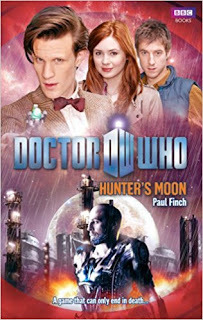 Okay, I’ve done it a little. Students of my career (assuming any such creature exists) will probably be familiar with my DR WHO output:
LEVIATHAN
and
HEXAGORA
, two full-cast audio dramas, and
SENTINELS OF THE NEW DAWN
, a Companion Chronicle, all courtesy of Big Finish Productions, which came out in 2010 and 2011; SPOILSPORT, a short story of 2008;
HUNTER’S MOON
and
TALES OF TRENZALORE
, published by BBC Books in 2012 and 2014; and THRESHOLD, the pilot episode of the Dr Who spin-off series,
COUNTERMEASURES
(Big Finish again) in 2012.
Okay, I’ve done it a little. Students of my career (assuming any such creature exists) will probably be familiar with my DR WHO output:
LEVIATHAN
and
HEXAGORA
, two full-cast audio dramas, and
SENTINELS OF THE NEW DAWN
, a Companion Chronicle, all courtesy of Big Finish Productions, which came out in 2010 and 2011; SPOILSPORT, a short story of 2008;
HUNTER’S MOON
and
TALES OF TRENZALORE
, published by BBC Books in 2012 and 2014; and THRESHOLD, the pilot episode of the Dr Who spin-off series,
COUNTERMEASURES
(Big Finish again) in 2012.Before any of that, way back in 1996, there was also A GLITCH IN TIME, a short story I wrote for the non-Dr Who spoken-word (these days it would be called ‘audible’) anthology, OUT OF THIS WORLD; this one has a really special place in my heart as, despite it existing in our universe rather than the Whoniverse, my particular contribution to this excellent anthology was narrated by the late, great Jon Pertwee.
 But the majority of this lot, as I’ve already said, is Dr Who-related, and therefore occupies a little world of its own, sitting slightly apart from the sci-fi mainstream. However, that doesn’t mean that I’m not a big fan or eager reader of all those other wondrous tales.
But the majority of this lot, as I’ve already said, is Dr Who-related, and therefore occupies a little world of its own, sitting slightly apart from the sci-fi mainstream. However, that doesn’t mean that I’m not a big fan or eager reader of all those other wondrous tales. My father, Brian Finch (right), another late, great character, and an author in his own right, was a huge science fiction buff, and helped turn me onto it as a genre when I was very young.
Perhaps that is why I’m slightly biased to the older school, as you’ll see when I present my 25 Best Covers. I hasten to add that I read the modern stuff too. But to put a gallery together like this, you really have to look for those cover-images that made the biggest impact on you, and in my case certainly, such a task took me back to my earliest days.
As with previous galleries – I did horror and crime on Oct 22 and Sept 10 respectively – I’m sticking to English language editions, as it would be too complex and time-consuming to go beyond that. Anyway, without further ado, here are what I consider to be …
THE 25 BEST SCIENCE FICTION COVERS OF ALL TIME
1. THE CHRYSALIDSJohn Wyndham (Penguin, 1970)

Not the first vision in sci-fi of a hellish post-apocalyptic world, but certainly one of the most intelligent, John Wyndham’s 1955 classic (originally published by Michael Joseph), takes us to a UK decades after the bombs have dropped, where a form of fundamentalist feudalism has reformed what remains of society, and as this marvellous cover amply illustrates, mutation is a source of open war.
2. MAKE ROOM! MAKE ROOM!Harry Harrison (Orb, 2008)
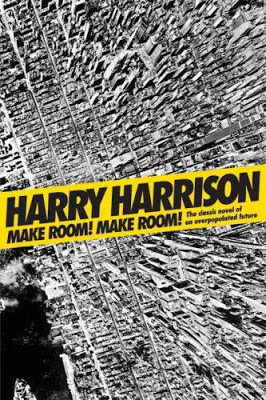
Probably best remembered for the 1973 movie version, Soylent Green (which considerably changed the plot), Harry Harrison’s 1966 masterpiece (first published by Penguin) envisions a world where overpopulation has collapsed all infrastructure, leading to societal chaos, and follows the fortunes of several hapless individuals. This Orb cover is clean, simple, and almost tells the story on its own.
3. THE LEFT HAND OF DARKNESSUrsula K. LeGuin (Ace Books, 1985)
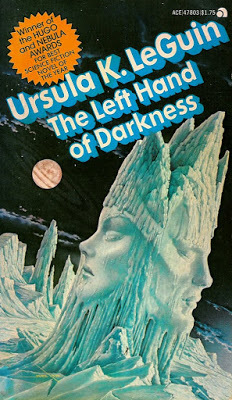 .
.The novel that made Ursula LeGuin’s name (and surely the best book title ever). First published in 1969 by Ace Books, the author’s career-long fascination with anthropology hits new heights of ‘what if'’, when, in a different universe to ours, a male ambassador makes contact with an ambisexual race, and fails to understand it - to a near fatal degree. Described as the first foray into ‘feminist sci-fi’
4. THE BLACK CORRIDORMichael Moorcock (Mayflower, 1973)
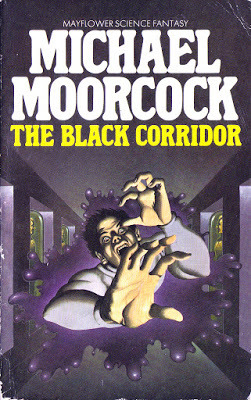
The embodiment of ‘new wave’ science fiction, as tough businessman, Ryan, takes a select band of friends on a stolen spaceship to escape an impending nuclear war. The trouble is that, while they lie in stasis, he must remain awake to steer the ship on its seven-year journey. First published by Ace in 1969, this later cover perfectly encapsulates his terrifying descent into solitude-induced madness.
5. DO ANDROIDS DREAM OF ELECTRIC SHEEP?Philip K. Dick (Doubleday, 1968)
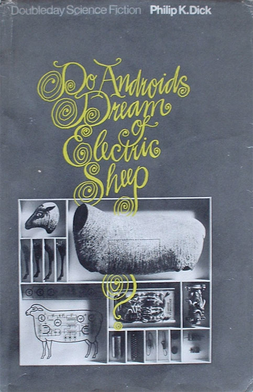
One of the most famous sci-fi novels of all time, though mainly because of the movie, Blade Runner, which differs in many ways, this deeply moving piece of visionary writing - and this is the original wonderful cover, as produced by Doubleday back in 1968! - sees a conscience-stricken bounty hunter pursuing a rogue band of human-like androids through a world dying from radiation poisoning.
6. THE RINGS OF SATURNIsaac Asimov (New English Library, 1974)

The final installment in the Lucky Starr series, a collection of sci-fi novels written for younger readers (despite this scary later cover). First published by Doubleday in 1958, it tells an adventurous spy story set in the Saturnian system, but, Asimov being Asimov, is nevertheless filled with advanced scientific thinking, and was viewed by many as a thought-provoking commentary on the Cold War.
7. FAHRENHEIT 451Ray Bradbury (Ballantine, 1953)
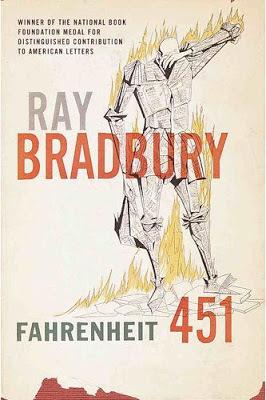
The ultimate Dystopia, as a young fireman becomes disillusioned with his job - which is not putting out fires, but starting them, using mountains of forbidden literature as fuel! What better cover could illustrate the anguish the author felt, not just about book-burning, but about book abolition in general? Written as a stinging response to McCarthyism, and viewed by many as Bradbury’s greatest work.
8. HELLSTROM’S HIVEFrank Herbert (Gollancz, 2011)
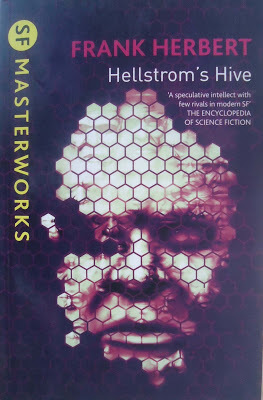
For once, not the original Doubleday cover, as first published in 1973, but an infinitely superior later one. Inspired by the speculative sci-fi/horror documentary of 1972, The Hellstrom Chronicle, this exceptional and chilling novel tells the tale of an undercover agent and his discovery of a secret society modelled along the lines of social insect communities, and the devastating events that follow.
9. THE DROWNED WORLDJ.G. Ballard (Penguin, 1965)

Another post-apocalyptic saga, though this time it isn’t Man’s fault, solar flares having returned much of the Earth to a topical Triassic paradise, where even a hard-headed scientific research team find themselves regressing mentally into a dreamlike, tribal state. First published in 1962 by Berkley, this later, postmodern cover hints at the darker, grosser elements that lie beneath Eden’s genial facade.
10. STAR MAKEROlaf Stapledon (Gollancz, 1999)
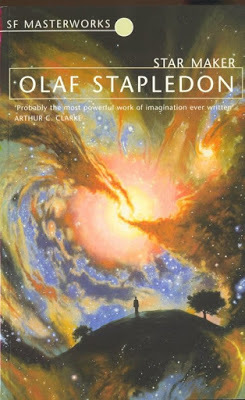
First published by Methuen in 1937 - pretty incredibly, given how long that was before space exploration became a real thing! - this remarkable odyssey of a sci-fi novel charts an Englishman’s journey through the universe in a disembodied state, at the same time telling us the story of all things and hitting us with a deluge of philosophy. How to illustrate such other than with a cover like this?
11. THE STARS MY DESTINATIONAlfred Bester (Gollancz, 2010)
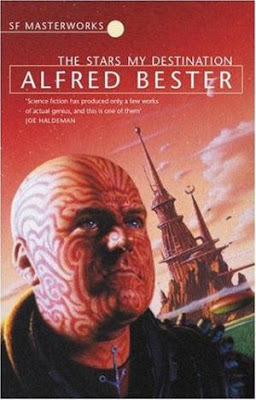
In some ways, this 2010 cover to a novel written in 1956 (first published by Signet) almost softens the ferocious character of tiger-faced Gully Foyle, who ruthlessly pursues vengeance across a solar system wracked by interplanetary war, but it remains one of the most iconic in modern sci-fi, putting the man first and foremost above the futuristic setting, and perfectly capturing the author’s intention.
12. I, ROBOTIsaac Asimov (Gnome Press, 1950)
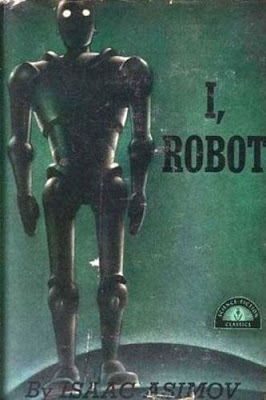
The wonderfully basic cover to the original publication, which, though it only partly provided the story for the recent Hollywood epic (that movie also owes quite a bit to Eander Binder’s same-titled short story of 1939), saw Asimov break phenomenal ground with a collection of interlinked stories and essays concerning the development and gradual humanisation of an imaginary android species.
13. ONE WAYS.J. Morden (Gollancz, 2018)
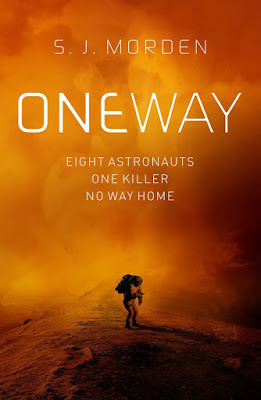
The most recent entry in the gallery, and in some ways more a ‘space-thriller’ than pure science fiction, but with a planetary geologist at the writing helm you know you’re in for an ultra-realistic assessment of just what it would mean for a party of condemned men sent to build a colony in the frozen wastes of Mars, who have no way back, and who, one by one, are then systematically murdered.
14. THE WAR OF THE WORLDSH.G. Wells (New American Library, 1986)
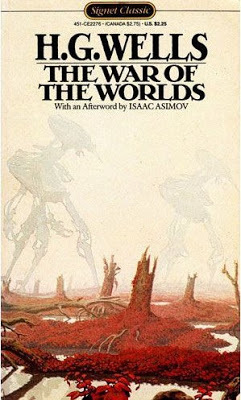
An appropriately horrific cover for what in truth was a horror story. Everyone is familiar with Wells’s masterly 1897 tale (first pub. by William Heinemann) of a late-Victorian era Earth at the mercy of an amoral and super-powered alien species prepared to wreak a total holocaust, but the transformation of our conquered world into a blood-soaked parody of Mars (as per this cover!) still has chilling impact.
15. STRANGER IN A STRANGE LANDRobert Heinlein (Ace Books, 1987)
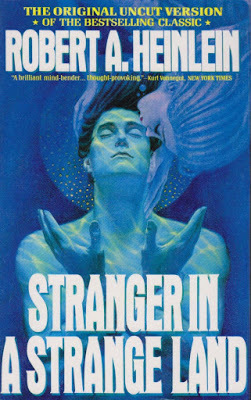
A human raised by Martians returns to Earth as a kind of pseudo-messiah, and promotes libertarian concepts like free love and communal living, as this provocative cover illustrates. First published by GP Putnam in 1961, it was ahead of its time, but not by much, and is often seen as a prelude to the counter-culture - the very last thing those who knew Robert Heinlein would have expected of him.
16. BRAVE NEW WORLDAldous Huxley (Chatto & Windus, 1932)
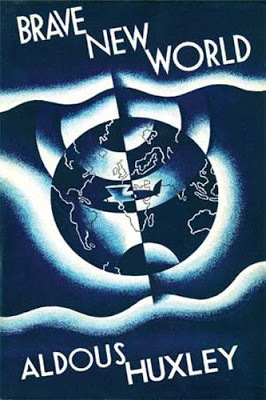
The original, unforgettable cover to what is probably the most famous sci-fi novel ever written, though it’s as much a philosophical text in its study of a future world where hard scientific theory rules, human beings are produced in test-tubes, and though society is harmonious and productive, this comes at the cost of a cruel caste-system, psychological manipulation and extreme social control.
17. SWARMGuy Garcia (Morphic Books, 2017)
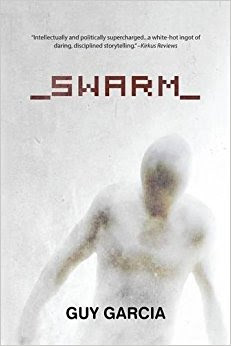
A sci-fi novel you genuinely believe could happen - and in the not-to-distant future. The horror-esque cover nicely imagines the central antagonist, Swarm, an expert hacker and cyber warrior, who comes into possession of illegal experimental software, the resulting transformative effect of which goads him into seeking to change society without considering the potential catastrophic consequences.
18. THE ROADCormac McCarthy (Alfred A Knopf, 2006)
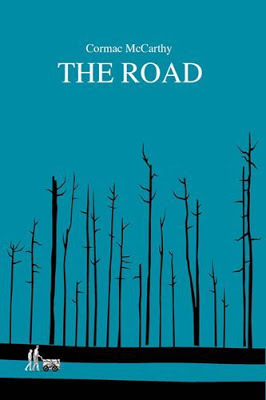
Surely the last word on the apocalypse, though the author maintains that he never considered it sci-fi, penning it as a simple study of a father and son, this chilling epic still tells the story of an odyssey through a North America ruined by some unspecified disaster, leaving no stone unturned in its quest for misery and pain, and yet remains a lyrical masterpiece. This bleak, spare image sells it perfectly.
19. GATEWAYFrederik Pohl (Penguin, 2008)
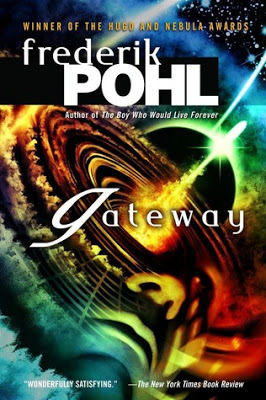
A suitably mind-blowing cover for the multi award-winning novel that kicked off an entire series of award-winners. First published by St Martin’s in 1977, it’s another of these incredible ‘imagine if’ sagas, in this case the human response to the discovery of a derelict alien space station, where all kinds of abandoned craft, with pre-set coordinates, promise immediate voyages to distant stars.
20. A TIME OF CHANGESRobert Silverberg (HarperCollins, 1975)
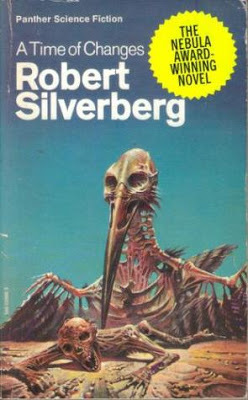
First published by Doubleday in 1971, this timeless tale of repression and revolution comes to us in the form of an intense autobiography as a young telepath seeks to overthrow a culture so down on individuality that the use of words like ‘I’ and ‘me’ are classified as a cultural crimes, and show his people exactly what it means to be human. As the ghoulish cover above illustrates, that won’t be easy.
21. THE PALACE OF ETERNITYBob Shaw (Pan, 1972)
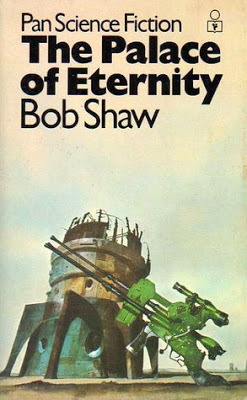
Originally published by Ace in 1969, this legendary sci-fi thriller never really needed an iconic cover to sell itself, but it got one eventually, as illustrated above. Master of his craft, Bob Shaw spins the action-packed but thought-provoking tale of an exhausted war veteran seeking redemption and refuge on the tranquil Poets’ World, only for the war to catch up with him again in the shape of his one-time comrades.
22. DUNEFrank Herbert (New English Library, 1968)
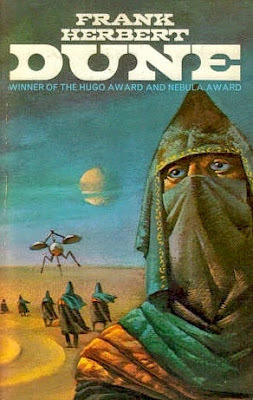
Everyone’s favourite space epic, and the cover that most genre fans remember best, mainly because it comes so close to encapsulating James Herbert’s colossal, multi-sequel-spinning 1965 saga (Chilton) of two noble houses fighting each other to the death across an interstellar empire. Yes, that’s correct; Herbert re-set the War of the Roses in Outer Space and created the best-selling sci-fi novel in history.
23. DAY MILLIONFrederik Pohl (Ballantine, 1970)

The original cover to a seminal collection of short stories, in which the author gives full vent to his imagination, taking his readers through the many realms of science fiction, but at the same time addressing serious issues like trans-sexuality, racism, medical and technological advance - both the benefits and drawbacks of such, etc. Still regarded as a masterly work by a true genius of the genre.
24. THE MARTIAN CHRONICLESRay Bradbury (Bantam Spectra, 2003)

First published by Doubleday in 1950, this episodic but poetic vision of Man’s attempted colonisation of Mars and his inevitable clashes with its indigenous inhabitants commenced life as a series of short stories originally published in the 1940s. But this latter-day cover is still the best, perfectly imagining the barren red world, along with its mythical canals, as envisaged throughout the early days of astonomy.
25. THE GREEN BRAINFrank Herbert (New English Library, 1973)
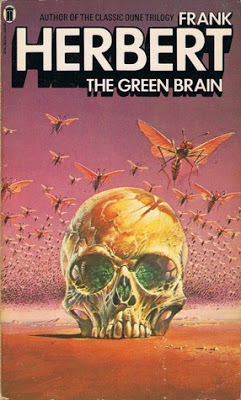
One of Herbert’s lesser-known works, but a classic of its time, originally published by Ace in 1966 (as Greenslaves), and dipping into the expanding eco-consciousness in its tale of a human race at war with Earth’s flora and fauna, and the retaliation from the insect world, as experienced by a scientific expedition to the Brazilian jungle. This later cover says all you need to know about the ensuing terror.
THRILLERS, CHILLERS, SHOCKERS AND KILLERS …
An ongoing series of reviews of dark fiction (crime, thriller, horror and sci-fi novels) – both old and new – that I have recently read and enjoyed. I’ll endeavour to keep the SPOILERS to a minimum; there will certainly be no given-away denouements or exposed twists-in-the-tail, but by the definition of the word ‘review’, I’m going to be talking about these books in more than just thumbnail detail, extolling the aspects that I particularly enjoyed … so I guess if you’d rather not know anything at all about these pieces of work in advance of reading them yourself, then these particular posts will not be your thing.
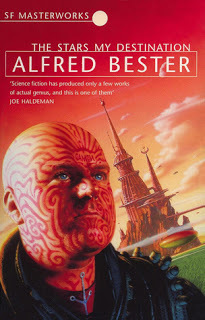 THE STARS MY DESTINATION by Alfred Bester (1956)
THE STARS MY DESTINATION by Alfred Bester (1956)In the 25th century, humanity has developed the power to jaunt, most individuals now able to transport themselves up to 1,000 miles simply by the power of thought. However, life has not improved greatly. Earth society is going through constant social and economic flux as a result, and though the solar system is fully colonised, the Inner Planets (Earth, Mars, and Venus) are in ongoing conflict with the Outer Satellites (the moons of Jupiter, Saturn and Neptune).
One casualty of this is the deep space cargo vessel, Nomad, which belongs to the influential Presteign corporation. Damaged by rocket fire, Nomad is now a drifting, incommunicado wreck with only one survivor on board, crewman Gulliver ‘Gully’ Foyle, an ignorant, uneducated man, who nevertheless stays alive against all the odds. He even manages to signal for help to passing sister-ship, Vorga, also a Presteign vessel, but is astonished when it deliberately ignores him, abandoning him to a terrible fate.
Infuriated beyond reason, Foyle manages to steer the floating scrapheap into the Asteroid Belt, where a little-known tribe called the Scientific People, a cargo cult who have long cut their ties with Earth, imprison him and tattoo his face with tiger stripes.
Still bent on revenge – and now looking the part as well – Foyle steals a ship to escape, and makes it back to Earth, where, in a barbaric state, he rapes a gentle, telepathic woman called Robin Wednesbury, and launches a one-man terrorist attack on Vorga, which fails and puts him in the grasp of the company’s all-powerful CEO, a man simply called ‘the Presteign’, someone who suddenly wants to know all about this errant crewman. It seems that Nomad was carrying a newly-discovered mineral, PyrE, which could change the course of the war – but Nomad is now lost, and only Foyle knows its coordinates.
Foyle is interrogated by a fearsome private security officer, the radioactive Saul Dagenham, but even Dagenham cannot break him, so he is condemned to life imprisonment in the hellish subterranean jail, Gouffre Martel. Here he befriends another convict, the resourceful Jisbella ‘Jiz’ McQueen, who educates him, advises him that it isn’t Nomad he should seek to destroy, but whoever gave the order to ignore him, and finally helps him escape.
Through Jiz’s criminal contacts, Foyle manages to remove the tiger-stripes from his face – though in times of anger they show again – educates himself further and augments his body so that he becomes a lethal fighting-machine. He then treacherously cuts Jiz loose and reappears as the dapper dandy, Geoffrey Fourmyle, bullying the unwilling Robin into helping him penetrate Presteign high society.
Everything is going to plan, but there are still problems. Those Vorga officers he tracks down involuntarily self-destruct before they can tell him anything, while his determination to ruin Presteign is hampered by his growing affection for the CEO’s beautiful daughter, the blind but infrared-sensitive Olivia. Meanwhile, Robin hates and fears him, Jiz is plotting something, and Foyle is troubled by an apparition he sees increasingly often: himself wrapped in flames. At the same time, the Outer Satellites are planning a massive attack, which they hope will win the war for them in one overwhelming blow.
If things have been difficult for Foyle so far, vastly more terrible days lie ahead …
On first reading The Stars My Destination , it would be quite simple to write it off as straightforward space opera. The incredible adventures of Gully Foyle and the personal changes he undergoes as, through endless stress and suffering, he transcends the status of brute underling, becoming first a wealthy, scheming sophisticate, and finally a godlike intellectual, is more than a little bit reminiscent of Alexander Dumas’ classic adventure, The Count of Monte Cristo . But if, after some protracted pondering, that remains your sole assessment of this visionary sci-fi novel, you need to read it again.
Comparisons between The Stars My Destination and The Count of Monte Cristo are not wrong, and there’s a specific reason for that, Alfred Bester, by his own admission, seeking to snare his audience with what initially seems like a simple, exciting plot-line over which he can lay some complex but wondrous notions.
Though initially an editor and script-writer for comics, by the mid-1950s Bester was regarded as one of the world’s leading science fiction writers (he ‘invented’ it, according to Harry Harrison), and if you need further proof of that, just consider when reading The Stars My Destination that he penned this astonishing story when the vast bulk of the public drew their knowledge of the genre from movies concerned with insects grown to giant size through atom bomb testing and threats posed to Earth by bulb-headed men who spoke in senatorial US voices. That any serious sci-fi prophesying was done by authors writing in that era is quite remarkable, but plenty of them did, and yet Alfred Bester was ahead of the game even by those standards.
The concepts he presents us with in The Stars My Destination were mind-boggling in their day, and in many ways still are, and yet the book is also threaded with mindfulness of what these developments for mankind would actually mean.
For example, in the 25th century (or the 24th, depending on which edition you are reading), Man’s reach might stretch across the solar system, but it isn’t as though Pluto is suddenly in our back yard. The vast distances remain, especially as jaunting between planets is impossible. And so, Earth has lost cultural contact with its colonies. They have become advanced societies in their own right, and barely understand Earthlings, let alone see them as friends, and when war breaks out, there is no empathy between the two sides. Earth and the inner planets aren’t even aware of the outer satellites’ military strength, while the cargo cult that abducts Foyle early in the book is a completely isolated tribe, whose whole world is now the wreckage of ours.
The jaunt itself (named after scientist Charles Fort Jaunte), was an amazing concept to 1950s audiences. Long before Star Trek ever thought of it, the inhabitants of The Stars My Destination jump from A to B via teleportation. But again, Bester ponders the upheavals that stem from this: for instance, valuable high-class women must be kept in jaunt-proof isolation to ‘protect their honour’, while convicts can only be held in jaunt-proof solitary confinement (resulting in hellhole prisons like Gouffre Martel).
More familiar concerns among sci-fi writers of Bester’s era are also on show. Chemically and mechanically enhanced human beings don’t remain human for long. Telepaths are in such demand that they must conceal their talents from almost everyone. The author was also worried about the rise of ultra-powerful corporations, and how in the future they might become empires in their own right. The Presteign, though maintaining an urbane exterior, is utterly ruthless, and has the full cooperation of the government’s own intelligence agency, as represented by Peter Yang-Yeovil.
And yet, despite all this fascination with psi-power and speculative science, the main driving force in the book is that most basic of all human instincts, a yearning for revenge.
It is perhaps a nihilistic concept that the route to godliness may lie with Man’s desire to get even with other men … but you certainly can’t argue with it in The Stars My Destination as it’s given to us so full-bloodedly. It’s illustrated visually in the form of Foyle’s tiger mask, which even after he’s had it superficially removed, blazes to life whenever he’s angry (surely one of the most impressive devices of its sort that I’ve ever encountered in fiction). This vengeful nature is the single thing that constantly drives Foyle, and lies at the heart of his thrilling escapes: from the floating wreckage of Nomad, from the clutches of the asteroid tribe, and even from the jaunt-proof subterranean prison. It is this same motivation which, in due course pushes him to better himself – mainly so that he can infiltrate high society, though unknowingly of course, it also pitches him towards the realm of perfection.
Foyle makes an intriguing anti-hero. Appalling in his behavior at some points – the attack on Robin Wednesbury, for example (which would need to be excised out if ever the book were to make it to film) – but also later on, when he plays the likeable but untrustworthy Fourmyle. But from the outset, he is never intended to be an ordinary person, much less a person of noble character. If anything, he is a metaphor for mankind’s own evolution (and the path that Alfred Bester clearly hoped we would at some point take).
I don’t want to say anything more about The Stars My Destination for fear of giving too much away, except to add that it’s well worth its classic status, and that if some of the concepts seem standard in sci-fi these days, that’s only because forward-gazing writers like Alfred Bester made them so.
Optioned for movie development many times, but never yet made and in fact described more than once as ‘unfilmable’, The Stars My Destination is nevertheless another of those novels I would dearly love to see on celluloid – either the big screen or TV – and so once again, I’m going to pitch in with my own thoughts on a possible cast. (One quick note; it’s currently in the hands of director Jordan Vogt-Roberts, who gave us Kong: Skull Island, so you never know – anything is possible). In the meantime, though, here are my picks for the leads:
Gulliver Foyle – Paul BettanyRobin Wednesbury – Tessa ThompsonThe Presteign – Ben KingsleyOlivia Presteign – Lea SeydouxJisbella ‘Jiz’ McQueen – Rhona MitraSaul Dagenham – Rufus SewellCaptain Peter Yang-Yeovil – Mathieu Amalric
Published on April 05, 2018 01:23
March 16, 2018
Horror meets Crime in a new twilight zone
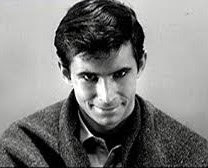 To celebrate the paperback publication earlier this month of John Connolly’s masterly A GAME OF GHOSTS, which I’ll be reviewing and discussing further down in today’s column, I thought I’d also talk a little bit about the horror and thriller genres - once seen as rivals, but now more like bedfellows - and that mysterious twilight zone where they meet.
To celebrate the paperback publication earlier this month of John Connolly’s masterly A GAME OF GHOSTS, which I’ll be reviewing and discussing further down in today’s column, I thought I’d also talk a little bit about the horror and thriller genres - once seen as rivals, but now more like bedfellows - and that mysterious twilight zone where they meet.Very relevant to this, I’ll also be chatting about PARTNERS IN CRIME at The Quad in Derby in a week’s time, on March 24, where with various other authors, I’ll again be discussing this same subject.
If you’re only here for the A GAME OF GHOSTS review, then feel free to scoot down to the bottom of today’s blogpost – you’ll find it in the usual place. However, if you’re interested in a broad-range discussion about the horror/thriller cloth from which this latest Charlie Parker outing is cut, then stick around for a bit (and by all means, have a say in the comments section).
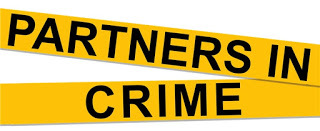 First off,
PARTNERS IN CRIME
– and this isn’t just a plug for an event I’m attending as a guest; it’s totally relevant to today’s topic. It’ll be a ground-breaking occasion, which will feature appearances from such crime-writing luminaries as Stuart MacBride, Fiona Cummins, AK Benedict, Steph Broadribb, Barry Forshaw, SJ Holliday, Jo Jakeman, David Mark and Roz Watkins. Okay, so far so familiar if you like crime fiction festivals, but I’m sure you’ll admit that all these names operate primarily at the darker end of the crime-writing spectrum, and look at who’s organising this event – it’s not the CWA, but the HWA, in other words the Horror Writers Association!
First off,
PARTNERS IN CRIME
– and this isn’t just a plug for an event I’m attending as a guest; it’s totally relevant to today’s topic. It’ll be a ground-breaking occasion, which will feature appearances from such crime-writing luminaries as Stuart MacBride, Fiona Cummins, AK Benedict, Steph Broadribb, Barry Forshaw, SJ Holliday, Jo Jakeman, David Mark and Roz Watkins. Okay, so far so familiar if you like crime fiction festivals, but I’m sure you’ll admit that all these names operate primarily at the darker end of the crime-writing spectrum, and look at who’s organising this event – it’s not the CWA, but the HWA, in other words the Horror Writers Association!What’s more, the panels are completely in synch with this. The two I’ll be participating in, I, Monster: Has the Serial Killer Replaced The Monster in Dark Literature? and Taboo! How Dark is Too Dark? (at 3pm and 4pm respectively), are also, each in their own way, looking at the overlap between the two genres.
In fact, the overall purpose of the event is to thoroughly examine this overlap, and ask has it always been there or is it something relatively new (perhaps spawned by the lack of new horror novels that mainstream publishing in the UK now seems willing to put its money behind)?
Personally, I’ve long contended that there isn’t a great deal of difference between the two genres, and in fact have wondered if there is any difference, might it simply be the choice of labels allocated by various marketing departments?
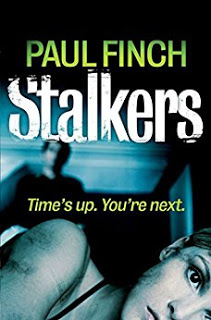 When I was moderating a panel at CrimeFest in Bristol last year, James Carol, author of many a brutal serial killer tale, said something similar to: ‘I write horror novels, but my publishers call them crime’.
When I was moderating a panel at CrimeFest in Bristol last year, James Carol, author of many a brutal serial killer tale, said something similar to: ‘I write horror novels, but my publishers call them crime’.Now, I wouldn’t say that I write horror novels. Not any more. But I think readers of my Heck and Lucy Clayburn books would agree that they contain strong horror elements. STALKERS , for example, concerns the hunt for a rape-club, the clients of which can nominate any victim, the operators then abducting said victim, providing a private venue where the attack can take place, and then disposing of all the evidence afterwards, (including the victim).
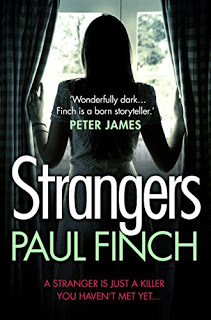 Similarly grim,
STRANGERS
follows a policewoman working undercover as a prostitute to try and catch a fellow streetwalker who is sexually murdering her male clients, and experiencing every kind of late night urban terror you can imagine.
Similarly grim,
STRANGERS
follows a policewoman working undercover as a prostitute to try and catch a fellow streetwalker who is sexually murdering her male clients, and experiencing every kind of late night urban terror you can imagine.It seems to me that, in reality, there is no such thing as ‘too dark’ in modern crime writing.
But perhaps this fusion between the two forms has always actually been there.
Back in the 1960s and 1970s, an era when mainstream publishing was not embarrassed to use the H word, the Pan Books of Horror Stories were incredibly gory and disturbing, but for the most part told tales of hardcore crime.
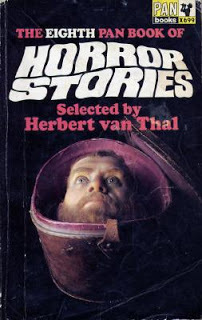 Okay, they rarely featured mysteries or whodunnits, but there were very few ghosts there, and even fewer vampires and werewolves, while conversely there were lots of rapists, serial killers, torturers and sundry other demented madmen. Herbert Van Thal, who initially edited the series, and some of the star names he acquired material from – like Charles Birkin, Dulcie Gray, Patrica Highsmith and Mary Danby – had no qualms at all about producing uber-dark crime thrillers when they were asked to provide horror.
Okay, they rarely featured mysteries or whodunnits, but there were very few ghosts there, and even fewer vampires and werewolves, while conversely there were lots of rapists, serial killers, torturers and sundry other demented madmen. Herbert Van Thal, who initially edited the series, and some of the star names he acquired material from – like Charles Birkin, Dulcie Gray, Patrica Highsmith and Mary Danby – had no qualms at all about producing uber-dark crime thrillers when they were asked to provide horror.Even earlier anthology series, like Alfred Hitchcock Presents Stories for Late at Night, were the same, mingling full-on horror with hard-boiled cop and PI stuff. To the editors and readers in those days, there was almost no distinction between the two. It was unapologetically the nerve-wracking end of the fiction spectrum. That was the sole criteria, and if you were uncomfortable when you got there, it was your own fault for straying in.
Modern masters have adopted a similar approach.
Stephen King became a global sensation with his early horror novels. In more recent years, he’s tended to write crime – but it often includes at least a pinch of traditional horror. Misery, published in 1987, is essentially an abduction plot but it features a terrifying antagonist in the shape of Annie Wilkes, a lunatic fan capable of almost any level of violence. Joyland (pub. 2013) is a proper crime novel, but it’s set in a rundown amusement park, a staple of the horror genre, and includes a ghost and a serial killer.
And there are plenty of others.
Thomas Harris’s Hannibal Lecter series totally straddles the two genres. In the Repairman Jack novels, F Paul Wilson introduced us to a hero who one week might be battling mob racketeers in the heart of Manhattan, and the next could be on the run from a horde of Bengali demons. The same is true of the previously mentioned Charlie Parker, John Connolly’s soldier of fortune in a world constantly on the edge of tipping into supernatural madness.
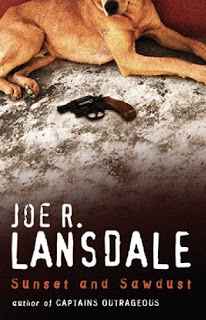 Joe R Lansdale and other Southern Gothic and rural noir writers like William Gay and Donald Ray Pollock frequently pitch us into otherworldly crimescapes, and often hit us with characters so deranged that they’d certainly have found a home in the old Pan Horrors. Here in Europe, James Oswald, Sarah Pinborough, Mark Edwards and Iceland’s Yrsa Sigurdardottir write crime but often with chilling supernatural subplots.
Joe R Lansdale and other Southern Gothic and rural noir writers like William Gay and Donald Ray Pollock frequently pitch us into otherworldly crimescapes, and often hit us with characters so deranged that they’d certainly have found a home in the old Pan Horrors. Here in Europe, James Oswald, Sarah Pinborough, Mark Edwards and Iceland’s Yrsa Sigurdardottir write crime but often with chilling supernatural subplots.And it isn’t just the written word. Check out the movies.
Back in 1960, Alfred Hitchcock blazed something of a trail by putting Robert Bloch’s 1959 cross-over chiller, Psycho, on film. In later years, David Fincher’s Se7en walked a tightrope between horror movie and hardboiled crime thriller (it works perfectly on both fronts). What about even more recent efforts like The Strangers, Shutter Island, Identity, Vacancy, Wolf Creek, Don’t Breathe?
Again, they tick plenty boxes on both sides of the fence.
So, PARTNERS IN CRIME is not going to be looking at some radical new direction in dark writing. It’ll be examining a furrow that’s been nicely and neatly ploughed for some considerable time.
(Of course, it’s not all cakes and ale. To return briefly to a point I touched on earlier, I ask the question again: are more horror writers migrating into crime and thriller fiction these days because they can’t make a living otherwise? I suspect there may be something in that. There are all kinds of pressures on professional writers in the 21st century. The advent of self-publishing and the huge exposure it finds through online retail means there are more titles out there now than ever before. Prices have gone down as a result, and so it’s harder for pro writers to obtain the ‘living wage’ advances that once were standard.
 That affects everyone in the game, but if you’re a horror writer, there are other burdens to bear alongside this. Horror readership was once dominated by young men, and it seems to be a new rule that young men don’t read much any more, but play computer games instead. Horror movies, meanwhile, remain as popular as ever, but this rarely translates into popularity for horror novels – which I suspect is also an age and culture thing).
That affects everyone in the game, but if you’re a horror writer, there are other burdens to bear alongside this. Horror readership was once dominated by young men, and it seems to be a new rule that young men don’t read much any more, but play computer games instead. Horror movies, meanwhile, remain as popular as ever, but this rarely translates into popularity for horror novels – which I suspect is also an age and culture thing).But you know, there is also a lot of good news here, from what I can see, and not just because I like writing crime fiction with a very dark edge, but because it means we have a whole new generation of crime/thriller wordsmiths who will always take the gloves off.
 Sarah Pinborough (above) and Yrsa Sigurdardottir (below) may look as if butter wouldn’t melt, but their material is edgy and terrifying, and judging from their endlessly rising star statuses, the reading public fully appreciates that.
Sarah Pinborough (above) and Yrsa Sigurdardottir (below) may look as if butter wouldn’t melt, but their material is edgy and terrifying, and judging from their endlessly rising star statuses, the reading public fully appreciates that.On which subject, time to move on now, and check out the latest paperback from another of the cross-genre’s absolute maestros …
THRILLERS, CHILLERS, SHOCKERS AND KILLERS …
An ongoing series of reviews of dark fiction (crime, thriller and horror novels) – both old and new – that I have recently read and enjoyed. I’ll endeavour to keep the SPOILERS to a minimum; there will certainly be no given-away denouements or exposed twists-in-the-tail, but by the definition of the word ‘review’, I’m going to be talking about these books in more than just thumbnail detail, extolling the aspects that I particularly enjoyed … so I guess if you’d rather not know anything at all about these pieces of work in advance of reading them yourself, then these particular posts will not be your thing.
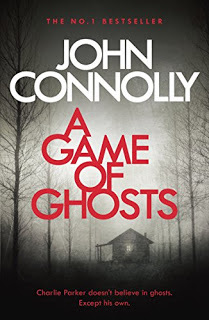 A GAME OF GHOSTS
A GAME OF GHOSTS
by John Connolly (2017)
Now is definitely not the ideal time for ex-NYPD cop and Maine-based private eye, Charlie Parker, to find himself embroiled in family-related legal matters, though I suppose there is never a good time for this kind of sadness.
Egged on by her domineering father, ex-partner Rachel has finally decided that Parker’s career is far too dangerous for their young daughter, Sam, and so is looking to the courts to restrict his access to her. Already denied one daughter, Jennifer – who was murdered along with her mother, Susan, (Parker’s wife) in a previous book, and yet whose ghost continually and very tenderly watches over him – the wearied investigator is left horrified by the prospect of this, and yet is helpless to resist. At the same time, he finds himself dragged into a particularly mystifying investigation, when his ever-secretive FBI handler, Edgar Ross, puts him on the trail of another PI, Jaycob Eklund, who dropped out of sight while looking into a series of historic murders and disappearances which have occurred all over the US.
Distracted by these big problems at home, but with his usual thorough professionalism, and assisted by ex-mob associates, Louis and Angel, Parker gets on the case, and almost immediately makes an unusual discovery – all the unsolved crimes that Eklund was investigating appear to be connected to reported hauntings. And that would be ‘hauntings’ in the traditional sense of the word, as in involving ghosts, spectres and the like.
This curious development then draws to his attention to the so-called Brethren, a cult-like group of the 19th century, whose leader, Peter Magus’s determination to live away from society, to rule his clan the way he saw fit, and to provide for them by murdering and robbing any outsiders who wandered too near, ensured their eventual destruction in a Waco-type apocalypse, and their immortalisation by romanticists as the Capstead Martyrs.
Except that the Brethren didn’t totally die out.
Before their final destruction, Magus had invoked what he believed were ‘angelic’ powers to ensure that his people would find the strength to resist punishment in the afterlife, though it isn’t long before Parker starts suspecting that, in actual fact, these powers have originated from somewhere else entirely (and what a moment that gives us, later on in the book). Either way, the Brethren not only still survive in American society today – secretly but murderously, as exemplified by the deadly and incestuous Kirk and Sally Buckner, whose phoney suburban lifestyle masks a truly venomous reality – but also on the ethereal plane, where their tortured spirits remain a real force to be reckoned with, and where they have used their psychic energies to zone in on Parker as a potential threat to their existence.
While all this is going on, Parker meets a pair of more earthly foes in the shape of Mother, the weird but scary matriarch of a declining New England crime family, and her odious son, Philip, who are also determinedly investigating the case and keen to know everything the PI knows. As if this isn’t enough, several villains whom Parker has encountered in previous novels also make an appearance. The Hollow Men, another vicious group of disembodied souls (he first met them in The Unquiet , Charlie Parker 6) and an obsessive serial killer, the Collector, (who first appeared in The Wrath of Angels , Charlie Parker 11) are drawn steadily into the case, piling on the pressure at a time when he really doesn’t need it.
It isn’t often that Parker feels the odds are stacked against him in a way that may prove insurmountable, but perhaps it was always bound to happen at some point …
Once again, John Connolly disproves the oft-aired maxim that you can’t mingle the modern-day crime thriller with supernatural horror. By my reckoning, A Game of Ghosts is now the 15th outing for super-intuitive private eye, Charlie Parker, and once again he’s walking a narrow line between the real world of organised crime and professional killers and the more nebulous realm of cults, covens and ghosts – but as always, the author pulls off the resulting complexity with his usual aplomb.
If there is any weakness to A Game of Ghosts , I think it’s probably that, 15 books in, the author no longer feels as much of a need to ease the genres together, and so newcomers to Charlie Parker may find it a curious blend.
What’s this? It’s got the air and tone of a hardboiled noir, and yet suddenly we’re talking about the undead!
If that’s the case, the only suggestion I can make is that you’d have been better starting at the beginning of the series rather than coming in so late (so go back to the first book; it’s not like you won’t enjoy it!).
Of course, those already familiar with Charlie Parker’s exploits will feel right at home. It’s not just the intriguing and never-less-than pacey story-telling that makes these novels such a delight, nor the endless right-angle turns in the narrative, which feel purpose-designed to throw you off kilter – it’s the style and verve with which they are written.
John Connolly’s slick prose and crackling dialogue are among the very best in the business, and I don’t say that lightly. In addition, the Parker books are liberally laced with the author’s signature mordant wit, which, certainly in the case of A Game of Ghosts , had me laughing out loud on several occasions, sometimes only a page or so after the hair on my scalp had prickled.
And yet, for all these light-hearted undercurrents, and despite the presence of beings from beyond –which in this one includes some real in-yer-face horrors (just wait till the finale!) – Connolly never loses sight of the fact that he’s writing a serious novel which also concerns itself with vile criminality. Various kinds of human barbarity are on show here, or at least are referred to. At times, the book almost switches into gritty ‘True Crime’ mode, taking us from gangland enforcement and torture (on occasion unstintingly described!) to rape, serial murder and so forth – in all cases, the casual disposal of human beings by creatures who are beyond amoral, and yet dealt with so matter-of-factly that it sets your skin-crawling.
Of course, such starkness hugely underscores the heroism of Parker and his trusty sidekicks, Angel and Louis, all three of whom, despite their many flaws (the latter two comprising a former hit-man and a thief), fearlessly tread these paths in their ongoing war against evil. And yet – and it’s particularly the case in this book – we focus too on the trio’s many vulnerabilities, which endears them to us even more: in A Game of Ghosts , for example, Angel is suffering health problems, which become an increasing cause of concern as the book goes on, both for Parker and Louis, and for the readers (some of these scenes are genuine tear-jerkers), while Parker himself is in the midst of his drawn-out domestic car-crash.
Isolated even more than usual from his estranged family, thanks to the legal shenanigans of his in-laws, and missing his two daughters (one living, one dead) desperately, as well as finally starting to feel the bumps, bangs and sprains of his chosen career, I don’t think I’ve ever seen the tough, two-fisted hero as tired and forlorn. It leaves you rooting for him more than ever, obviously, but the author handles these sequences with great pathos, never once straying into schmaltz.
Connolly is on equally great form when it comes to the secondary characters, especially the villains, who come in all shapes and sizes, though I do think that Mother and Philip, a demonic duo of heirs-apparent to a once-successful but now failing crime faction, are particularly abhorrent. Mother is a monster in almost every sense of the word, except that she’s clear-sighted and has no issue with doing the right thing if it suits her purposes, whereas Philip, equally a monster – a truly weird one – has the added disadvantage of being stupid, which means that he can’t even guess what’s around the next corner, let alone prepare for it: we suspect from the outset, with more than a little eager anticipation, that things aren’t going to go well for Philip.
But all this makes for a wonderful page-turner of a book. Assuming you like a touch of the darker stuff, A Game of Ghosts is John Connolly’s usual – a classy, expertly written thriller, spine-chilling and compelling in equal parts, pitching the reader into a world of supernatural make-believe but pumping up the hard-edged crime factor to a point where you’re absolutely convinced that it’s possible.
And now, as always, I’m going to round things off by trying to cast the book, should it ever make the screen. Frankly, given the success of the Charlie Parker series, I’m amazed this hasn’t happened already, though the last time I heard John Connolly opining on the subject, he didn’t feel that anyone serious had made a viable offer yet (things may have changed since then, of course). On top of that, there’d be the not inconsiderable issue that this is no. 15 in the series, so we must suspend belief and assume that all of the previous books, or some of them at least, have already been adapted, using the same essential cast that we have here. That may be a big ask, but hey! … this is my blog, so I can do what I want, yeah?
Charlie Parker – Hugh Jackman (surely looking for a new introspective hard-man role now that Logan is finished)Rachel – Vera FarmigaSam – Mia TalericoSally Buckner – Reese WitherspoonLouis – Malcolm-Jamal Warner Angel – John LeguizamoMother – Judi Dench Philip – Marc WarrenEdgar Ross – Sam NeillDon Routh – Mark PellegrinoThe Collector – Jared Leto
Published on March 16, 2018 05:01
March 8, 2018
Cruel, savage - and that's only the women
 I came into possession of an intriguing stat this last week, which has provoked today’s main line of thought.
I came into possession of an intriguing stat this last week, which has provoked today’s main line of thought. In short, I’ll be considering the differences, if there are any, between the sexes when it comes to both reading crime/thriller fiction and writing it. In addition today, because it’s very pertinent to that discussion, I’ll be reviewing and discussing in my usual microscopic detail, Danielle Ramsay’s bone-chilling murder mystery, THE LAST CUT.
As always, you’ll find that review at the lower end of today’s blog. If that’s all you’re here for, be my guest and zoom on down to the bottom to check it out. But if you’ve got a few minutes to spare first, perhaps you’d like to hear my views and thoughts on the battle of the sexes in crime fiction – though, as I’ve already hinted, and as I will now endeavour to explain, I don’t actually think there is one.
It all started when I was advised this week that 66% of my crime/thriller readership is male.
Now, I’m not entirely sure how those responsible arrive at these figures, but I must assume they know what they are doing and that it’s more than just an informed guess. In which case, I’m actually bucking the national trend, because in the UK at least, the audience for crime/thriller fiction is weighed 60/40 in favour of females.
Am I a one-off, then? Am I an aberration?
It may be explainable by my Mark Heckenburg novels being slightly more action-led than the average British police procedural, and if word of that has got out, more male readers might have plumped for Heck than would be the norm. But more likely, I think, the real answer lies in that old adage: there are lies, damn lies, and statistics.
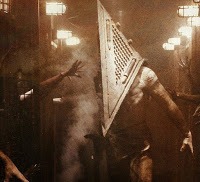 I have no doubt that certain genres appeal more to certain genders.
I have no doubt that certain genres appeal more to certain genders. Conventional wisdom holds that the demise of horror novel writing in the UK in the last 30 years is down to a dwindling readership, which, in its turn, can be put down to young males – who used to be voracious for that kind of fiction – being more interested now in playing computer games (like Silent Hill, above right). Likewise, romance, which is still a hugely saleable commodity, is generally regarded as being written and purchased mainly by women (though I’m sure that neither of these ‘facts’ are applicable across the board).
 In contrast, crime and thriller fiction is thought to occupy a kind of middle-ground, and I’m not entirely sure why.
In contrast, crime and thriller fiction is thought to occupy a kind of middle-ground, and I’m not entirely sure why. Apparently, there are some distinctions within that small central zone, with spy novels, for example – the domain of classic names like John le Carré, Len Deighton and Ian Fleming, and current practitioners like John Lawton, Philip Kerr and Mick Herron (left) – selling more to men, along with military actioners of the sort produced by Chris Ryan, Andy McNab, Duncan Falconer and Lee Child.
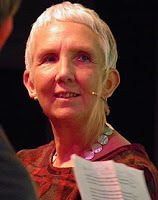 However, murder mysteries and police novels, as written by such modern mistresses of menace as Ann Cleeves (right), Elly Griffiths, Kate Ellis and Mari Hannahare allegedly bought more by women.
However, murder mysteries and police novels, as written by such modern mistresses of menace as Ann Cleeves (right), Elly Griffiths, Kate Ellis and Mari Hannahare allegedly bought more by women.You may ask yourself why (as I have done several times). Is this because female readers (and writers) are put off by overt violence more than their male counterparts? Or is it simply that, for females, reading is a more cerebral exercise, with the emphasis on solving a puzzle, than it is a blood-pumping physical experience in which brawn and gunfire ultimately triumph.
If I was to say yes to all that, I fear I’d be reinforcing some pretty old-fashioned stereotypes, and it’s not something I’d believe anyway … because my personal experience in this field is entirely different.
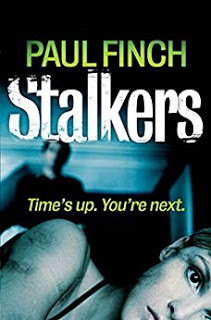 When I developed the idea for my first Heck novel,
STALKERS
(at that early stage known as THE NICE GUYS CLUB), various advisers expressed strong concern about its potential highly disturbing content. You see,
STALKERS
is all about a rape-club, which is operated by a secretive crime syndicate who charge their male clients huge amounts of money, in return for which they will secure any female victim of choice, provide a secure location in which the attack can occur, and then afterwards dispose of the evidence, including the victim.
When I developed the idea for my first Heck novel,
STALKERS
(at that early stage known as THE NICE GUYS CLUB), various advisers expressed strong concern about its potential highly disturbing content. You see,
STALKERS
is all about a rape-club, which is operated by a secretive crime syndicate who charge their male clients huge amounts of money, in return for which they will secure any female victim of choice, provide a secure location in which the attack can occur, and then afterwards dispose of the evidence, including the victim. I too thought it was a disturbing concept. In fact, when I first hatched the idea, I thought it would only work in a horror context. At first glance at least, it seemed far too strong for a police thriller. Though after some discussions with my other half, Cathy, we eventually concluded that it wouldn’t be if I was to write it – not exactly delicately, but as non-gratuitously as possible, approaching it mainly from the angle of the police investigation. Even then, certain people I spoke to were wary because, I was told, the majority of crime readers in the UK are female, as are the bulk of the editors in the major publishing houses.
Nevertheless, the novel was acquired and published by Avon, an imprint at HarperCollins, which again is staffed primarily by women (who actually asked me to up the violence and menace!), and went on to become a best-seller, with plenty of reviews, many by female readers, praising how grim and frightening they found it.
Now, the reality is that you don’t have to look very far to find lots more evidence of this. We have some great male crime/thriller novelists in the UK, who rarely pull their punches when it comes to violence, gore and generally horrifying concepts, Peter James, Stuart MacBride, James Carol and Mark Billingham, to name but a few.
But the first ladies of British crime are no strangers themselves to merciless subject-matter.
 We’re all pretty familiar with Val McDermid’s famous Tony Hill novels, in which a variety of fiendish crimes are perpetrated by various twisted maniacs against the run-down backdrop of the post-industrial Northeast. Also in the Northeast, but in Newcastle rather than Bradfield, Danielle Ramsay (left, also featured in today’s Thrillers, Chillers, Shockers and Killers) has recently unleashed an equally gruesome and traumatic new series in the DS Harri Jacobs books.
We’re all pretty familiar with Val McDermid’s famous Tony Hill novels, in which a variety of fiendish crimes are perpetrated by various twisted maniacs against the run-down backdrop of the post-industrial Northeast. Also in the Northeast, but in Newcastle rather than Bradfield, Danielle Ramsay (left, also featured in today’s Thrillers, Chillers, Shockers and Killers) has recently unleashed an equally gruesome and traumatic new series in the DS Harri Jacobs books. Across the country in Manchester, meanwhile, local lass Marnie Riches (right) explores the seamiest sides of gangland, never holding back on its grit and profanity. Further north in Edinburgh, Helen Fields repeately pitches her French-born cop, Luc Callanach, into an environment more brutally hostile than any he’s experienced before (and that’s only the weather – sorry, Helen!); but joking aside, cruel and savage murders aren’t the only horror he has to contend with.
Across the country in Manchester, meanwhile, local lass Marnie Riches (right) explores the seamiest sides of gangland, never holding back on its grit and profanity. Further north in Edinburgh, Helen Fields repeately pitches her French-born cop, Luc Callanach, into an environment more brutally hostile than any he’s experienced before (and that’s only the weather – sorry, Helen!); but joking aside, cruel and savage murders aren’t the only horror he has to contend with. There are plenty more of this ilk, and it’s not just here in the UK. Over in the States, Tess Gerritson, a medical doctor no less, tells stories so blood-curdling and so graphically gory that you’ll think you’ve strayed into a horror novel. Karin Slaughter notoriously doesn’t restrain the grue either – her concepts are regularly described as ‘horrific’. While Aussie author, LA Larkin (left), creates international, globe-trotting thrillers that are every bit as action-packed as the stories spun by our favourite ex-SAS writers (they also contain plenty of tech – another so-called male strength), and Iceland’s Yrsa Sigurdardottir has no qualms about threading her plots with supernatural terror.
There are plenty more of this ilk, and it’s not just here in the UK. Over in the States, Tess Gerritson, a medical doctor no less, tells stories so blood-curdling and so graphically gory that you’ll think you’ve strayed into a horror novel. Karin Slaughter notoriously doesn’t restrain the grue either – her concepts are regularly described as ‘horrific’. While Aussie author, LA Larkin (left), creates international, globe-trotting thrillers that are every bit as action-packed as the stories spun by our favourite ex-SAS writers (they also contain plenty of tech – another so-called male strength), and Iceland’s Yrsa Sigurdardottir has no qualms about threading her plots with supernatural terror.So come on, guys … where does that leave me with this conundrum about 66% of my readership comprising men when the evidence would suggest that it’s the women (yep, both the writers and the readers) who are the real gorehounds?
The only solution you can realistically come to is that figures can be misleading (especially those on which huge assumptions are so often made) and that in truth … we’re all as barmy as each other.
THRILLERS, CHILLERS, SHOCKERS AND KILLERS …
An ongoing series of reviews of dark fiction (crime, thriller and horror novels) – both old and new – that I have recently read and enjoyed. I’ll endeavour to keep the SPOILERS to a minimum; there will certainly be no given-away denouements or exposed twists-in-the-tail, but by the definition of the word ‘review’, I’m going to be talking about these books in more than just thumbnail detail, extolling the aspects that I particularly enjoyed … so I guess if you’d rather not know anything at all about these pieces of work in advance of reading them yourself, then these particular posts will not be your thing.
 THE LAST CUT
THE LAST CUT
by Danielle Ramsay (2017)
DS Harri Jacobs is a cop on the edge.
Okay, lots of police fiction likes to adopt that attitude, but in this case, author Danielle Ramsay really means it. Her central character has been through an ordeal the likes of which few people would recover from. A Newcastle girl by origin, she joined the Metropolitan Police in London, during the course of which service she was attacked and raped with such ferocity that she almost died. Before abandoning her broken body, her anonymous assailant made things even worse by promising her that one day he’d return and finish the job.
As part of her effort to get over this nightmare – not least because, somewhat outlandishly, she suspected that one of her London colleagues, DI Mac O’Connor, was the culprit – Harri transferred to Newcastle, feeling more at home in familiar surroundings. But even then – and this is where the novel actually starts, she is increasingly frightened and paranoid. It hardly seems likely that her attacker will follow her north, but while Harri is a strong, tough character, she is deeply damaged psychologically, and finds that she can’t trust anyone. Not only that, she keeps her new colleagues at arm’s length. In the case of wideboy DC Robertson, it’s perhaps understandable, because he’s a total throwback, but DI Tony Douglas is one of the good guys, and yet Harri is equally cool with him. And after all that, at the end of each trying day, she goes back home to an upper apartment in an otherwise empty industrial building, where she barricades herself in, so increasingly unnerved by the all-encompassing darkness that she sits with her back to the door and a baseball bat in her hand.
Of course, none of this self-imposed isolation really prepares her for the ultra-difficult days that lie just ahead.
A series of horrific crimes commences, when a young woman is found murdered and ghoulishly disfigured. We, the readers, know who is responsible; we don’t know his identity, but we’ve seen him at work in his homemade surgical lab, where he coldly, clinically, crudely, and in eerie, concentrated silence, performs torturous reconstruction on helpless and brutalised female captives. We realise, without needing to be told, that the body already discovered will only be the first of many.
All of this would be difficult enough for the cops to deal with, but Harri’s own troubles are about to get a whole lot worse. Not only has the first victim been left at a deposition site which has personal meaning for her, but she then becomes the recipient of information connecting this latest atrocity to the attack that she herself suffered (including, very alarmingly, photographic images). Convinced that it’s the same perpetrator finally coming back for Round Two, Harri knows that if she was to hand this new intel to her bosses, she’d immediately be taken off the case – and she cannot stand that thought. She’s only just regained control of her life, and to lose it again, so soon – to the same heinous villain – would be more than she could bear.
And so begins one of the most difficult enquiries that any police officer, fictional or otherwise, has ever embarked on, the killer behaving ever more monstrously, Harri agonised with guilt about withholding key evidence from the rest of the team, but determined to stay on the case, because unless she is the one to take this fiend down, she knows that she’ll never have peace, and will never be able to live with herself …
In the modern era, there is an increasingly thin line between crime fiction and horror, and in The Last Cut , Danielle Ramsey crosses it several times. Make no mistake, this story centres around a truly horrific concept.
Conceive, if you can, of a serial killer who abducts his victims, straps them down in the dark and the cold, and then literally goes to work on them over a period of days, if not longer, gradually transforming them through non-anaesthetised surgery into a completely different kind of creature. Scalpels, needles and acid are all applied liberally. He even replaces their eyes with glass baubles, so that in the end only featureless monstrosities remain.
Danielle Ramsay doesn’t lay it on hard in terms of obscene detail, but again, it’s the bone-chilling concept. If you tried to put that idea alone into a movie, it would be 18-rated for sure.
The horror movie atmosphere doesn’t end there, either. The Last Cut isn’t just about a deranged killer and his nightmarish MO. It’s also about the state of heroine, Harri Jacobs’s mind. This is without doubt one of the most effectively traumatised lead-characters I’ve encountered in a crime novel to date. Primarily, that’s because it’s not in the reader’s face, but it’s there nevertheless, lurking constantly in the background.
Harri, as we’re told from the outset, it a rape survivor. Though, in many ways, she hasn’t survived at all. Her intense conviction that the madman who attacked her is not only still out there, but still stalking her, and even murdering other women in the most elaborate, grotesque ways in order to get at her, clouds her thinking to the point where she withholds essential info from her superiors, misjudges fellow officers (almost fatally at one point), and is driven to live like a recluse in a semi-derelict former factory with only a single, heavy-duty lift connecting her residence to the rest of the world.
This excellent latter device is itself hugely effective in creating a sense of fear and alienation. Harri is a lonely soul even during the day, when she’s on duty. She is so convinced that indifference to her plight lurks on all sides that she takes desperate, dangerous measures to ensure that she is kept on the case, which segregates her massively. But at nighttime, this sense of paranoia literally takes physical form. She blockades herself into this terrible old building, which creates a siege mentality, thanks to which she gets almost no rest.
The mere thought of this is blood-curdling. How would you react if, in the darkest part of the night, you heard movement on the other supposedly empty floors? How would you respond if you suddenly heard the lift ascending in the early hours of the morning – and indeed how does Harri respond?, because yes, you guessed it, that’s exactly what happens.
This is all tremendously effective in creating a dark, ultra-grim police novel.
The authentic Newcastle setting is desolate and gloomy, and again in horror fiction fashion, maintains a subtle but ghostly aura. We’re so focussed on the tight, tense interplay of the central characters that we see very little of the cty’s day-to-day life or its general population (aside from those among them who die so horribly – one gruesome event on the Tyne Bridge lingers long in the memory), so the whole of Tyneside is there, but mostly as a spectral backdrop.
Danielle Ramsay obviously loves her native Northeast, but this is a stark portrayal of the difficulties faced by police teams in the heart of an unfeeling city, especially when they are confronted by particularly violent crimes. It also reminds us that police officers themselves are only human, and likely to be damaged by many of the things they see and do – and quite often are not always the best judges of their own situations.
An intense, brooding psycho-thriller, gritty and dark as hell, and built around a disturbing but intriguing mystery. You can’t afford to miss it.
As I say, I would love to see The Last Cutget the film or TV treatment, even if it could never be sceened after 9pm (not that that would worry me). On the off-chance it will happen, and I so hope it does, here are my picks for the leads:
DS Harri Jacobs – Emily BeechamDI Tony Douglas – Robert GlenisterDI Aaron Bradley – William MoseleyDI Mac O’Connor – Christopher FulfordDC Robertson – Anthony Flanagan
Published on March 08, 2018 03:14
February 18, 2018
Vampires, ghouls and mad, cursed clowns
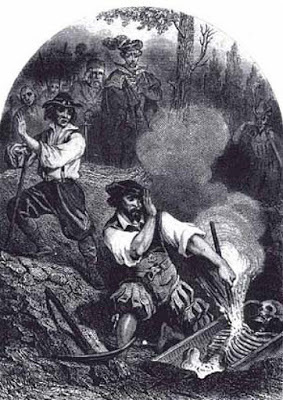 We’ve been up in the Lake District this week, purely for a holiday, you understand, but perhaps unavoidably it ended up turning into a whistle-stop tour of Cumbria’s spookiest and most mysterious places. Anyway, that’s going to be the theme of today’s chit-chat, and more about it shortly.
We’ve been up in the Lake District this week, purely for a holiday, you understand, but perhaps unavoidably it ended up turning into a whistle-stop tour of Cumbria’s spookiest and most mysterious places. Anyway, that’s going to be the theme of today’s chit-chat, and more about it shortly.Also on the subject of folk-themed horror, I thought I’d take the opportunity this week to review and discuss – in my usual forensic detail – Thomas Tryon’s time-honoured rural chiller, HARVEST HOME. As always with my book reviews, you’ll find that at the lower end of today’s blogpost. Head on down there if that’s what you’re looking for. But if you’ve got a bit more time, let’s talk first about the Lake District’s spookiest places.
Tales of Lake District terror
Readers of my regional TERROR TALES series, which I’ve been editing since 2011, will most likely be aware that it all started in the Lake District, and was inspired by my childhood memories of the Tales of Terrorseries (as edited by R. Chetwynd-Hayes) which I read during family holidays up there in the 1970s.
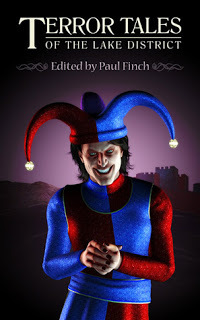 As I intend to try and get another volume of the series out this year, I reckon it was probably inevitable that my recent trip to the Lakes with my wife, Cathy, would turn into a retrospective on the region’s scariest localities.
As I intend to try and get another volume of the series out this year, I reckon it was probably inevitable that my recent trip to the Lakes with my wife, Cathy, would turn into a retrospective on the region’s scariest localities.We found ourselves rattling around as many of these as we could, visiting numerous places originally immortalised – either in fictionalised form or as factual anecdotes – six years ago in TERROR TALES OF THE LAKE DISTRICT .
Here are a just few of them.
The village of Croglin is a bleak and rather isolated place in northeast Cumbria, and quite difficult to get to (unless you’ve got a four-by-four). We visited it anyway but were unable to gain access go Croglin Low Hall (formerly Croglin Grange), as it is now privately owned. This, of course, was the venue for the famous legend of the Croglin Vampire.
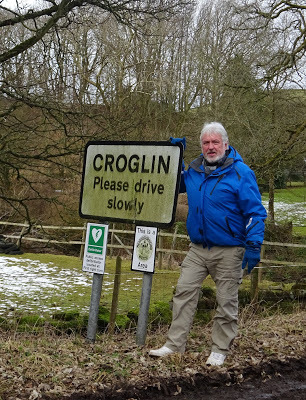 In short, three siblings, two brothers and their sister, rented remote Croglin Grange for an extended holiday, but it turned into a nightmare as, for night after night, they were forced to fend off the attentions of a ghastly revenant, which approached the building from a nearby derelict chapel and continually attacked the young woman in her bedroom.
In short, three siblings, two brothers and their sister, rented remote Croglin Grange for an extended holiday, but it turned into a nightmare as, for night after night, they were forced to fend off the attentions of a ghastly revenant, which approached the building from a nearby derelict chapel and continually attacked the young woman in her bedroom. Even today, the origins of this curious story are shrouded in mystery. Some say it dates from the late 19th century, which was when Victorian journalist Augustus Hare first wrote about it (very colourfully), though that possibly owes to a reawakening of interest in the concept of vampirism after the first publication of Dracula. As the chapel in the story did not exist in the 19th century, I put more credit in an earlier version I read, which dated it to ‘30 years after the Great Rebellion’. This could refer to the Jacobite Rising of 1745, but more likely means the Civil War, thus locating the Croglin Vampire in the 1680s (check out the 17th century lithograph, illustrating a classic vampire hunt of that era, at the top of this page).
If you want to know the full story of the Croglin terror, you can easily find it online (or you can buy TERROR TALES OF THE LAKE DISTRICT ).
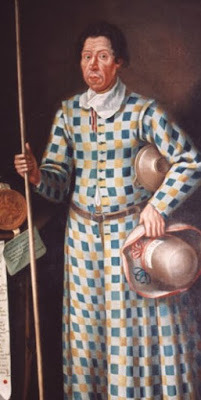 Also locked up for the off-season was Muncaster Castle, once home to the legendary Mad Clown of Muncaster. This completely true story refers to Tom Skelton, better known as Tom Fool (left), a jester in the service of Ferdinand Pennington, the ruthless lord of the manor during the late 1500s. Whether or not Fool’s comical antics genuinely amused his employers is not recorded by history, but his crimes are, because Lord Ferdinand also used him as an assassin. Fool is known to have murdered at least a couple of his master’s enemies, including one whom he decapitated, and to have accounted for several foes of his own in various gruesome ways (including his personal favourite, drowning). His damned soul is still said to haunt the castle (one of many, apparently), where it allegedly creates a malignant atmosphere. Ghost story officianados will probably recognise Tom Fool as the inspiration for Geoffrey Warburton’s rather excellent and very scary short story, Merry Roderick (which I should add, does NOT appear in TTOTLD).
Also locked up for the off-season was Muncaster Castle, once home to the legendary Mad Clown of Muncaster. This completely true story refers to Tom Skelton, better known as Tom Fool (left), a jester in the service of Ferdinand Pennington, the ruthless lord of the manor during the late 1500s. Whether or not Fool’s comical antics genuinely amused his employers is not recorded by history, but his crimes are, because Lord Ferdinand also used him as an assassin. Fool is known to have murdered at least a couple of his master’s enemies, including one whom he decapitated, and to have accounted for several foes of his own in various gruesome ways (including his personal favourite, drowning). His damned soul is still said to haunt the castle (one of many, apparently), where it allegedly creates a malignant atmosphere. Ghost story officianados will probably recognise Tom Fool as the inspiration for Geoffrey Warburton’s rather excellent and very scary short story, Merry Roderick (which I should add, does NOT appear in TTOTLD). Once again, you won’t have to look hard online to get the full details on Fool.
 As I mentioned before, we couldn’t get into Muncaster Castle, but the grounds were at our full disposal, and they are pretty spectacular, overlooking the amazing Esk Valley, which on a fine wintry day resembles a vista from Middle Earth. While perusing the otherwise deserted woods, we encountered some rather astounding and unearthly vegetation – imported from the Himalayas, or so I’m told – but sadly, at no stage felt the presence of an undead jester capering clumsily through the trees behind us.
As I mentioned before, we couldn’t get into Muncaster Castle, but the grounds were at our full disposal, and they are pretty spectacular, overlooking the amazing Esk Valley, which on a fine wintry day resembles a vista from Middle Earth. While perusing the otherwise deserted woods, we encountered some rather astounding and unearthly vegetation – imported from the Himalayas, or so I’m told – but sadly, at no stage felt the presence of an undead jester capering clumsily through the trees behind us. One of the most famous esoteric attractions in the Cumbrian fells, of course, is the Neolithic stone circle, Long Meg and Her Daughters. An oval of 59 ancient stones, some 27 of which have now fallen over and lie half-buried in the lush turf (as Cathy here illustrates, taking a breather on one of them), it runs to 360 feet in diameter at its widest point, encompassing a local farm road, though the largest stone, Long Meg herself, stands aloof from the others, as though watching over them, and still bears semi-decipherable Bronze Age inscriptions.
One of the most famous esoteric attractions in the Cumbrian fells, of course, is the Neolithic stone circle, Long Meg and Her Daughters. An oval of 59 ancient stones, some 27 of which have now fallen over and lie half-buried in the lush turf (as Cathy here illustrates, taking a breather on one of them), it runs to 360 feet in diameter at its widest point, encompassing a local farm road, though the largest stone, Long Meg herself, stands aloof from the others, as though watching over them, and still bears semi-decipherable Bronze Age inscriptions.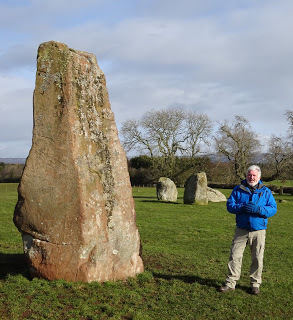 All kinds of legends are attached to this enigmatic site, the most famous being that a female druid and her acolytes were engaged in a pagan ceremony, which the Christian God found so repulsive that he retaliated to it by turning them all to stone. It was certainly regarded as a place of evil by local God-fearing communities in the Middle Ages, and even now – on the day we visited – there is evidence that arcane rituals are still practised there, which is impressive, because yet again, it isn’t an easy place to get to, or even find (just out of interest, try following some of these unmarked, unmapped roads that lead into the great frozen emptiness of Northern England at this time of year; it really is a wild moorland wilderness).
All kinds of legends are attached to this enigmatic site, the most famous being that a female druid and her acolytes were engaged in a pagan ceremony, which the Christian God found so repulsive that he retaliated to it by turning them all to stone. It was certainly regarded as a place of evil by local God-fearing communities in the Middle Ages, and even now – on the day we visited – there is evidence that arcane rituals are still practised there, which is impressive, because yet again, it isn’t an easy place to get to, or even find (just out of interest, try following some of these unmarked, unmapped roads that lead into the great frozen emptiness of Northern England at this time of year; it really is a wild moorland wilderness).I have to say that Long Meg doesn’t feel like a sinister place to me, but then I’m a veteran visitor to Britain’s most ancient and mysterious sites. The atmosphere is more of timelessness and grandeur than anything else, but in TERROR TALES OF THE LAKE DISTRICT , author Anna Taborska went at it full-throttle with her wonderfully chilling Night of the Crone.
Eerier by far, and not too distant from Long Meg is the much-avoided Cross Fell, a geological formation of such ill repute that even today no road leads to it, and almost no one ever attempts to hike over it. To put things into clearer perpective, I should explain that Cross Fell has only been called Cross Fell since 1608, when a large stone crucifix (now long lost) was erected on the summit to thwart the activities of evil spirits. Prior to that, throughout the entire history of local folk naming hills and mountains, it was known as Fiend’s Fell.
 As you can probably guess from this aeriel picture (thanks to Simon Ledingham), we didn’t get up to it, but we did come within sight of it, and it rightly earns its reputation for being a gloomy spot, standing covered in snow and fog throughout the winter, and looking as ominous as any land-form I’ve ever seen.
As you can probably guess from this aeriel picture (thanks to Simon Ledingham), we didn’t get up to it, but we did come within sight of it, and it rightly earns its reputation for being a gloomy spot, standing covered in snow and fog throughout the winter, and looking as ominous as any land-form I’ve ever seen.In medieval times, it was said to be home to Peg Sneddle, a witch who rode the very wind in order to bring destruction on local villages, while in later centuries, various exorcisms were held on its upper slopes, all of which failed because they were either bombarded with heavy stones from the mists high above, or the ministers were disturbed to the point of flight by the sound of shrieking voices and hysterical laughter.
One of the most interesting aspects of the Fiend’s Fell story is that no one knows (nor apparently ever did), why it has such an evil reputation. Nothing dreadful is known to have happened there in history, though it has been conjectured that goblins, sprites and other pre-Christian beings might have fled to the fell during the gradual conversion of Northern England in the Dark Ages, and now hold it as a last redoubt. Whatever the truth, it has the aura of a genuinely ‘bad place’.
 Another allegedly evil spot we didn’t quite get to – we only had so much time – but which I’ve visited before, are the Fairy Steps near the village of Beetham, in the South Lakes. Accessible in the limestone cliffs on the border between Cumbria and Lancashire, this is a natural staircase which has formed inside a crevice in a rock face overlooking Arnside Knott. The mythology attached to it is at first glance charming, but it becomes eerier the more you delve into it.
Another allegedly evil spot we didn’t quite get to – we only had so much time – but which I’ve visited before, are the Fairy Steps near the village of Beetham, in the South Lakes. Accessible in the limestone cliffs on the border between Cumbria and Lancashire, this is a natural staircase which has formed inside a crevice in a rock face overlooking Arnside Knott. The mythology attached to it is at first glance charming, but it becomes eerier the more you delve into it.According to the legend, if someone is able to descend the Fairy Steps without touching either of the sides, a door to the faerie realm will open before them, and all the treasures and learning of the ‘other world’ will be available. Needless to say, the passage becomes narrower and more crooked the further down you descend, until eventually it’s impossible to go on without touching the rock. But if that isn’t difficult enough, folklore also tells how, sometimes when you are halfway down, a so-called ‘shade’ will commence to ascend from the other end, a horrific being who, not only will cause you to forfeit your prize by stepping aside to allow it to pass, but may also seize you and drag you down into the faerie realm as a hostage. You might only be kept there for a few days, but on release, you will inevitably find that hundreds of years have passed in the upper world.
Can you blame us, perhaps, for not bothering with this one?
(In TERROR TALES OF THE LAKE DISTRICT , that fine writer Steve Savile tackles this chilling bit of local lore with his very disturbing story, Walk the Last Mile).
 Finally, though, as far as I’m aware, it figures on no official spook map of Cumbria, here are a few shots of St. Brigitte’s at Parton, near Whitehaven, which is easily one of the most ‘Jamesian’ places of worship I’ve ever seen.
Finally, though, as far as I’m aware, it figures on no official spook map of Cumbria, here are a few shots of St. Brigitte’s at Parton, near Whitehaven, which is easily one of the most ‘Jamesian’ places of worship I’ve ever seen.It stands on a spit of land, on a crumbling clifftop, overlooking the roaring Irish Sea – the wind from which on the February day when we visited added new meaning the phrase ‘bitterly cold’. The church itself – I’m not entirely sure what denomination it is – is stark and austere, and though it may be wonderful on the inside (again, we couldn’t get in to check), looks more than a little bit ominous from the outside.
 The Victorian graveyard encircling it, which also contains fragments of earlier chapels, comes virtually to the cliff edge, and is filled with wonderfully old and eroded carvings on the headstones and sepulchres.
The Victorian graveyard encircling it, which also contains fragments of earlier chapels, comes virtually to the cliff edge, and is filled with wonderfully old and eroded carvings on the headstones and sepulchres.The overriding atmosphere was one of bleakness and isolation, which, while I’m more than happy to admit may be completely absent on a fine summer day with lots of parishioners around, reminded me on the day we were present of almost every MR James tale I’ve ever read.
Most of these uncanny places, and many others – not to mention other terrifying mysteries of the region, such as the Claife Crier, the Tawny Boy, Little Mag’s Barrow and the Cockatrice of Renwick – are fully covered in TERROR TALES OF THE LAKE DISTRICT . Sorry, to keep plugging this, but I have to mention it because as I say, this was a very atmospheric trip which has strongly inspired me to make room in my busy schedule for 2018 to get the next book in the series out as soon as possible.
Because we took a shed-load of pictures, here - totally gratuitously, I will concede - are a few more. In order of descent they are:

The 'Jamesian' edifice of St Brigitte's, at Parton.

Arrival at Muncaster, Buck and Buddy eager to get looking for that cursed clown.
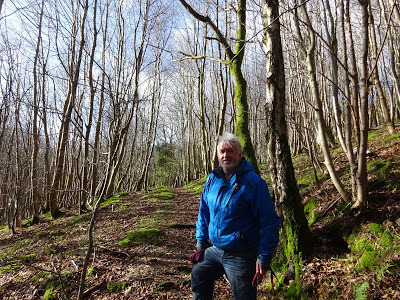
The eerie woods, into which Tom Fool lured so many of his victims.

We made it out again, but the castle doors remained closed.

The valley of the River Esk - as I say, Middle Earth.
THRILLERS, CHILLERS, SHOCKERS AND KILLERS …
An ongoing series of reviews of dark fiction (crime, thriller and horror novels) – both old and new – that I have recently read and enjoyed. I’ll endeavour to keep the SPOILERS to a minimum; there will certainly be no given-away denouements or exposed twists-in-the-tail, but by the definition of the word ‘review’, I’m going to be talking about these books in more than just thumbnail detail, extolling the aspects that I particularly enjoyed … so I guess if you’d rather not know anything at all about these pieces of work in advance of reading them yourself, then these particular posts will not be your thing.
 HARVEST HOME
HARVEST HOME
by Thomas Tryon (1973)
When budding artist, Ned Constantine, his wife, Beth, and young teenage daughter, Kate, leave the hustle and bustle of New York for a quieter, healthier life in the remote Connecticut village of Cornwall Coombe, they believe that they’ve embarked on a new and more positive phase of their marriage.
The Coombe, a farming community where the emphasis is on raising corn, is literally idyllic, especially when the Constantines first set eyes on it one gorgeous summer. However, they have some reservations. To start with, the villagers, though friendly, are stuck in their ways, resisting mechanisation out in the fields and showing little interest in events beyond their borders.
They also have more than their fair share of eccentrics:
Mary ‘the Widow’ Fortune is a dominant force. Something of a grand dame in Cornwall Coombe and hugely knowledgeable about local tradition and the ways of the woods, especially the supposedly haunted Soakes’s Lonesome, she is dour-looking and permanently black-clad, but is initially welcoming to the Constantines and proves a life-saver when, using her prodigious knowledge of herbal remedies, she succeeds in pulling Kate out of a potential fatal asthma attack.
More troublesome is Tamar Penrose, the lusty village post-mistress, who takes a shine to Ned Constantine at an early stage, though she is already the (single) mother of young Missy Penrose, a distant and seemingly disturbed child, who many of the locals regard as a seer. Then there is the Soakes clan, a bunch of hillbilly-type moonshiners who live just beyond the Lonesome, and yet who, though they appear to pose a threat to the picturesque lifestyle of the Coombe, are not especially feared.
For all this, the Constantines are soon comfortable in their newly-acquired 200-year-old cottage, becoming good friends with the blind scholar, Robert Dodd, and his homely wife, Maggie, who live next door, with chirpy local pedlar, Jack Stump, who only comes around occasionally, with a hunky young farmer, Justin Hooke, and his beautiful wife, Sophie, and with young handyman, Worthy Pettinger, who finds himself stifled living here and wants to get out and see the world.
And it is this latter character who, in due course, spells trouble for Ned Constantine.
To begin with, the pageantry of village life – which is filled with fêtes and festivals, all built around rituals designed to keep the crops healthy (the village has terrible memories of barren periods called ‘wastes’) – seems quaint and charming, and the most important of these, Harvest Home, is coming up shortly. Justin Hooke, it seems, is Cornwall Coombe’s incumbent ‘Harvest Lord’, a ceremonial role, which for seven years carries both advantages and responsibilities, while Sophie is his ‘Corn Maiden’. Both will have prominent roles in the upcoming ‘Corn Play’, though these are not openly discussed. As this year’s event will mark the end of Justin’s tenure, Worthy Pettinger is being groomed to take over, though this is an honour he doesn’t seek – in fact, he seems alarmed by the prospect, and when Ned takes the youngster’s side in the argument, he is surprised by the degree of hostility it causes.
Other weird events also distract him. For example, when he finds a curious homemade doll on Justin’s land, he is advised not to speak of it. Likewise, when one evening, both he and Beth are entranced by elfin music out on the fields, and the sight of two curiously clad figures performing a sensual moonlit rite, no one will admit to knowing who they were or what they were doing. More sinister by far, Ned then locates a human skeleton in the Lonesome, and when he goes to look for it again, it has been removed; he can’t help but associate this with the mysterious story of Gracie Everdeen, a former village beauty who, some 14 years earlier, was expected to be the Corn Maiden, only to inexplicably do away with herself (Ned increasingly wonders if she actually did commit suicide, or maybe was murdered). Most shocking of all though is an unexplained attack on Jack Stump, which leaves him with his tongue cut out and his lips sewn together, though what really amazes Ned about this latter atrocity is the way everyone in town – including the constable – casually assume that the Soakeses are responsible, and yet take no further action.
All this time, while Ned finds himself growing apart from the villagers, Beth and Kate are drawn closer to them. Ned’s relationship with his wife isn’t helped when the wanton Tamar makes a move on him and he almost succumbs. Beth becoming mistrustful of him afterwards, seemingly certain that he was the instigator. But things only really come to a head when Worthy, tacitly encouraged in his rebellious behavior by Ned, disrupts a church meeting to loudly damn both the corn and ‘the Mother’, an abstract entity which, up to now, Ned has assumed is nothing more than a nod towards the old pagan concept of the Earth Goddess. However, there is deep consternation at this, and even though Worthy flees the village, he is later brought back by a posse and imprisoned in a room at the back of the post office.
Ned doesn’t actually know what will occur on the upcoming night of Harvest Home – all he’s ever told is that ‘no man may see, nor woman tell’ – but it now becomes apparent that it will be something terrible (as indeed it was with Gracie Everdeen). All alone now, abandoned by his wife and daughter, the ostracized but determined outsider continues his investigation, steadily (and ill-advisedly) drawing closer to the utter horror at the heart of Cornwall Coombe …
Harvest Home is an old book now, and yet still widely regarded as one of the best and most literary horror novels ever written. I wouldn’t completely fall in with that. It’s excellent in many ways, but it’s also a novel of its time.
If the basic concept seems dated, that’s because it is. Nowadays, though folk-horror is making a most welcome comeback, the notion that murderous matriarchal cults may lurk behind the polite façades of scenic British villages or quaint little New England towns is more likely to get you in trouble for being politically incorrect than to win you plaudits.
And in some ways, Harvest Home goes even further than that.
In the genre of the present, we are painfully aware that witchcraft fiction of the late-20th century was often more interested in heaving bosoms and devilish beauty than in examining the awful injustice and cruelty of the witch-hunting era, and was more than ready to believe that village folklore was a sign of Lucifer’s influence rather than a harmless tradition from bygone times. For all these reasons, horror authors of today would likely avoid penning a novel built around the premise of Harvest Home , but they’d also look to avoid some of the less obvious patriarchal attitudes here depicted.
Ned Constantine, for example, is not just handsome, intelligent and talented, he’s really the only moral person present. In contrast, his wife and daughter, Beth and Kate, surrender to their darker impulses far more easily.
Worthy Pettinger is another of the good guys, a kid with common sense, a straightforward all-American boy who yearns to be part of the modern world, which of course he should. And even the rest of the male villagers, while adding muscle to the villainy when it’s needed, are for the most part mulishly indifferent to the wiles of their women, happy to work the fields, drink in the tavern and chat amicably outside the church on Sundays. By comparison, their wives comprise a range of predators, from the happy home-maker, Maggie Dodds, whose everyday exterior conceals a cold-blooded schemer, to village temptress, Tamar Penrose, who is sinfully sexy (Ned Constantine certainly doesn’t hold himself responsible when he finally gives in to her charms – and brutalizes her in the process!), to the Coombe’s crowning evil: Mary ‘the Widow’ Fortune, who embodies all that ancient, forbidden knowledge that witch-hunters were so convinced lay in the grasp of women, and though maintaining a jovial, generous exterior, in actual fact controls and manipulates everyone, particularly the hapless men, who, in truth, she only thinks are good for ‘making the corn’.
Okay … as I pointed out, the novel is over forty years old, and comes to us from an age when sexism was the norm, particularly in the horror and thriller genres. So, while that doesn’t exactly give Thomas Tryon a pass in 2018, unless we are prepared to disown half the books ever written and half the screenplays ever filmed, it’s probably best not to get too upset about it.
The book has also dated a little in terms of its style – though this is less of a brickbat.
Harvest Home is a big novel, and even then, some might argue it takes a long time getting anywhere. But that isn’t to say that it’s not an enjoyable read.
Thomas Tryon has gone out of his way to create a living, breathing, fully functioning farming community, accounting for almost every aspect of its life in completely authentic detail. Unsurprisingly, this takes pages and pages and pages. He’s also fascinated by the folklore he’s investigating, so we get a lot of lectures woven into the dialogue, because wherever Ned Constantine goes in this book, he has things explained to him in patient, protracted fashion. It does become a bit tiresome after a while. I’d say you are roughly half way through before Harvest Home finally begins to pick up the pace, and it’s only in the final third when it fully adopts the mantle of horror novel.
But in truth, none of this is unpleasant. Tryon was a classical actor before he became an author, and clearly harks back to a literary tradition. As such, he produces beautifully-crafted prose, which he allows to flow and flow. It’s sumptuous stuff, particularly his descriptive work, which really transports you to rural New England during the early autumn. Though as I say, it goes on a little longer than it needs to.
But if the quality of the writing is one real positive, another is the narrative itself, which though suffering a little from those old-fashioned issues, is deeply intriguing. Though he drops in the clues slowly and irregularly, Tryon gradually builds a compelling mystery here, which, especially in the second half of the book, rises to some brief but spectacularly horrific climaxes: the deranged child, Missy, guzzling raw chicken guts, for example; Ned’s discovery of the horribly wounded Jack Stump; the appearance in Soakes’s Lonesome of an apparition, which terrifies both him and us; and then the ending of the book, which is without doubt one of the most bone-chilling scenes ever committed to paper.
But it isn’t just the horror. There’s also a freewheeling sensuality in this novel. Justin Hooke and Tamar Penrose portray the extreme ends of the gender spectrum quite fulsomely, he tall, handsome, muscular and, or so we are told, well endowed, she breathless, busty, red-lipped, with dark, lustruous ‘Medusa locks’. The antiquated concept of the virile Harvest Lord and his fertile Corn Maiden doubtless go back to the earliest days of pre-Christian fertility rites, and Tryon successfully re-evokes them in a 20th century setting.
Which brings me to the villain-in-chief, the Widow Fortune.
Everything I said before notwithstanding, the Widow makes for an outstanding antagonist, not least because for so much of the novel she is genuinely genial and wise (when Beth thinks she’s fallen pregnant, she naturally seeks the Widow’s counsel rather than going to see her doctor). It doesn’t surprise me in the least that Hollywood’s own high priestess, Bette Davis, was cast in this role when Harvest Home was successfully made as a TV mini-series in 1978. To be honest, I can’t think of another powerhouse personality who would have been better suited.
Anyway, that’s Harvest Home ; to many a folk-horror masterpiece, to others a well-intentioned but dated curiosity. Personally, I found it a little long-winded, but the quality of the workmanship is immense, and the story, though an old one now, in due course becomes deeply involving (and still boasts that most terrifying ending ever). I think it probably does deserve the epithet ‘classic’.
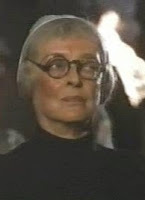 As you may know, I always like to end these book reviews with some fantasy casting, picking the actors that I myself would like to see portraying the key characters in any film or TV adaptation. However, Harvest Home will have to be another one of those occasional exceptions to the rule, because, as previously stated, it was filmed in 1978 as The Dark Secret of Harvest Home, starring Bette Davis (left). Given that it was quite faithful to the novel, I don’t see any point in having a go at it myself (and again, I can’t imagine anyone taking the role of the Widow who’d do a better job of it than the late, great Ms. Davis).
As you may know, I always like to end these book reviews with some fantasy casting, picking the actors that I myself would like to see portraying the key characters in any film or TV adaptation. However, Harvest Home will have to be another one of those occasional exceptions to the rule, because, as previously stated, it was filmed in 1978 as The Dark Secret of Harvest Home, starring Bette Davis (left). Given that it was quite faithful to the novel, I don’t see any point in having a go at it myself (and again, I can’t imagine anyone taking the role of the Widow who’d do a better job of it than the late, great Ms. Davis).
Published on February 18, 2018 01:48



